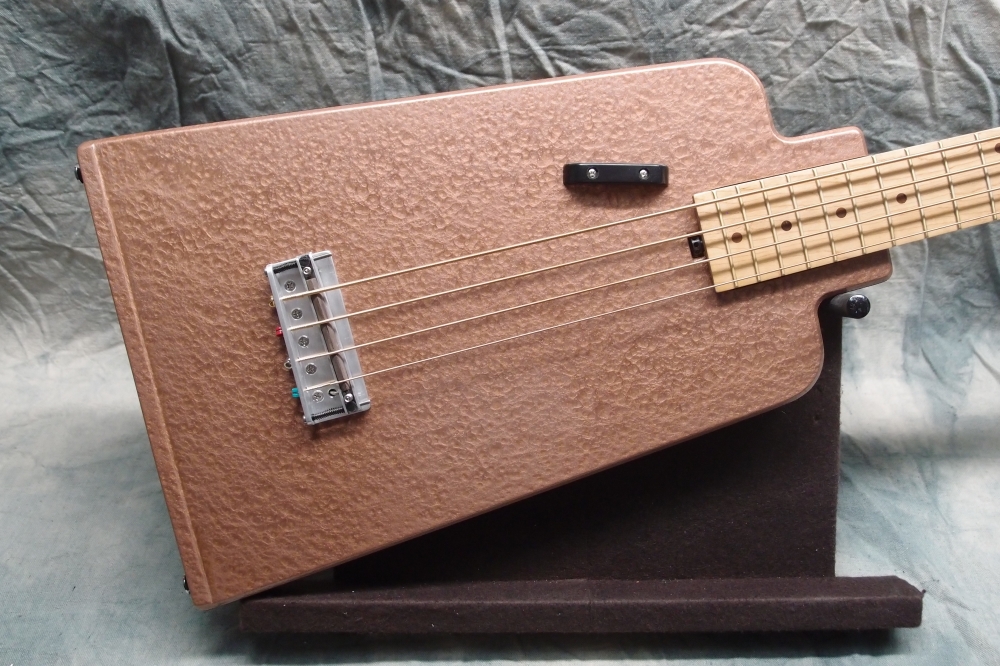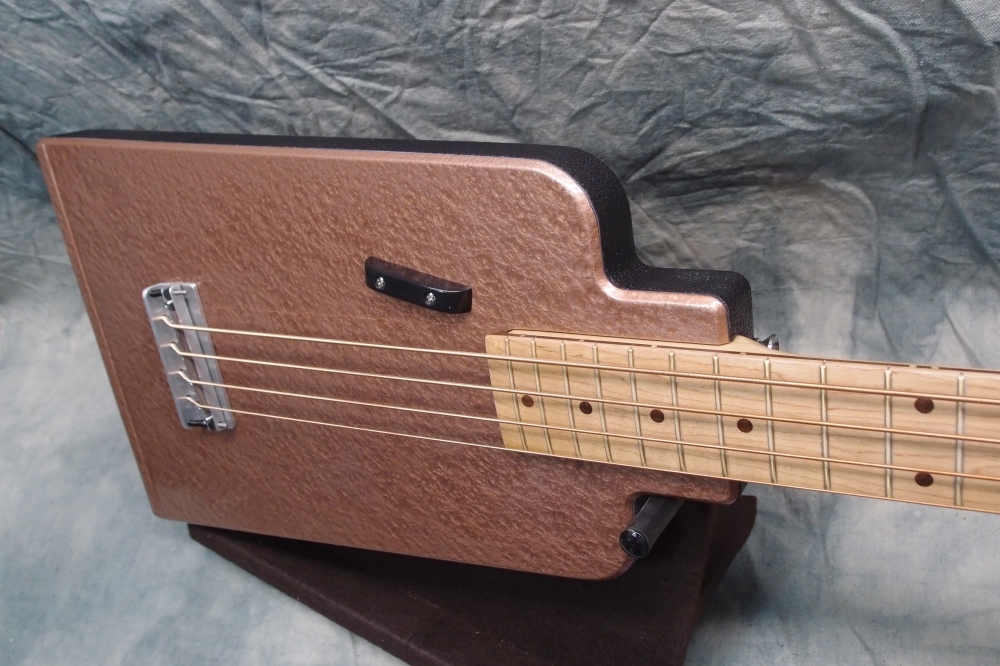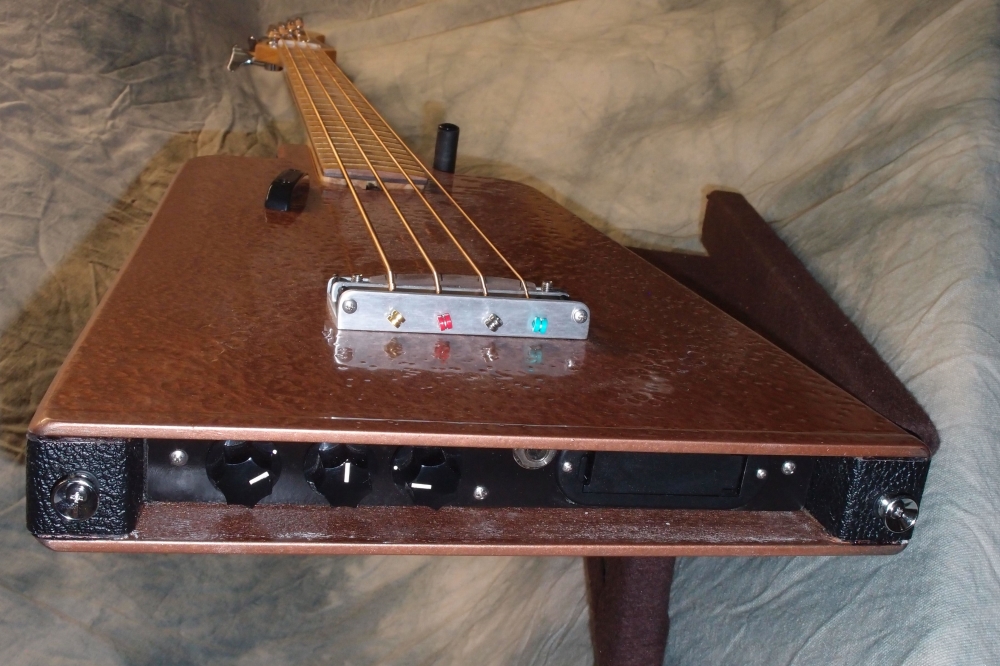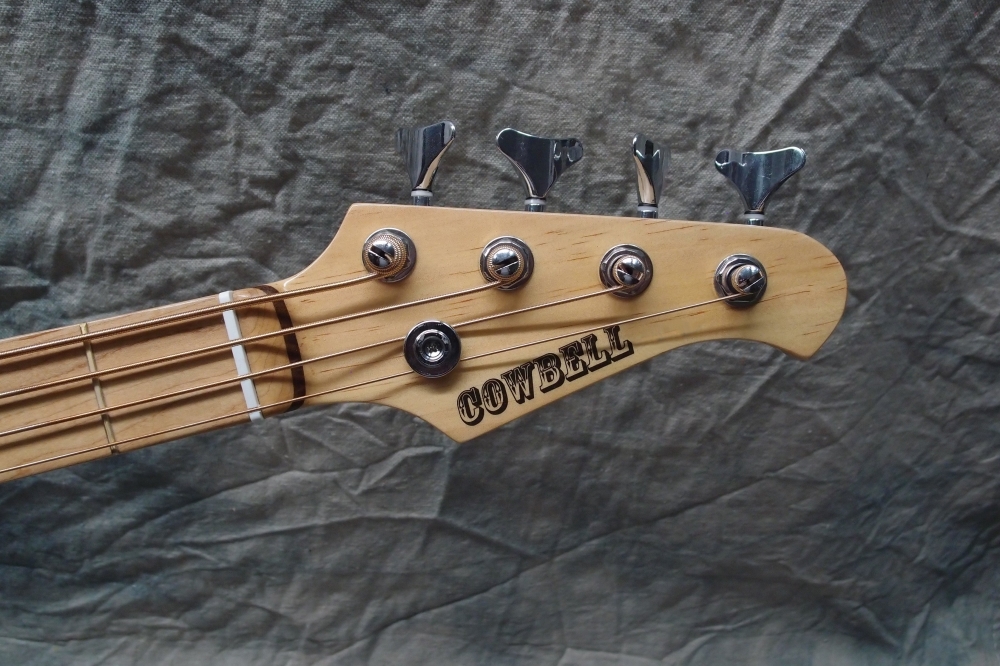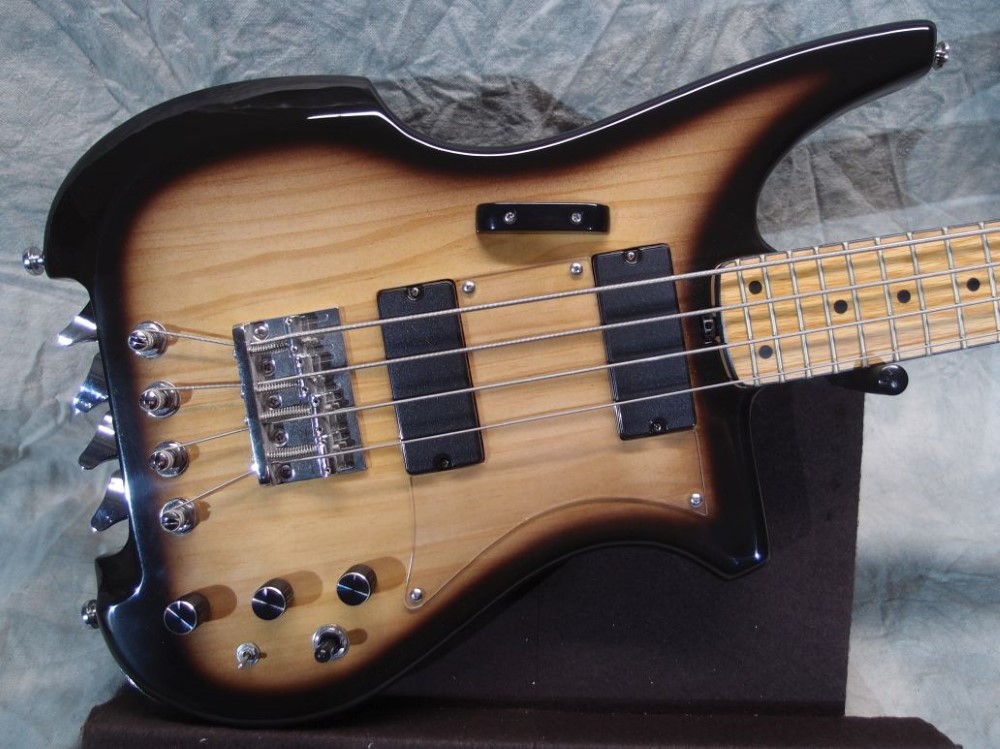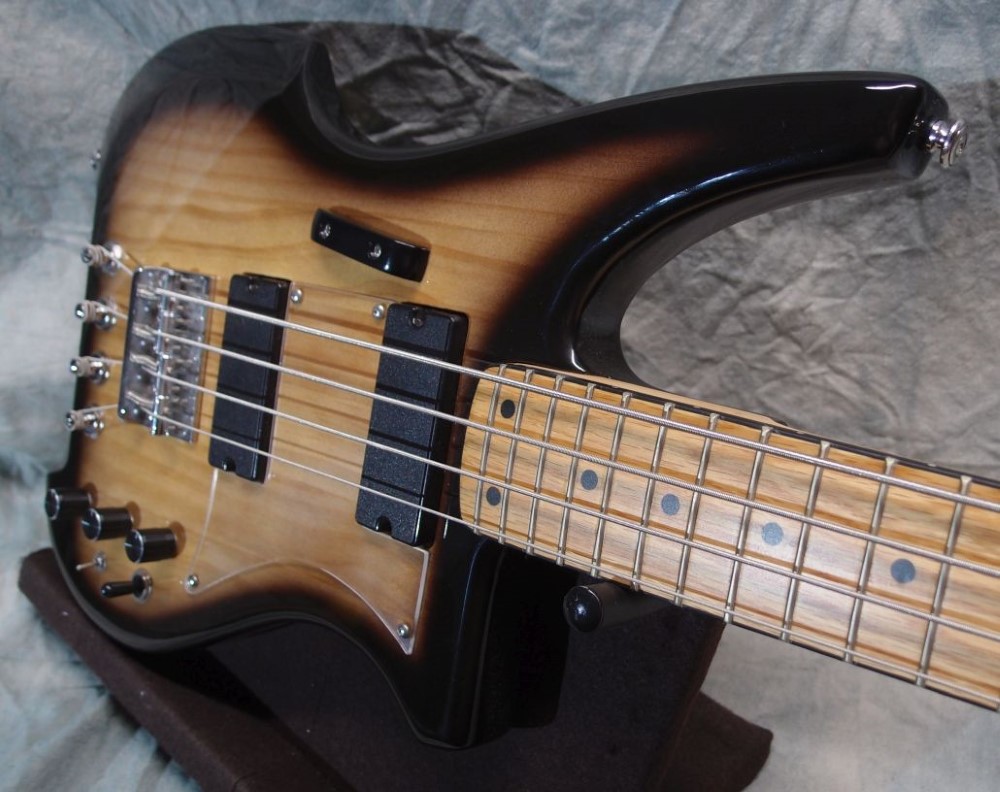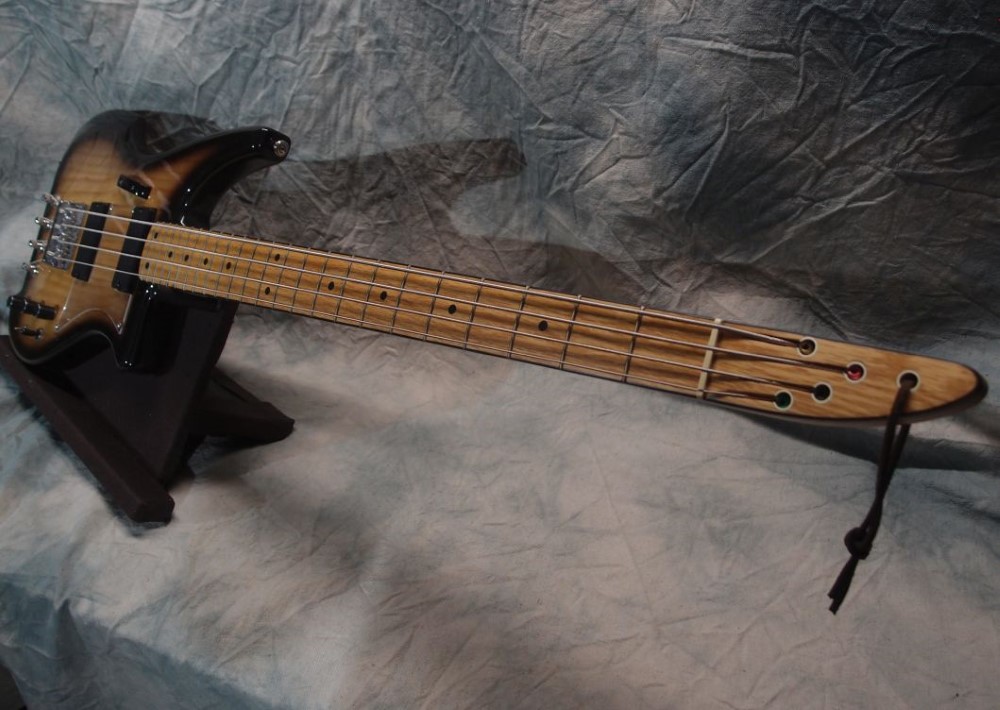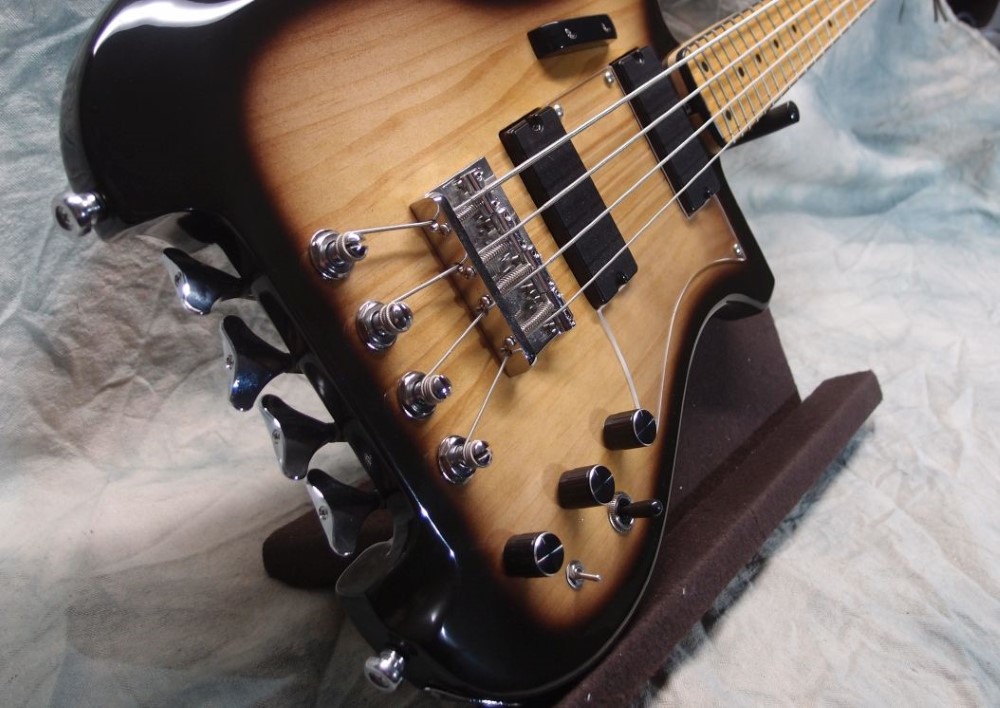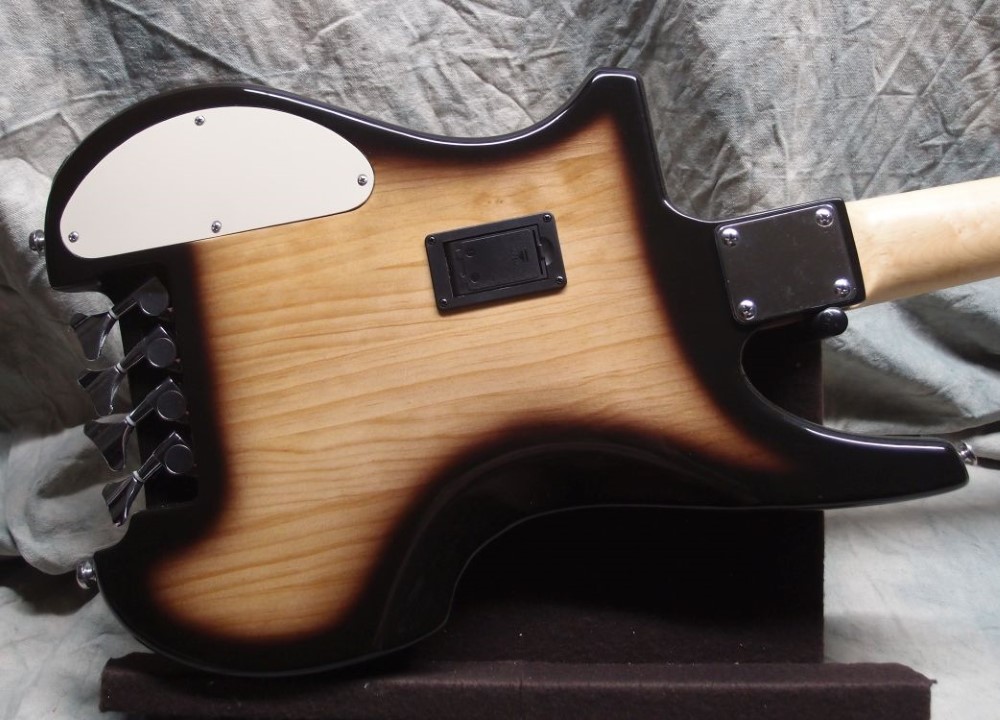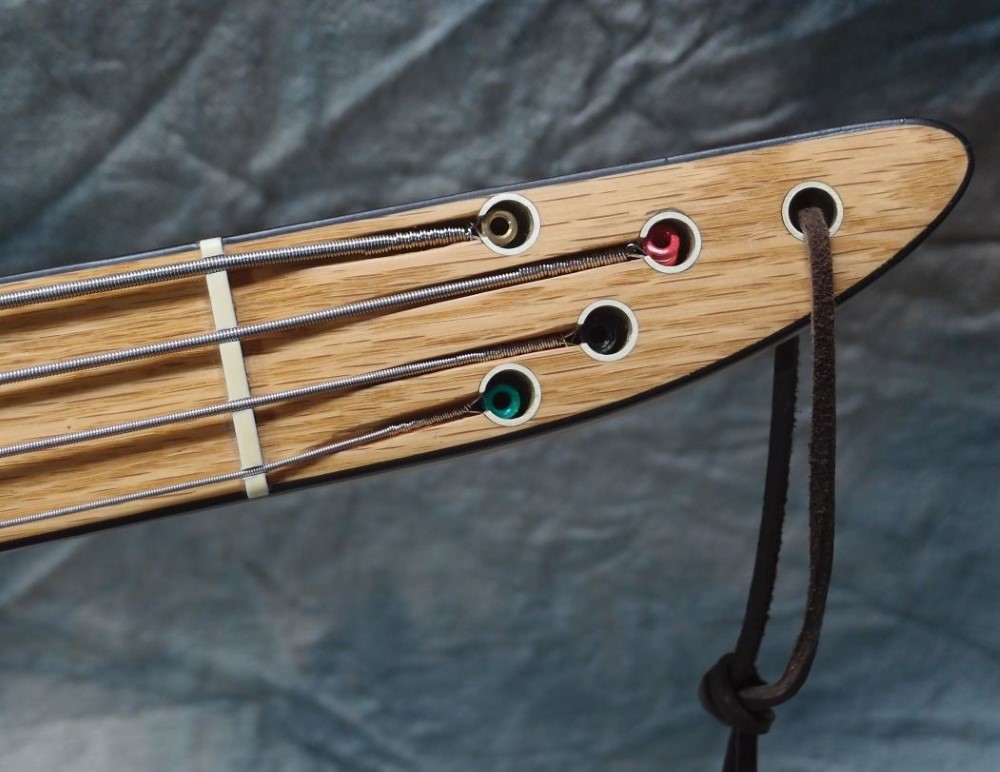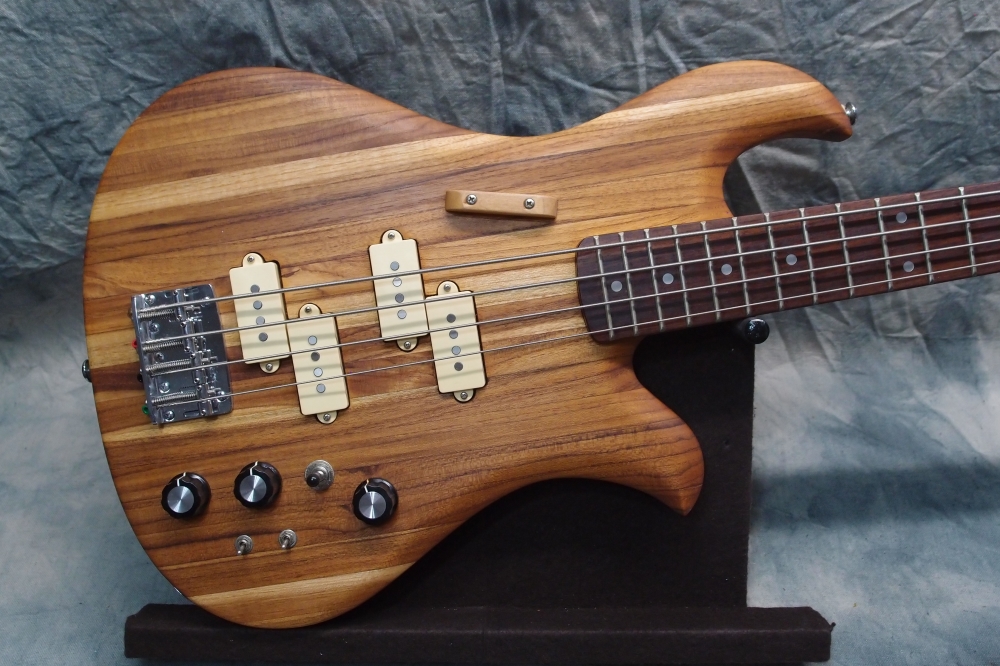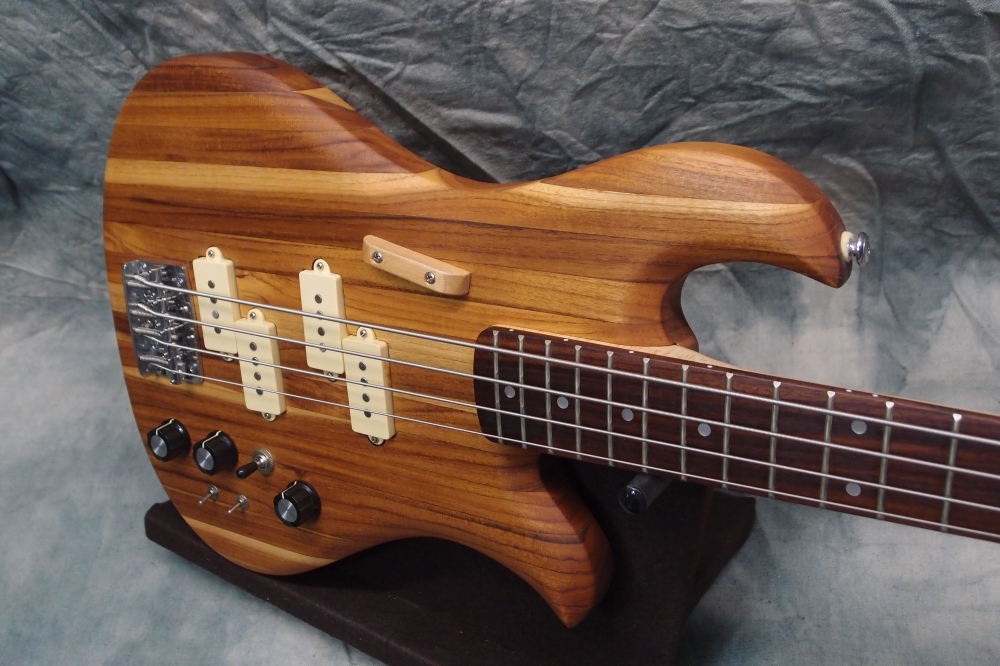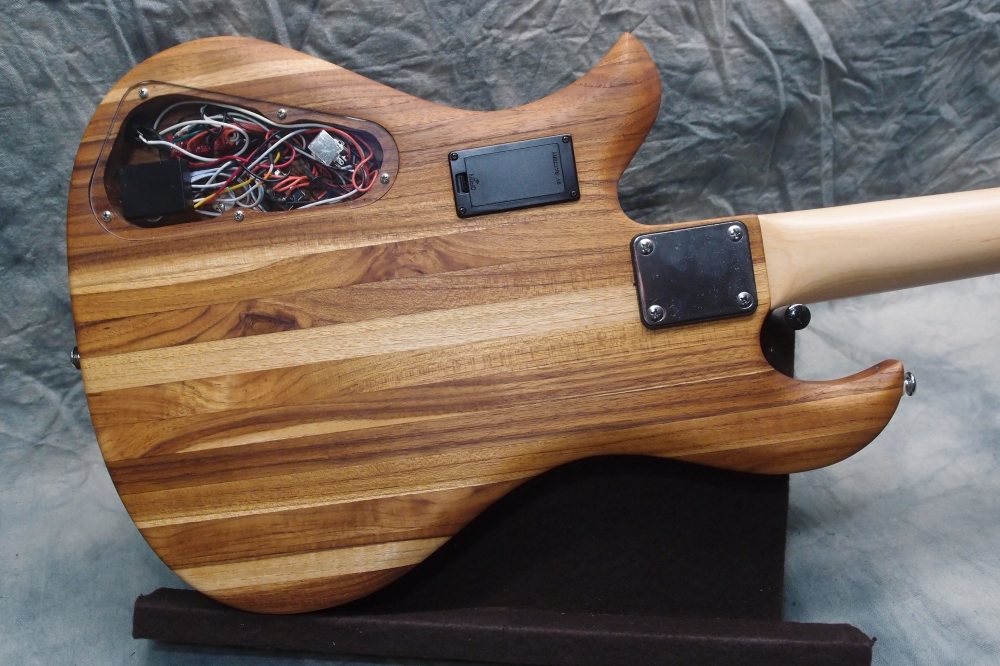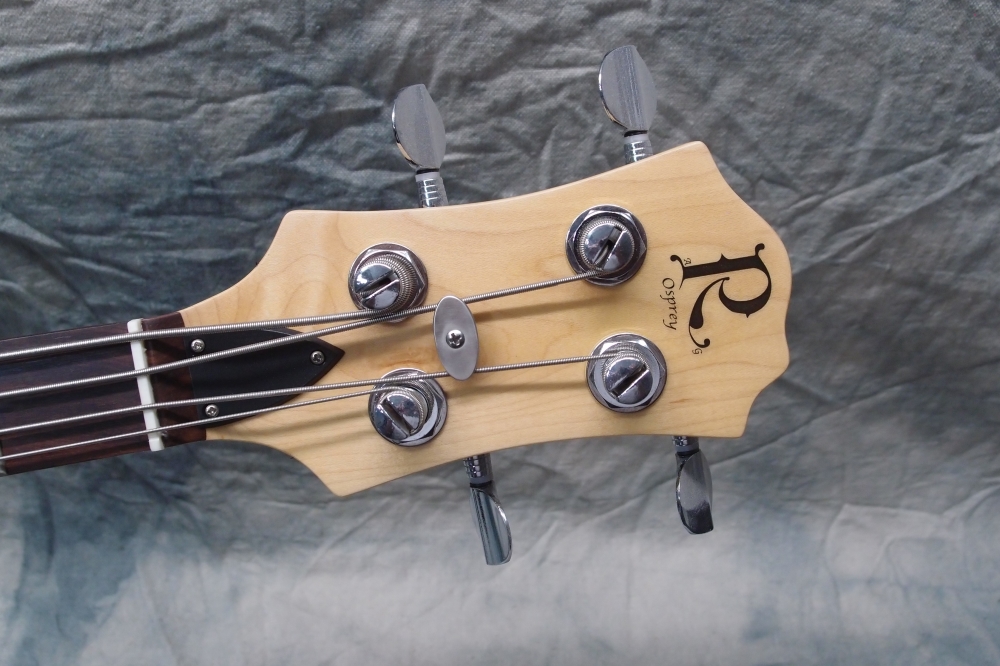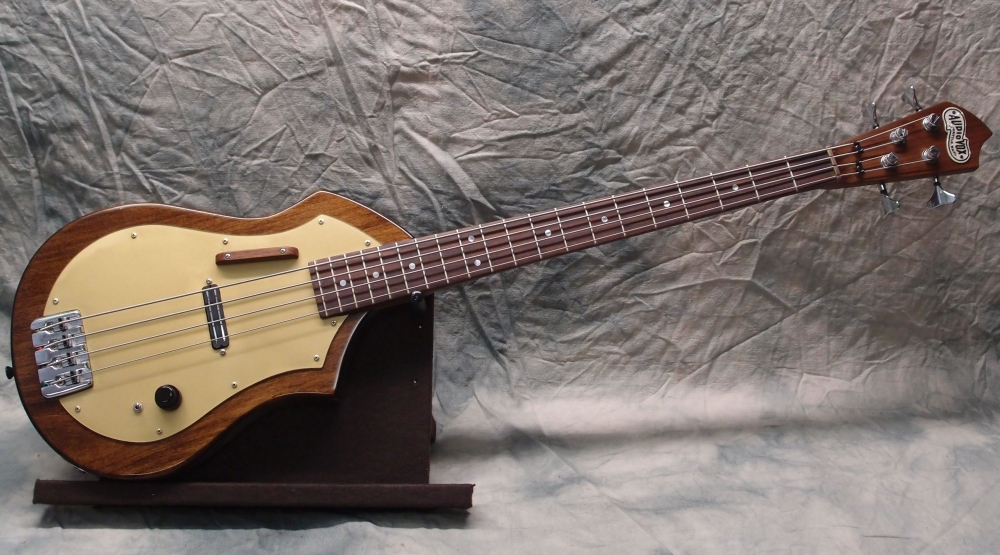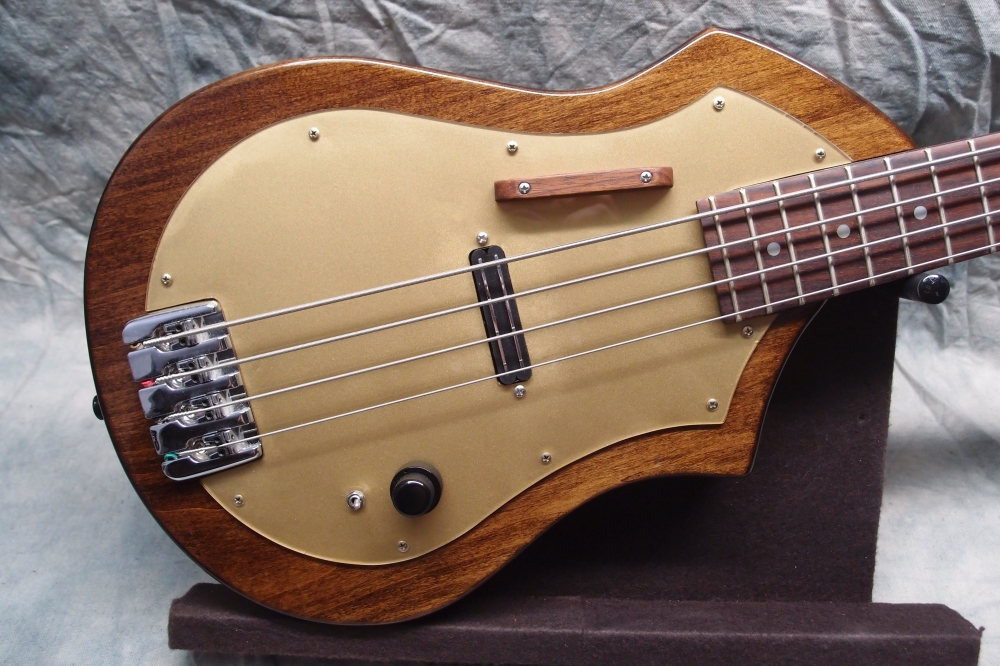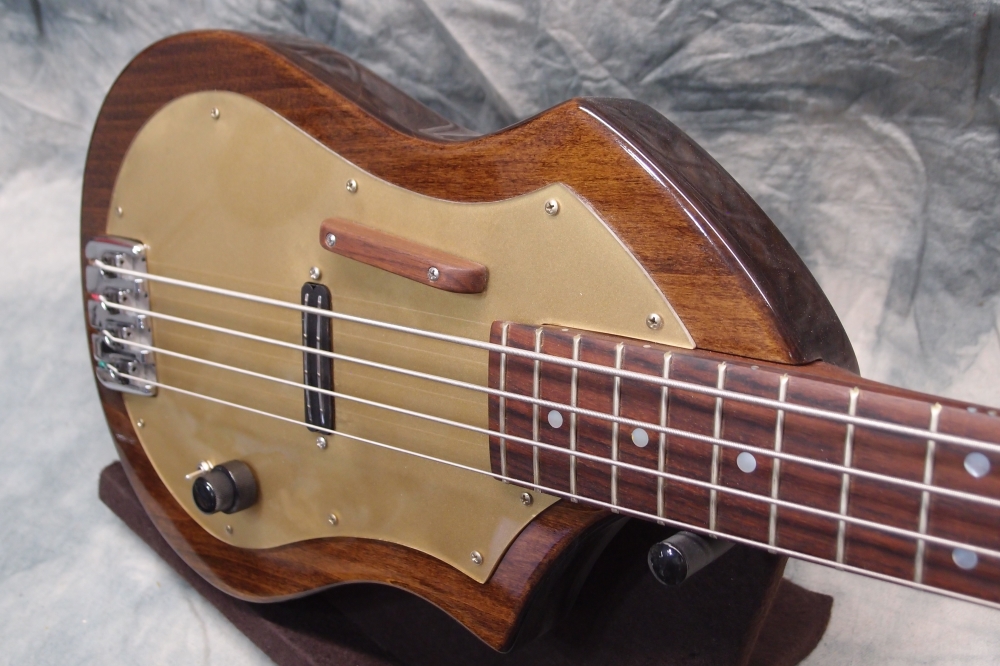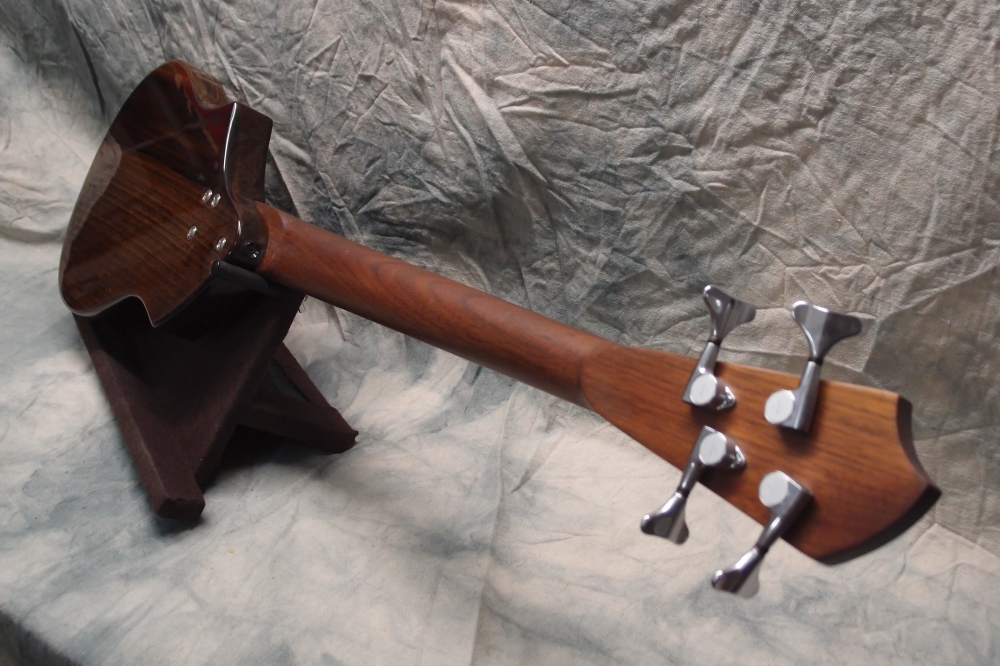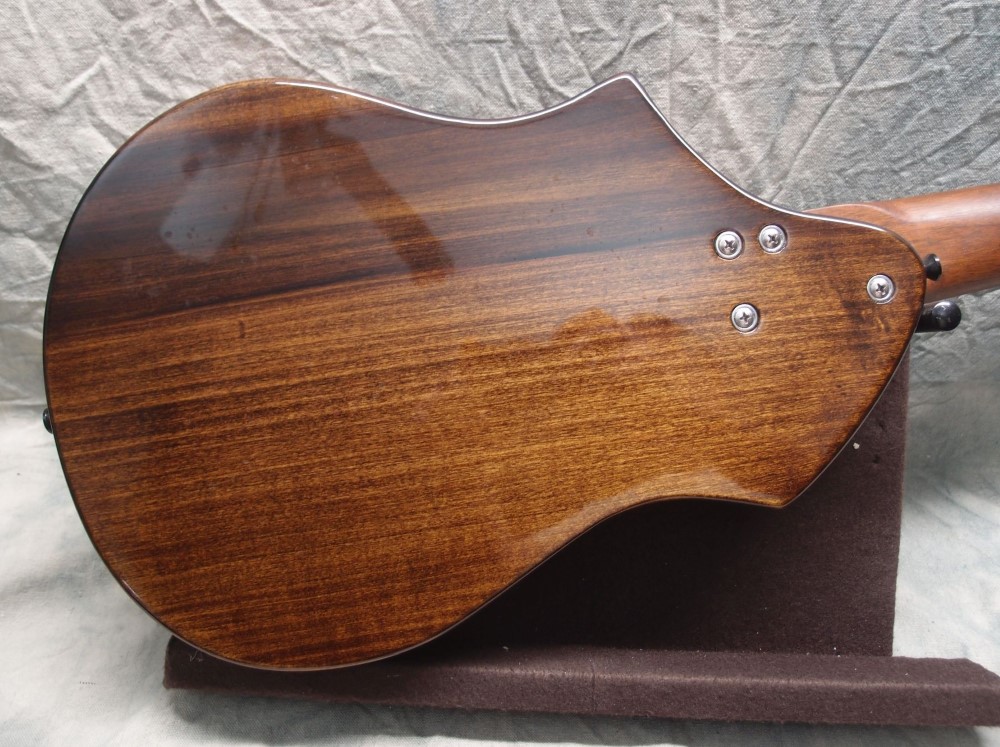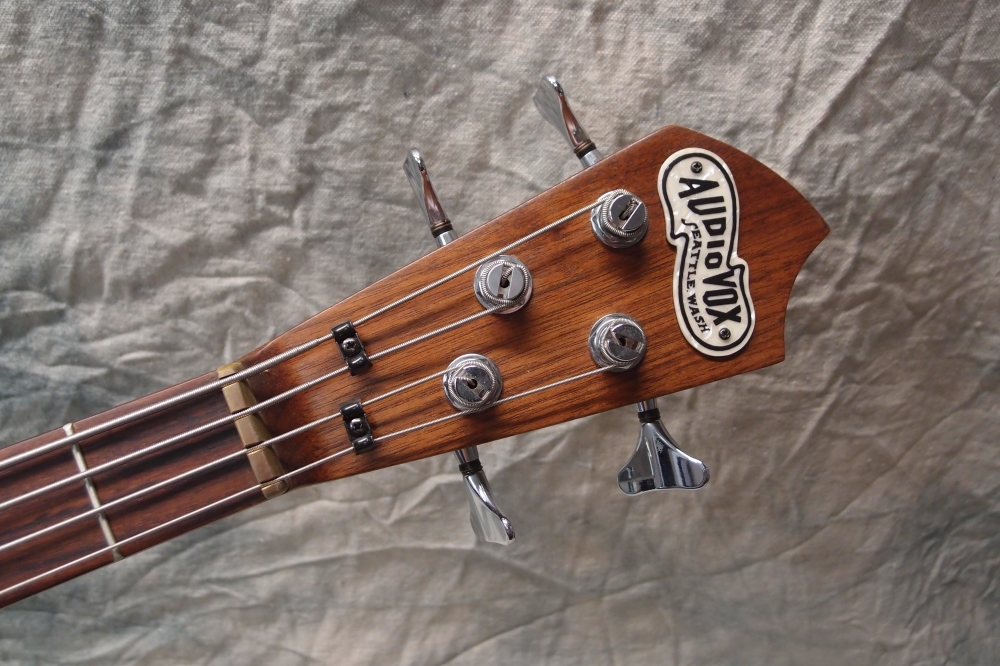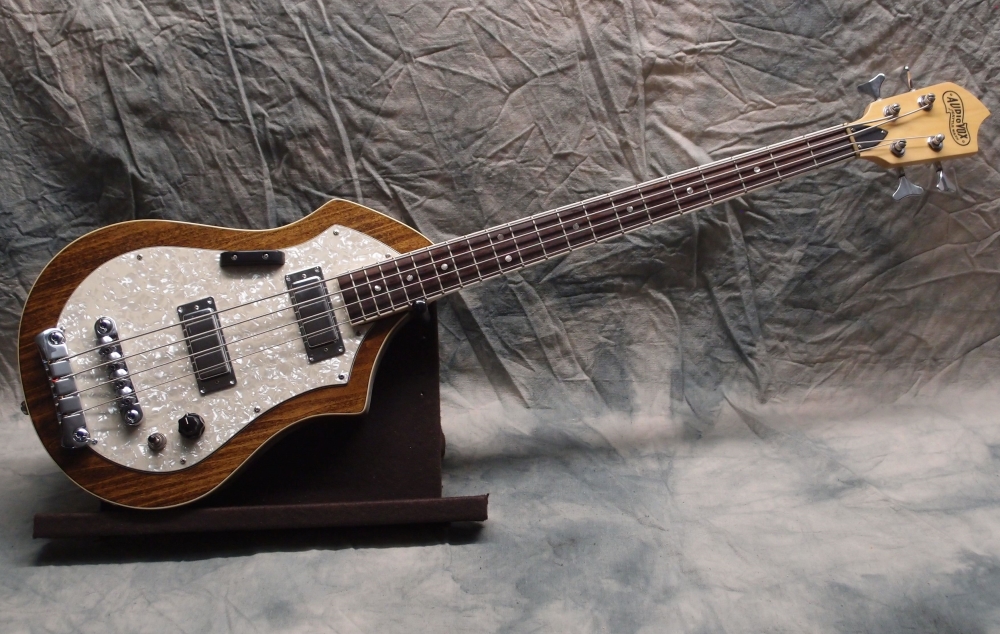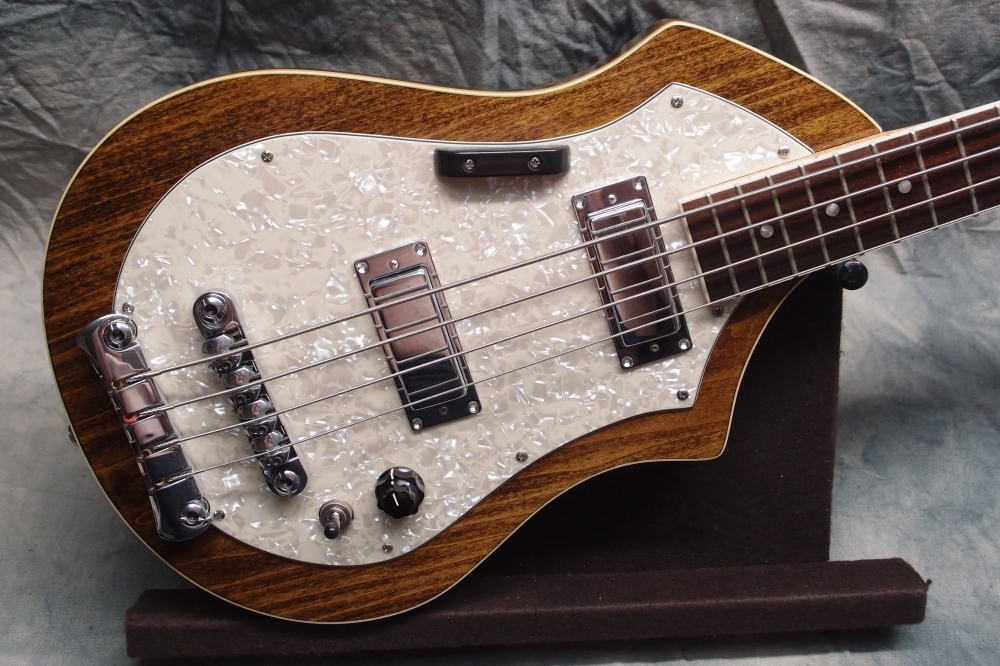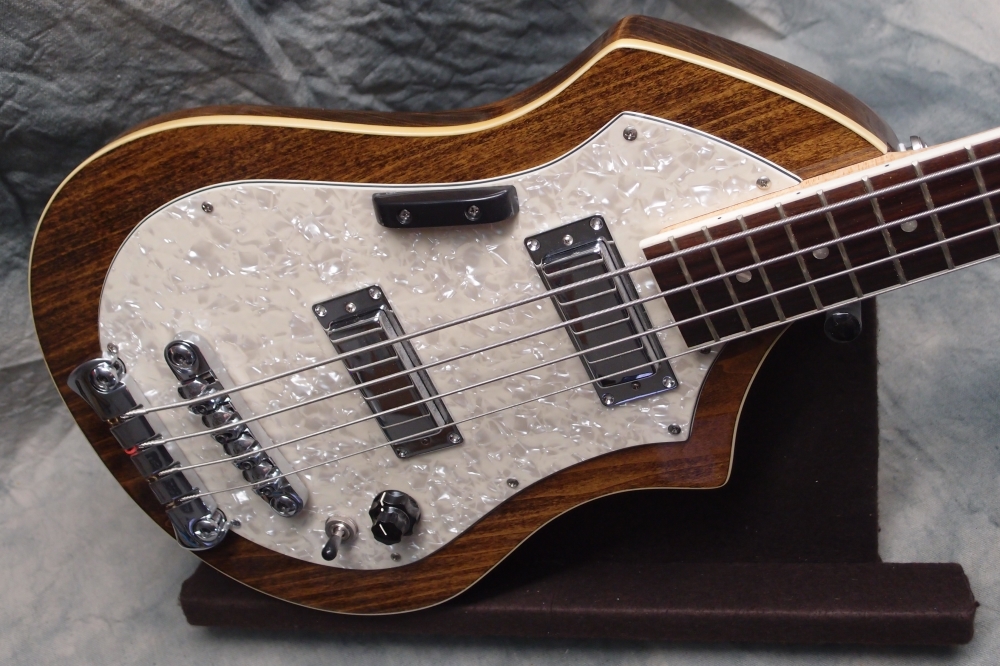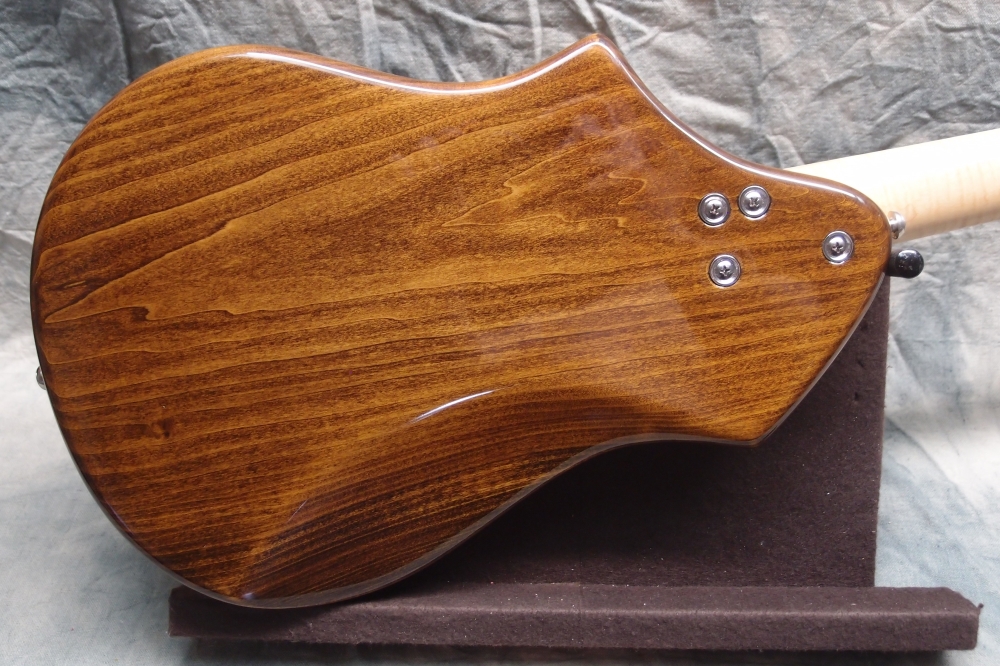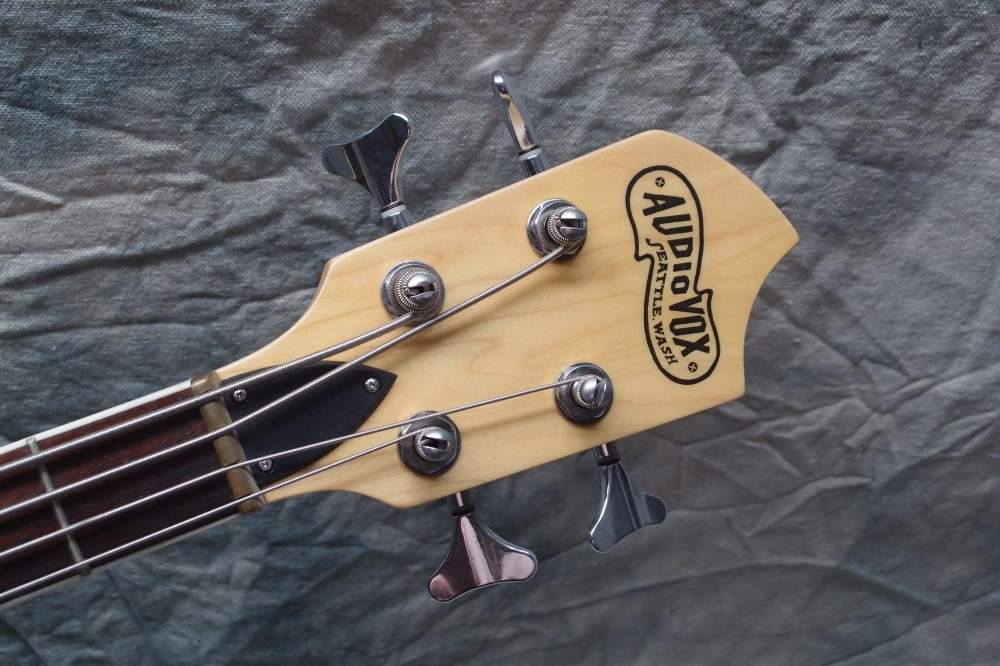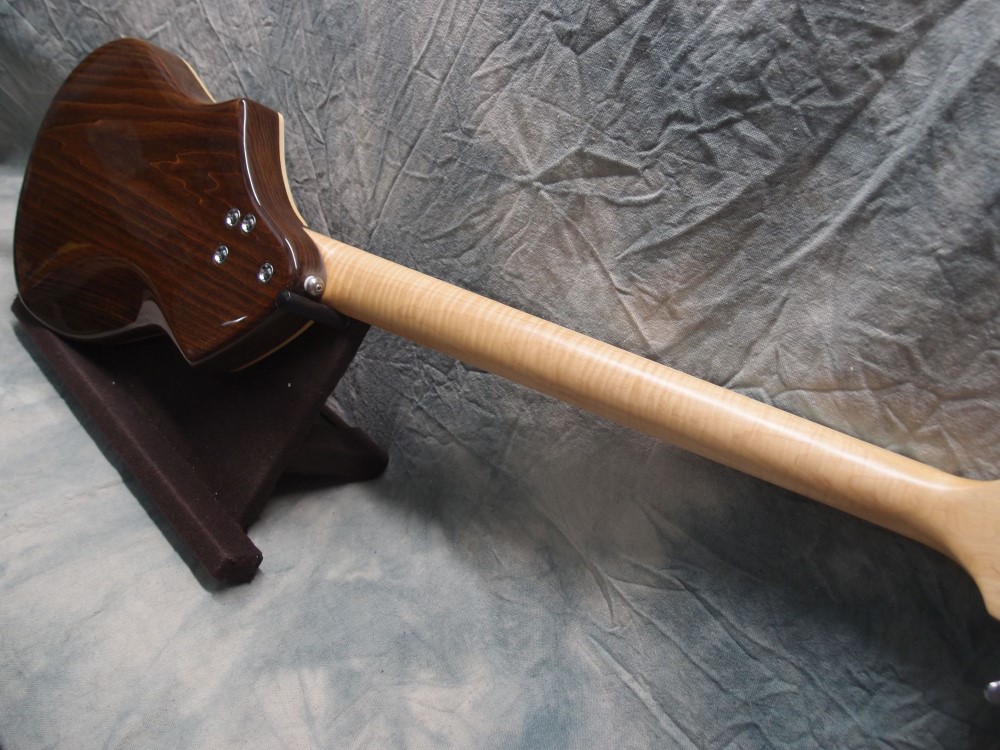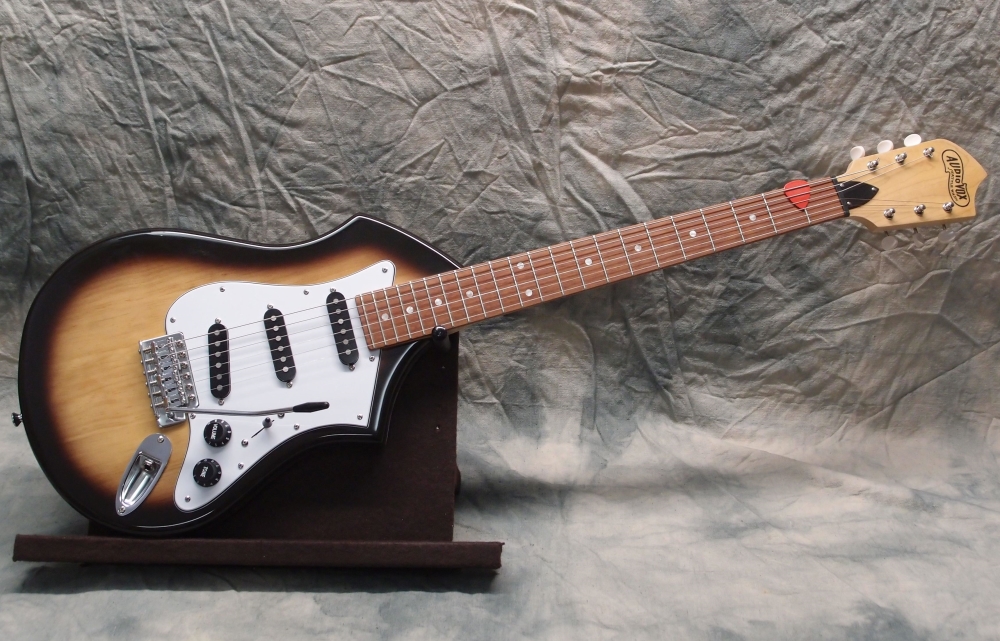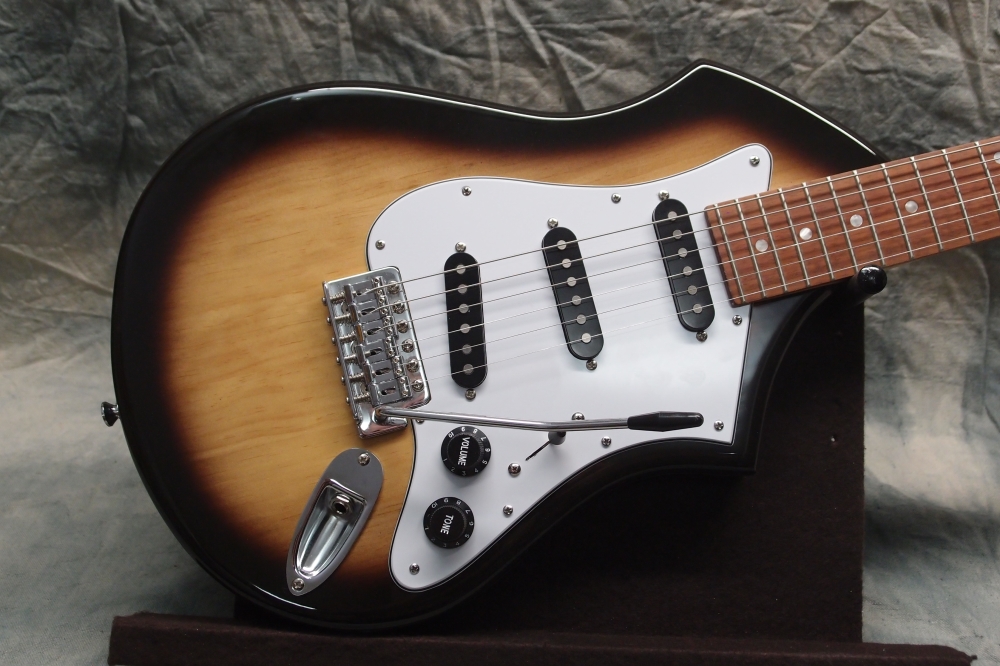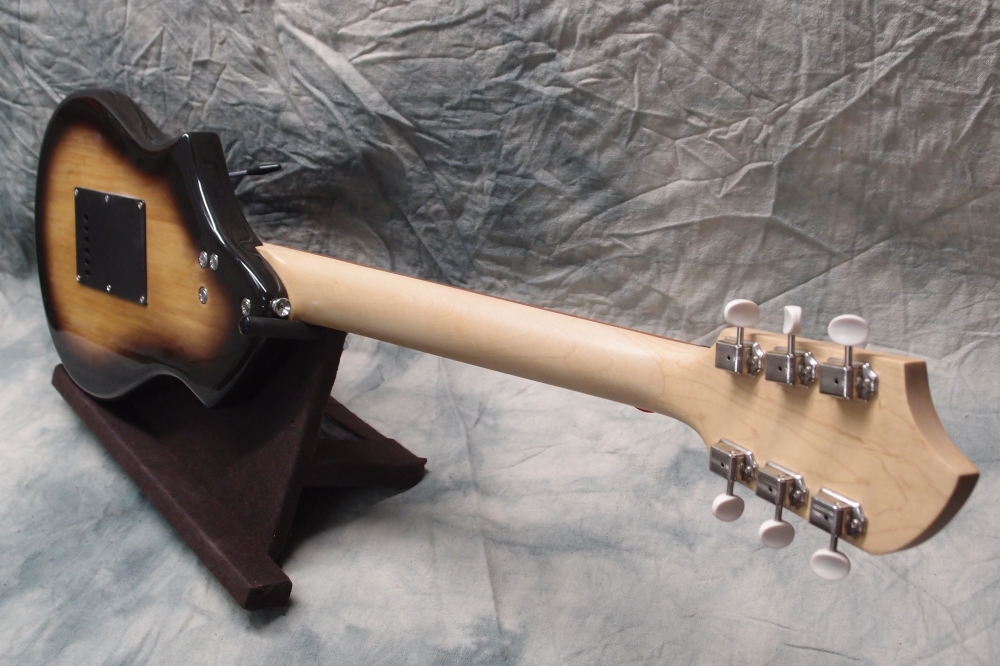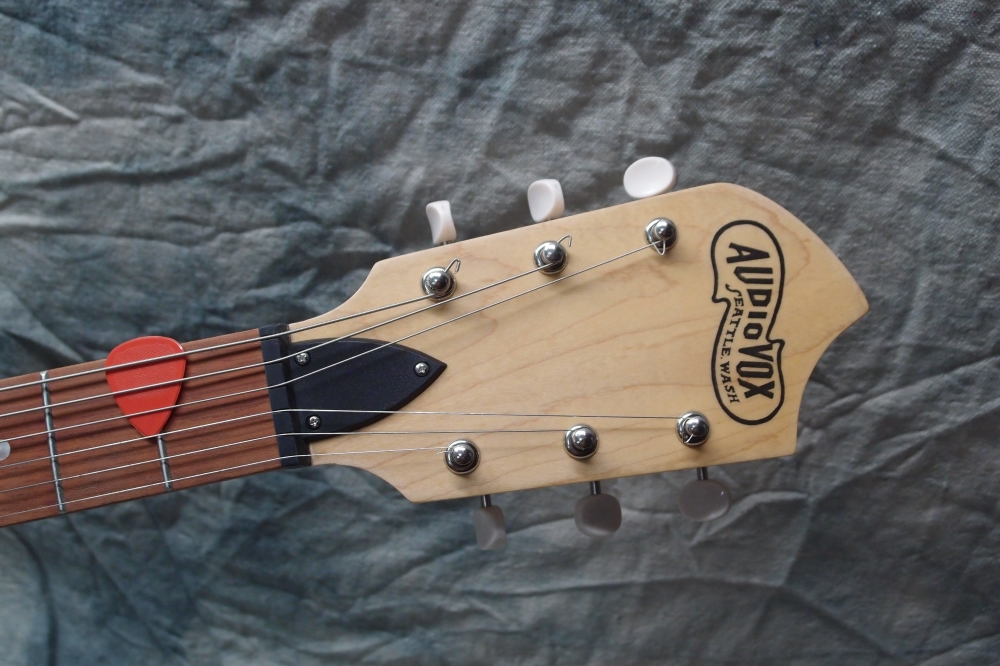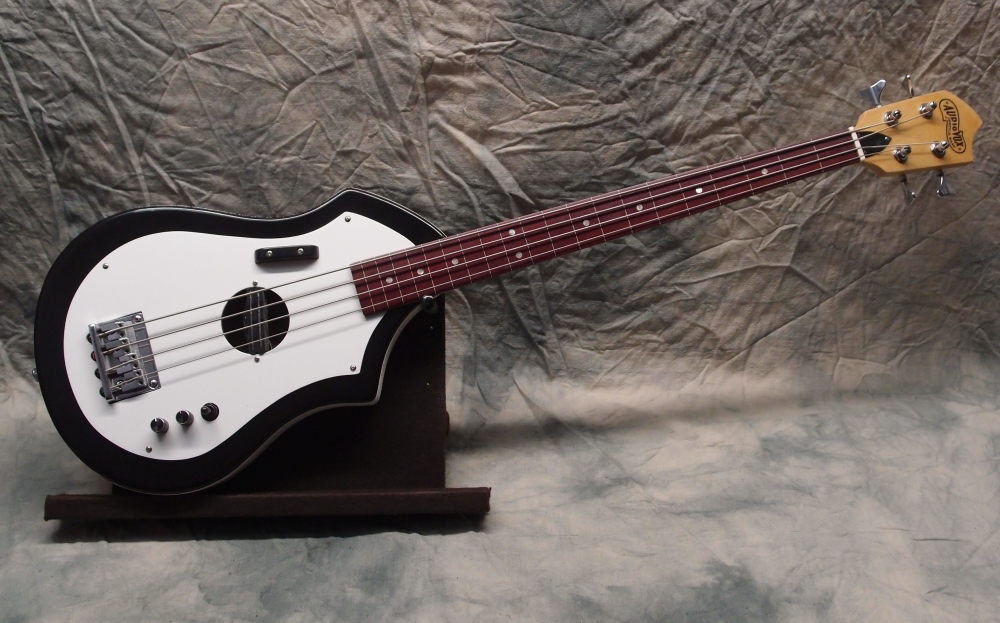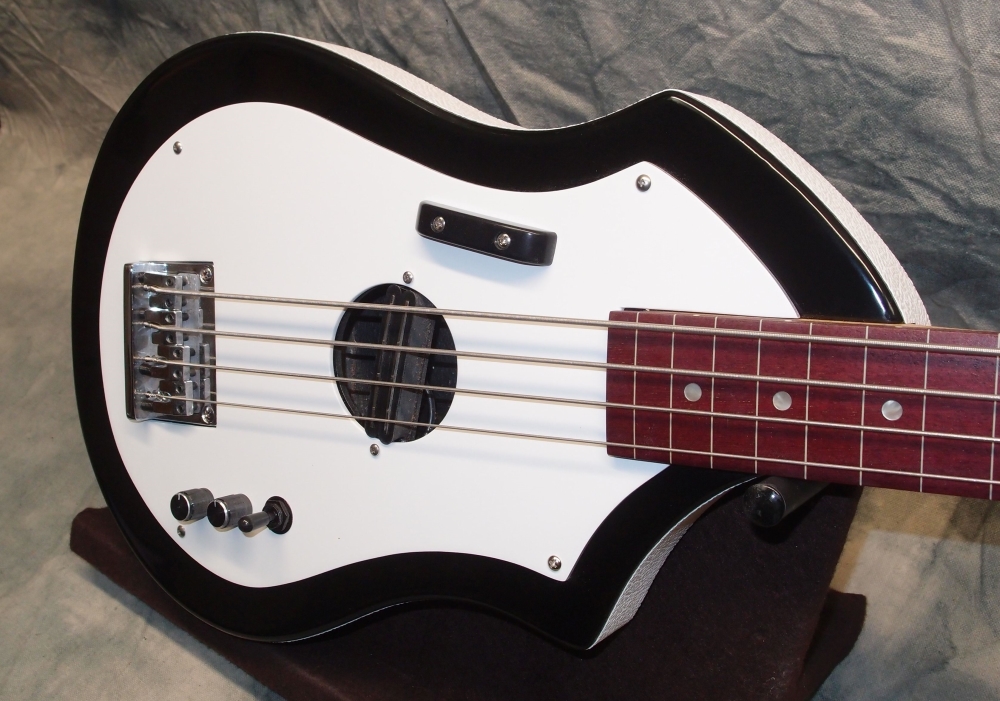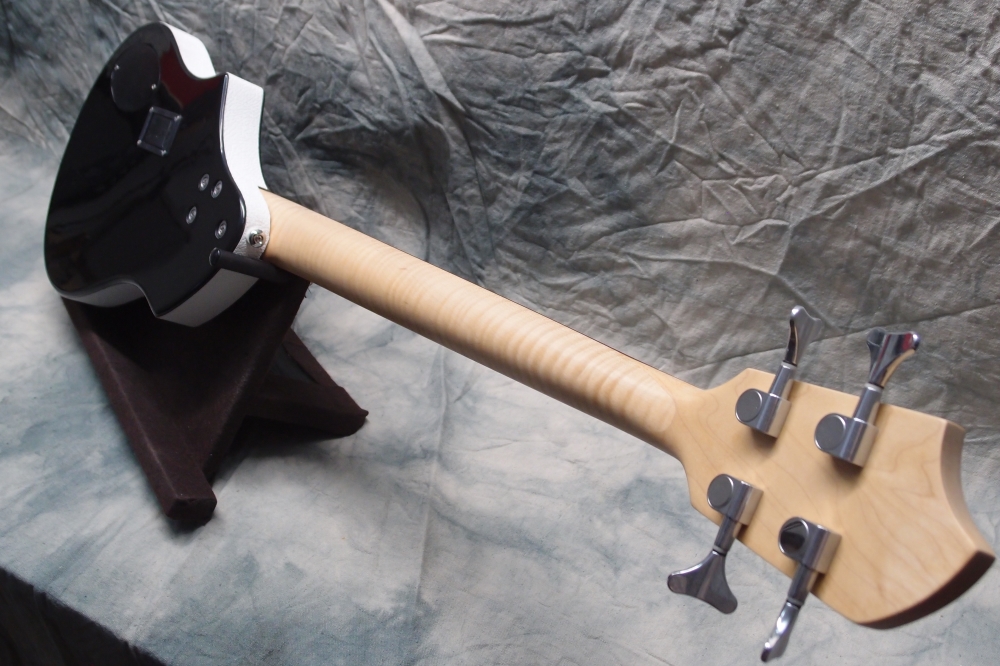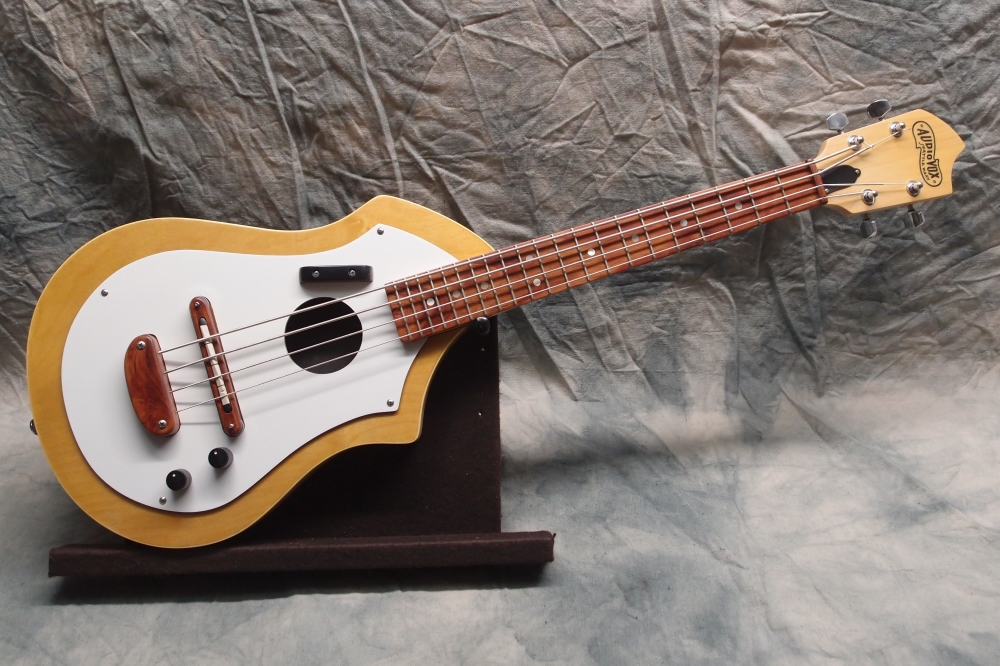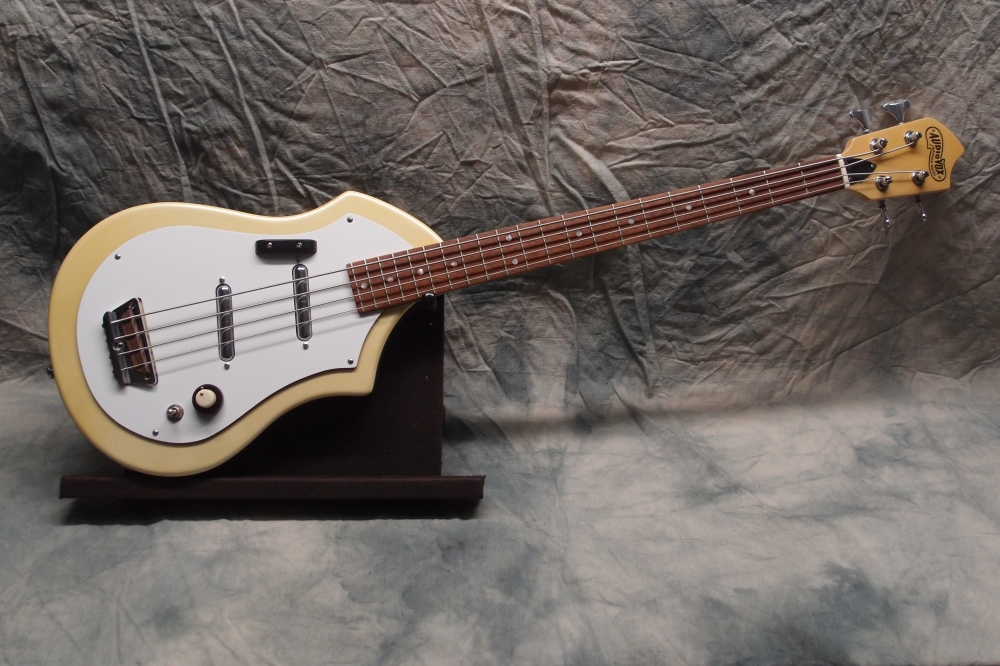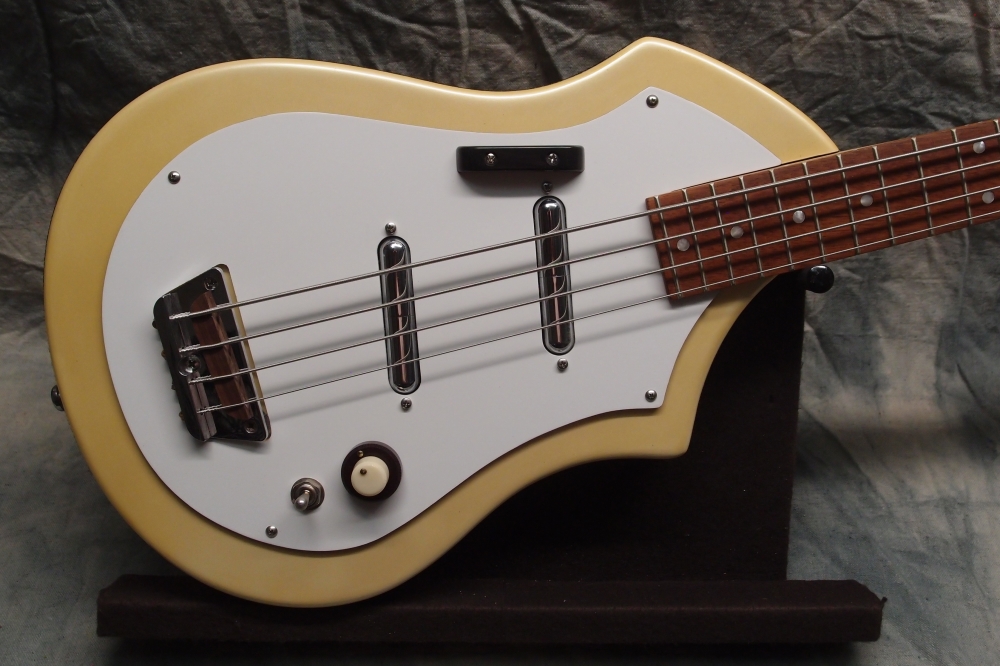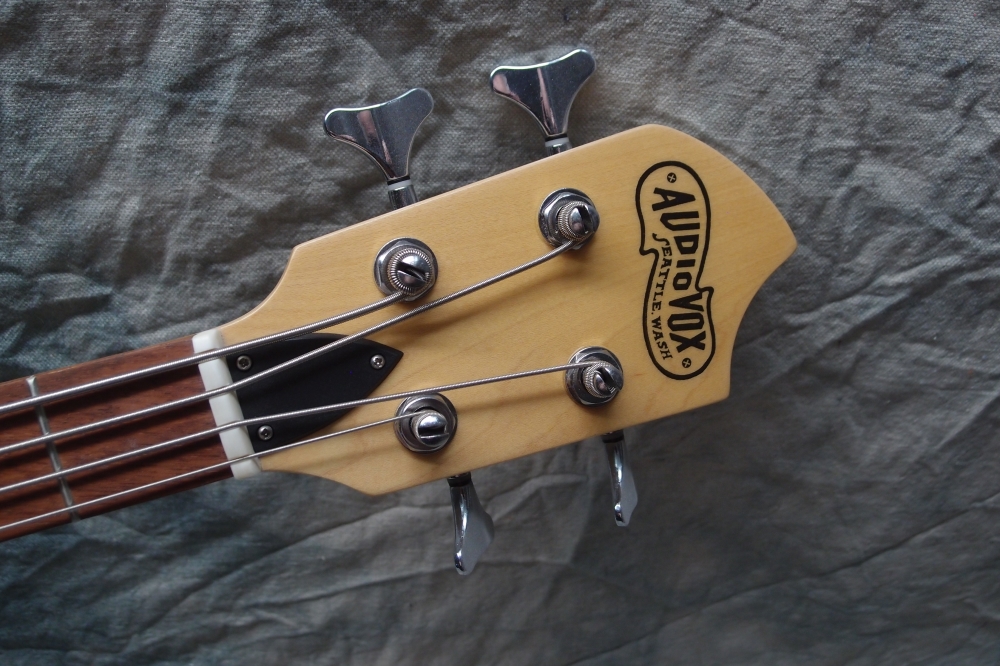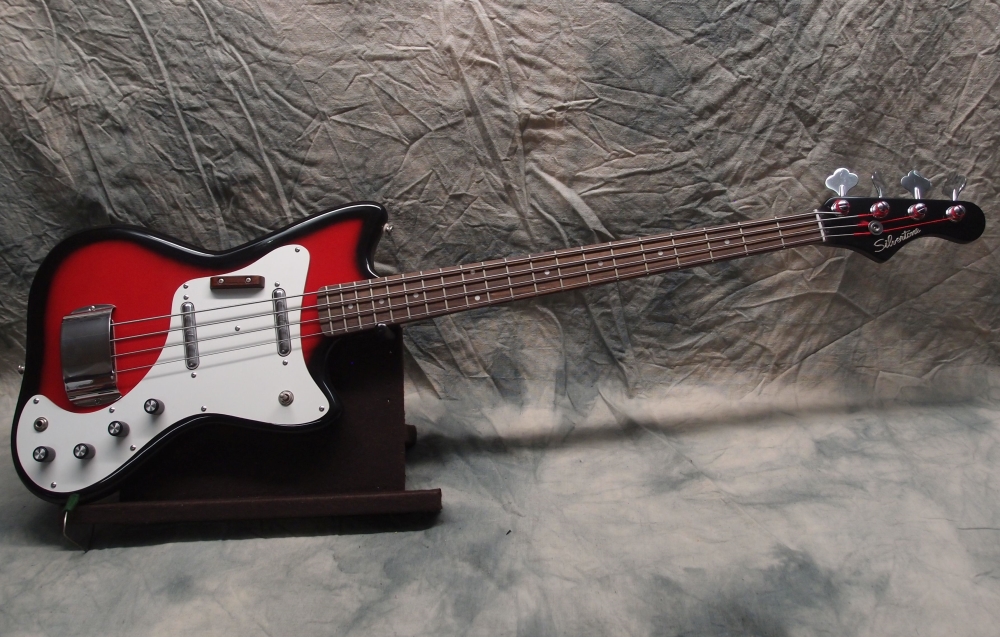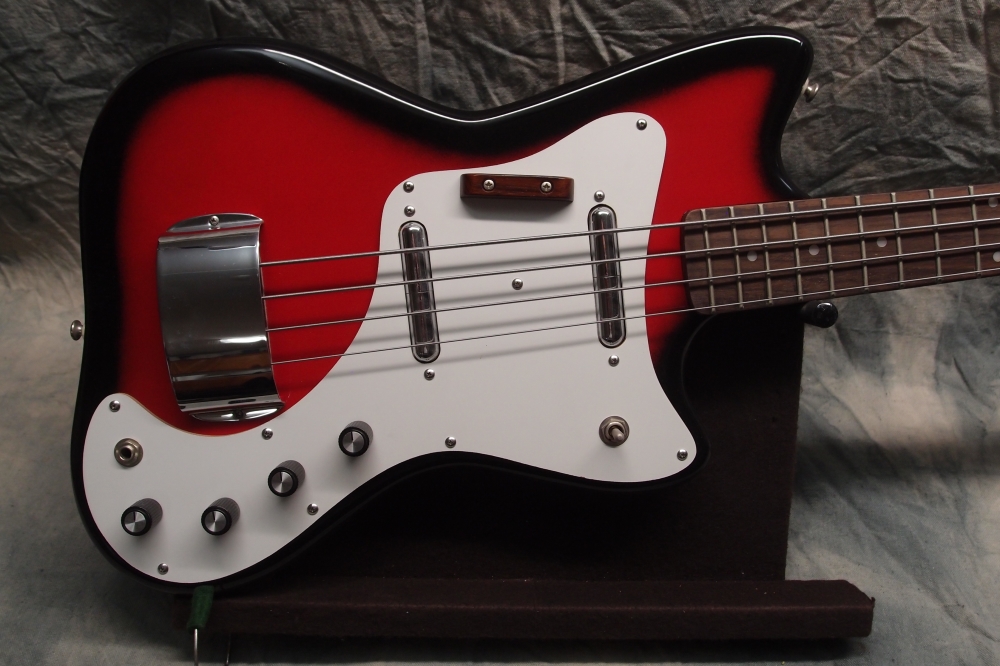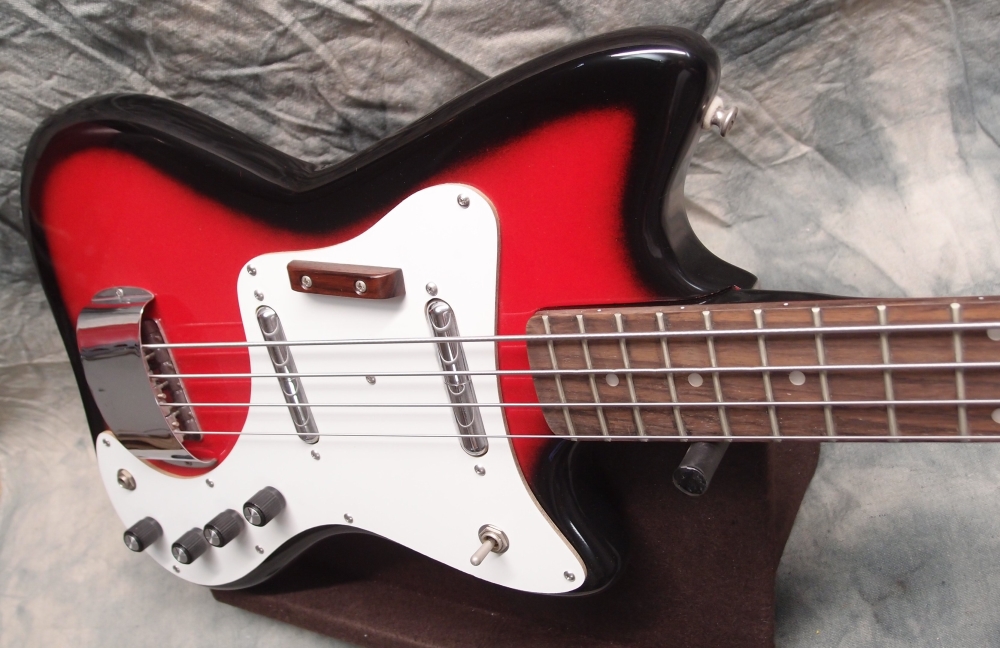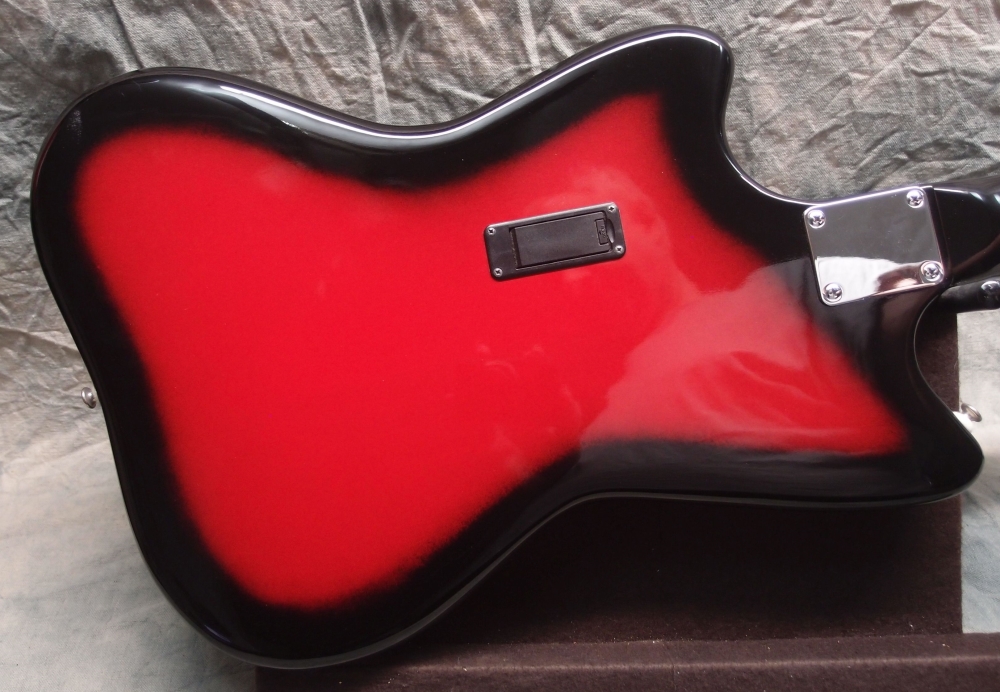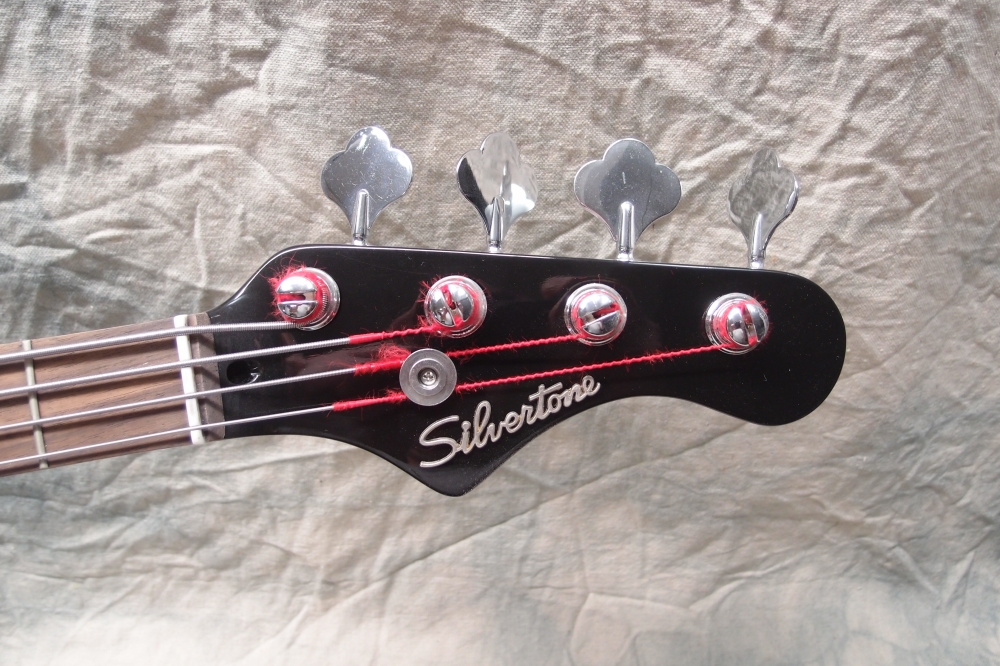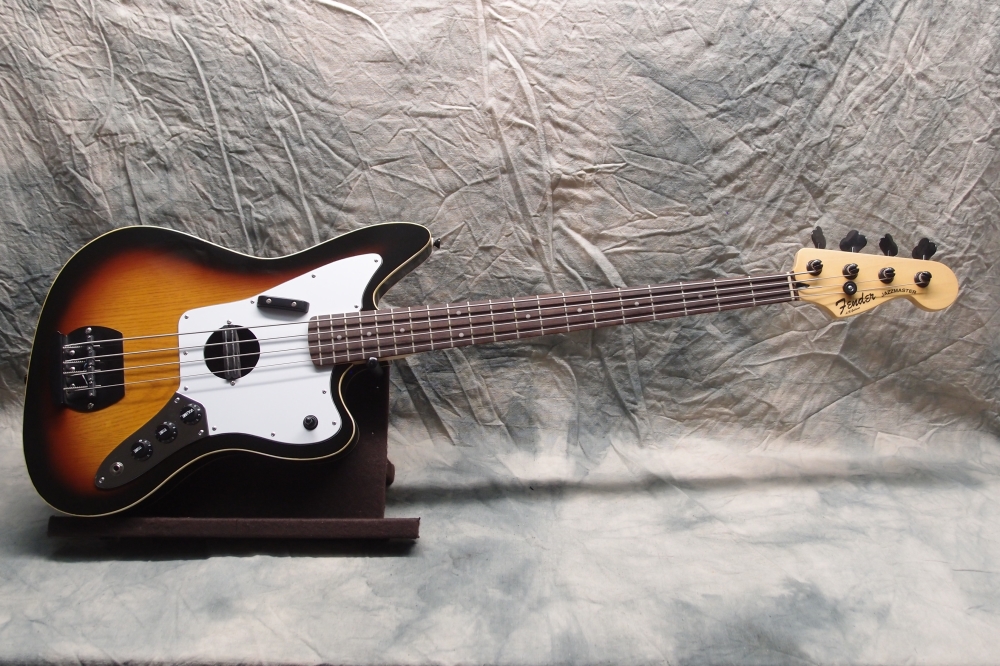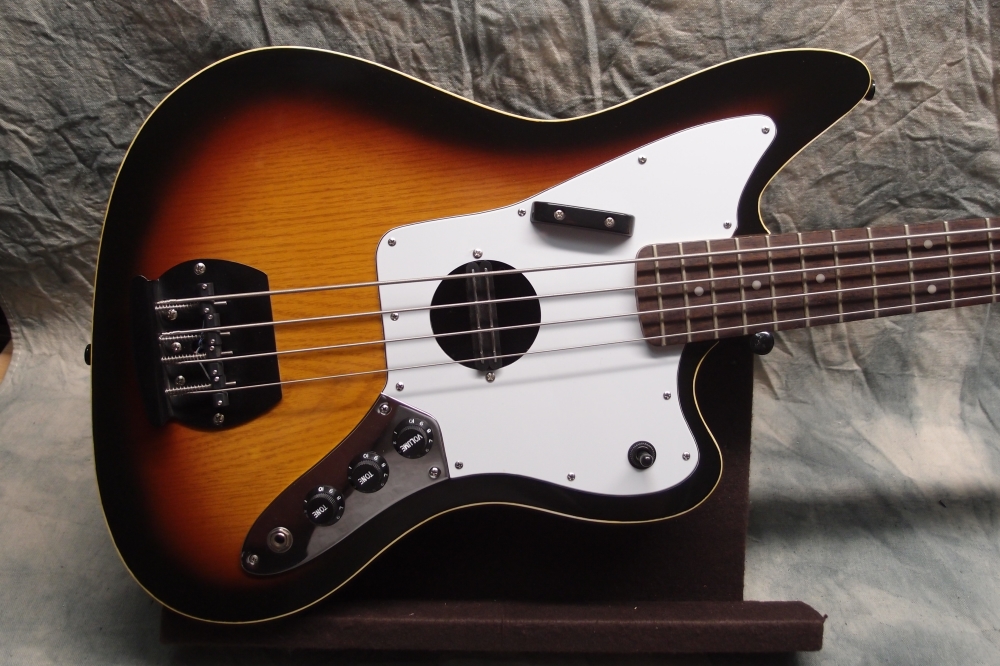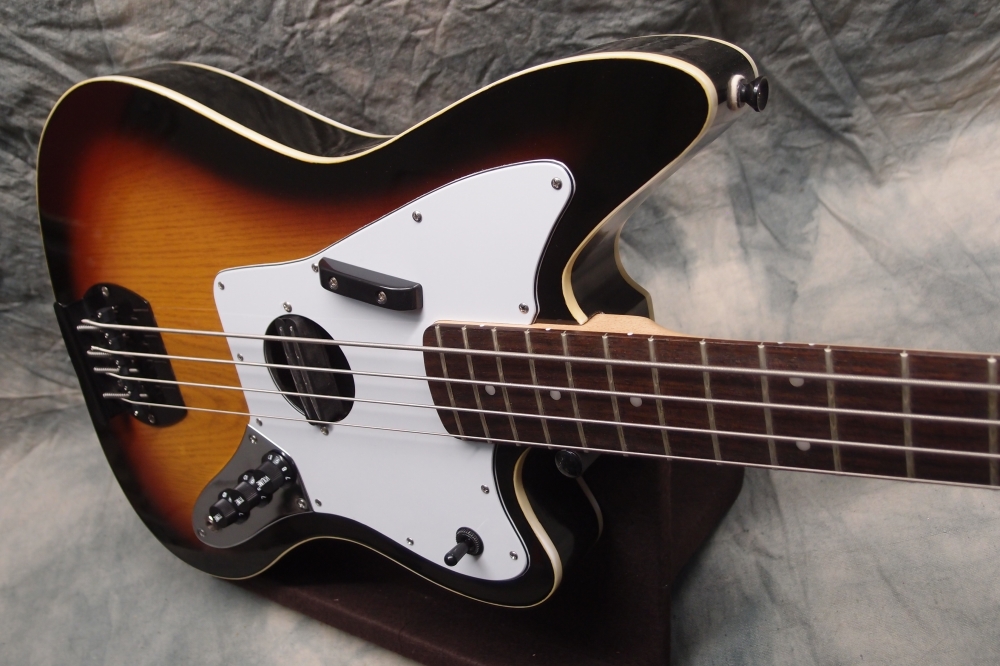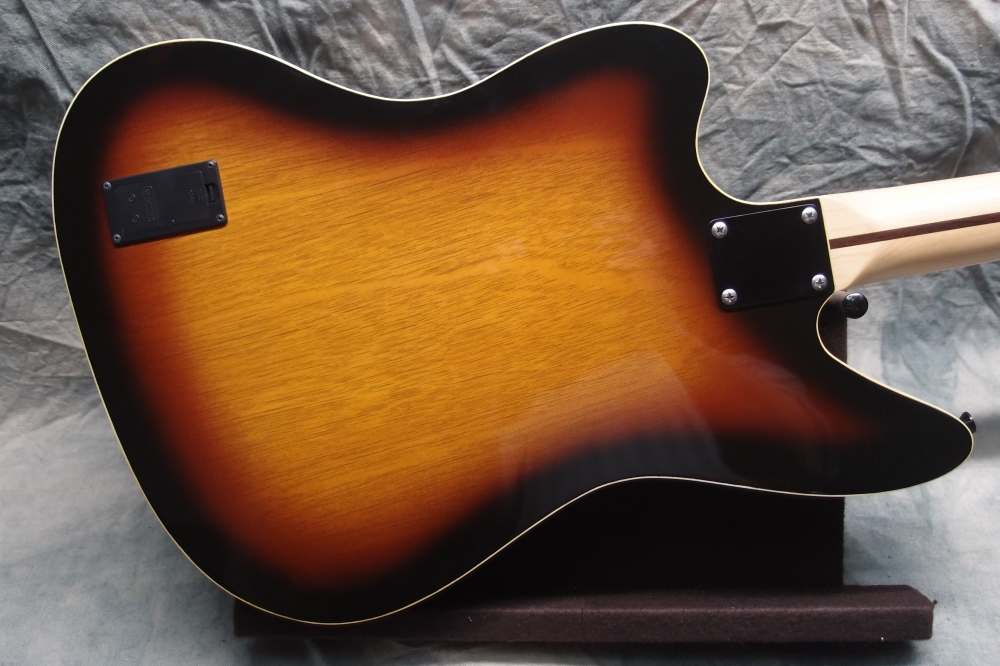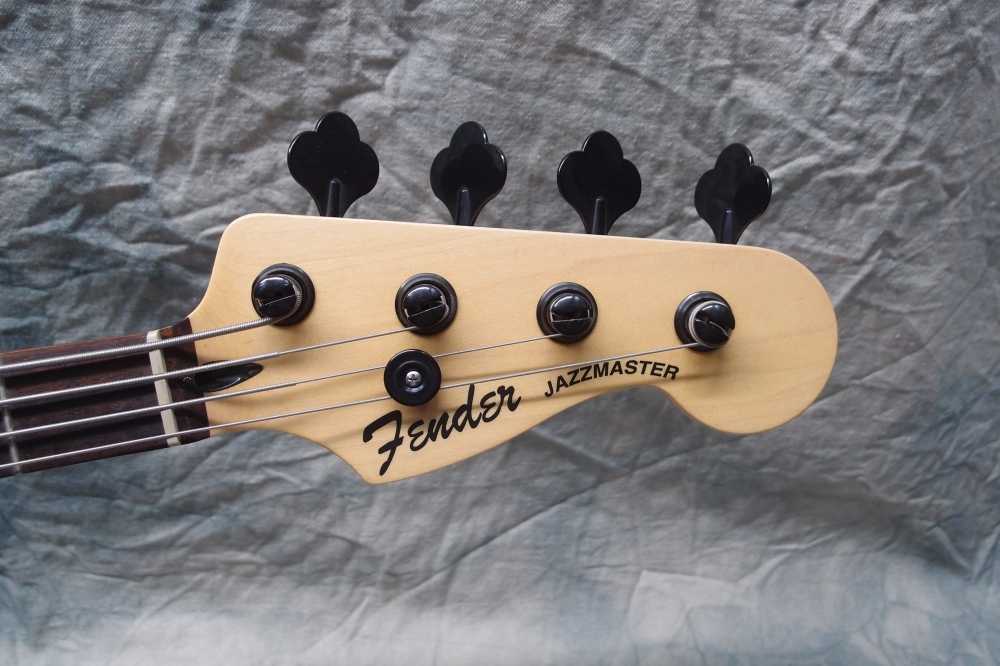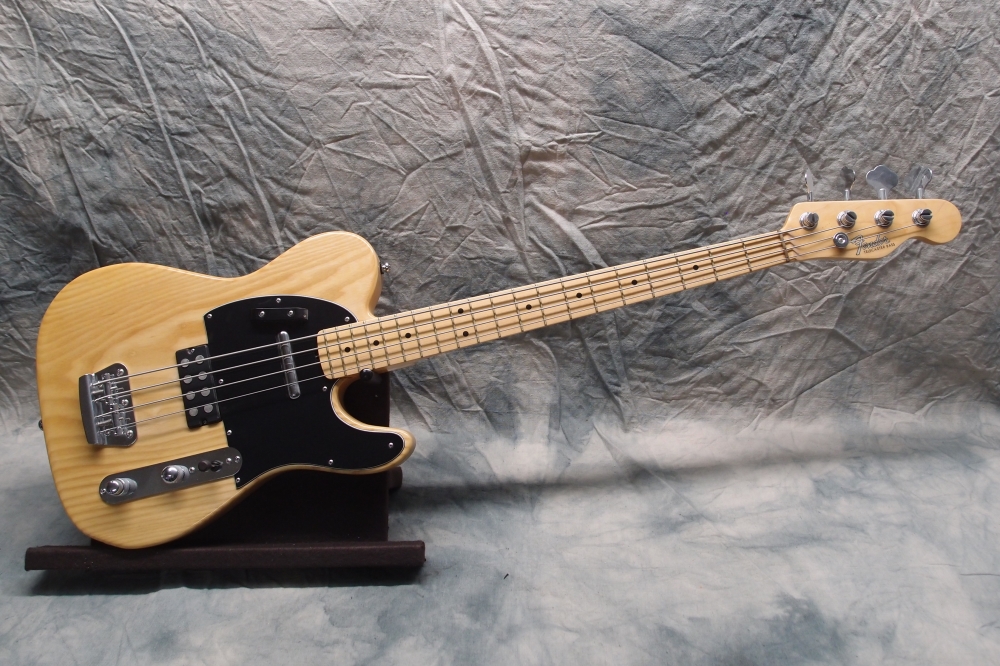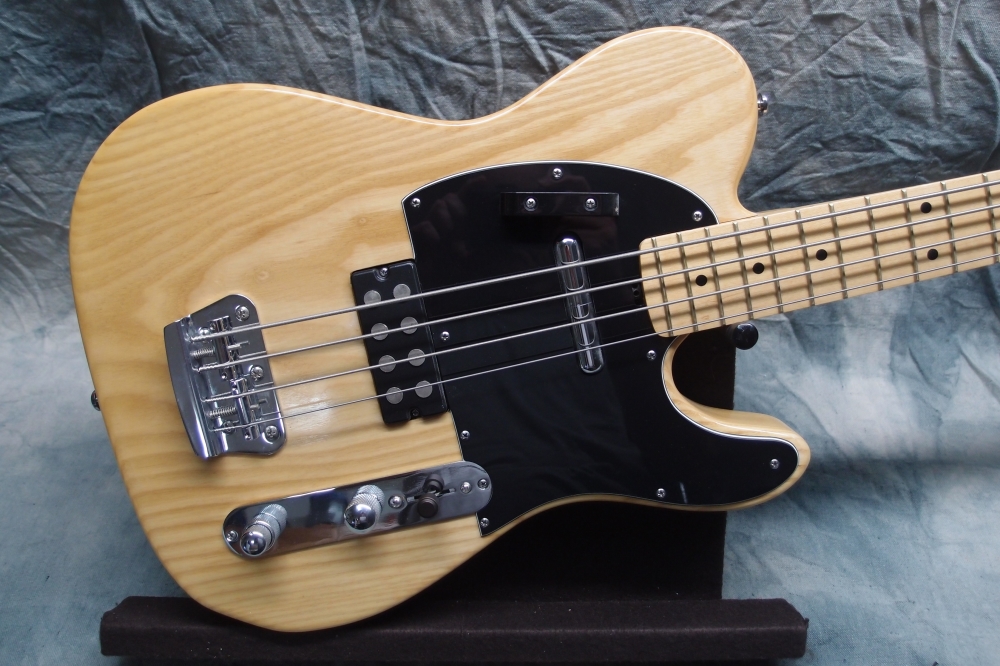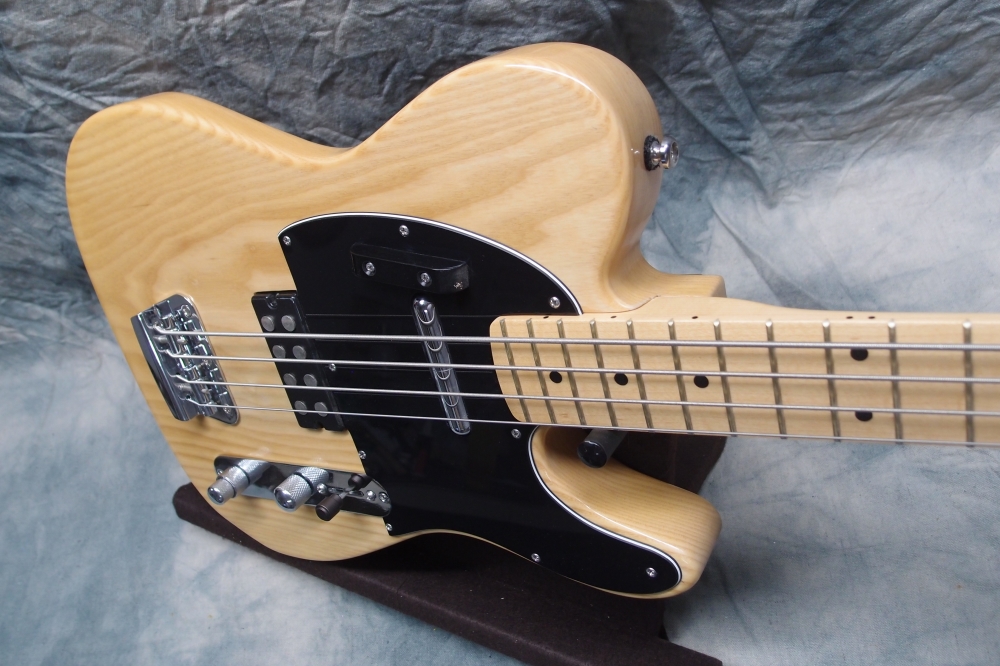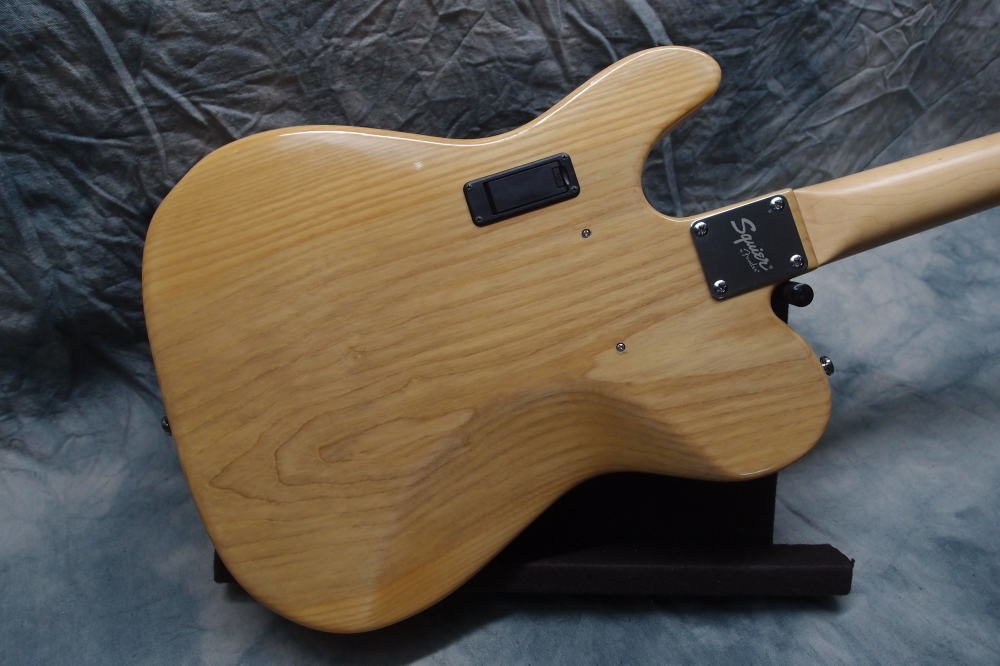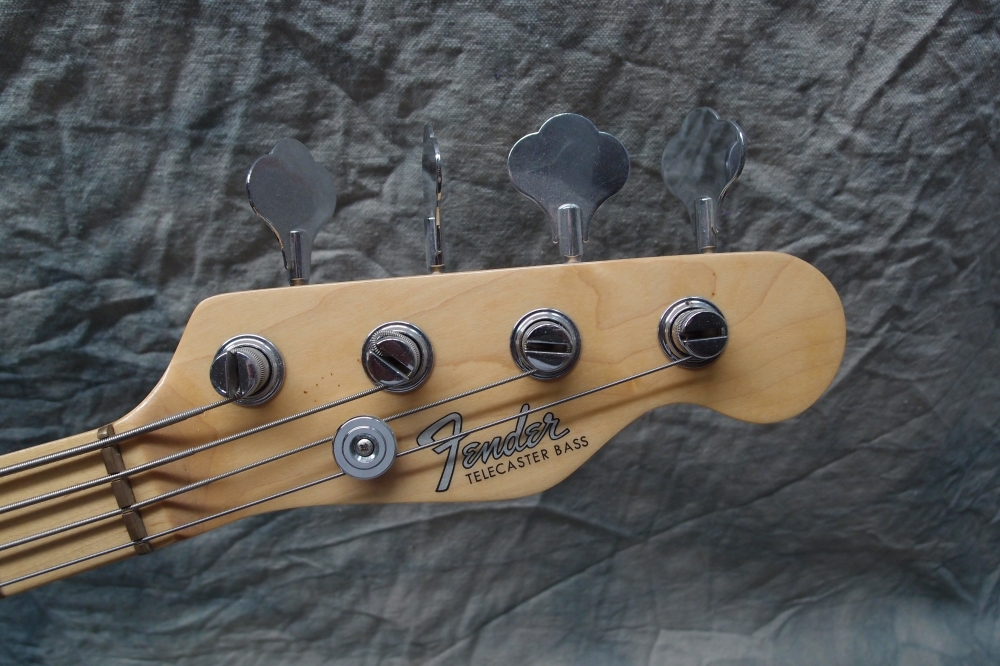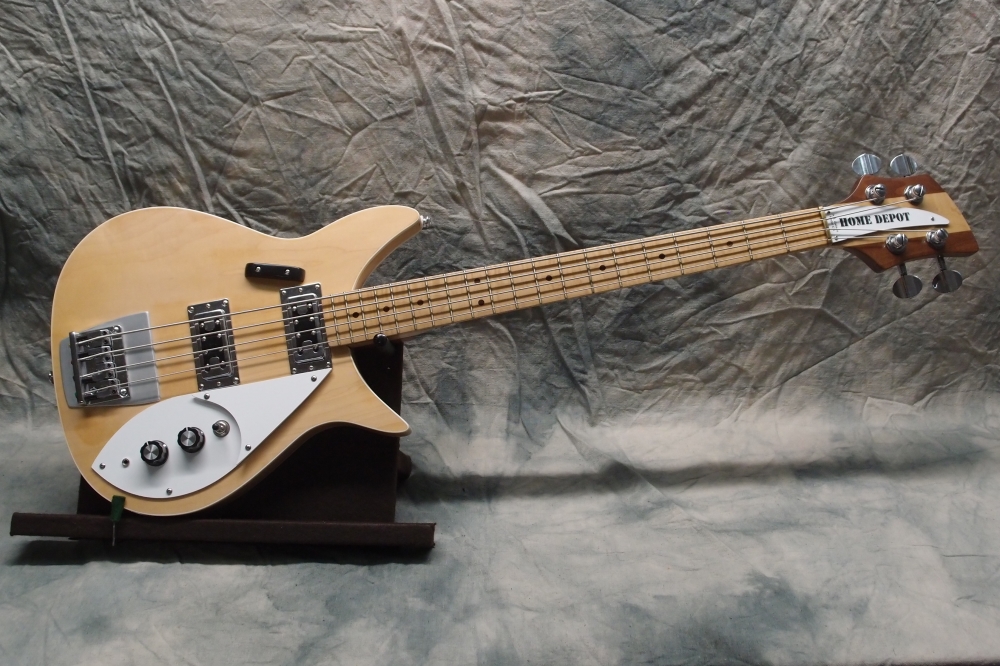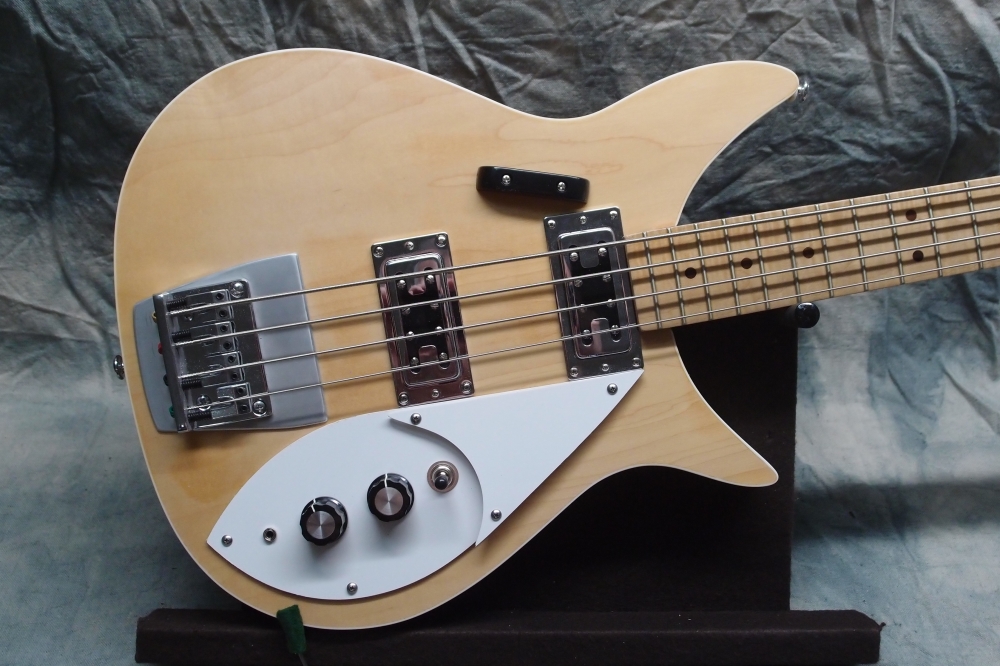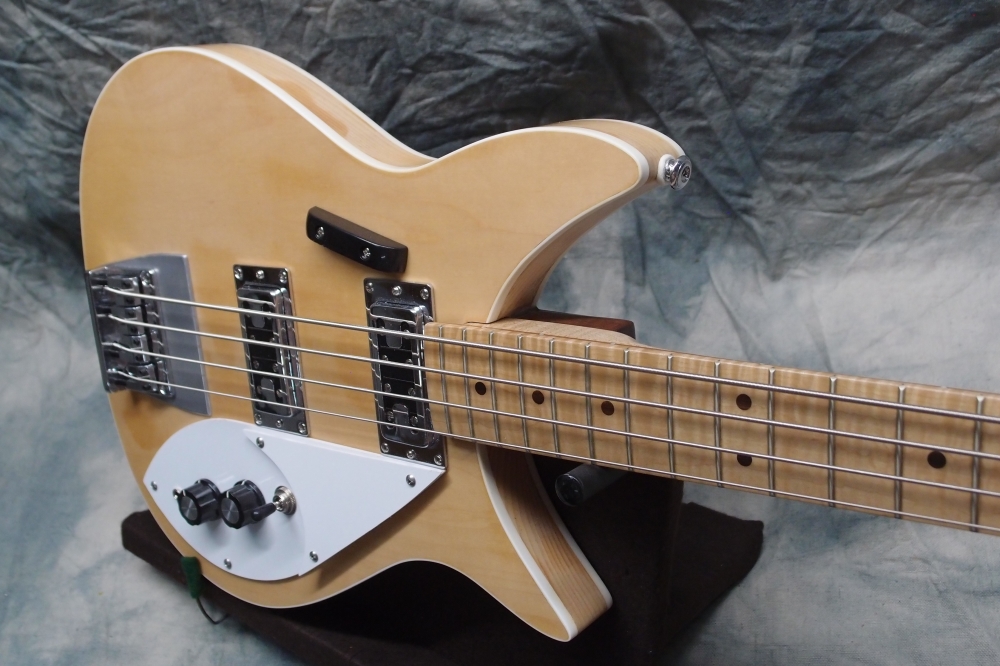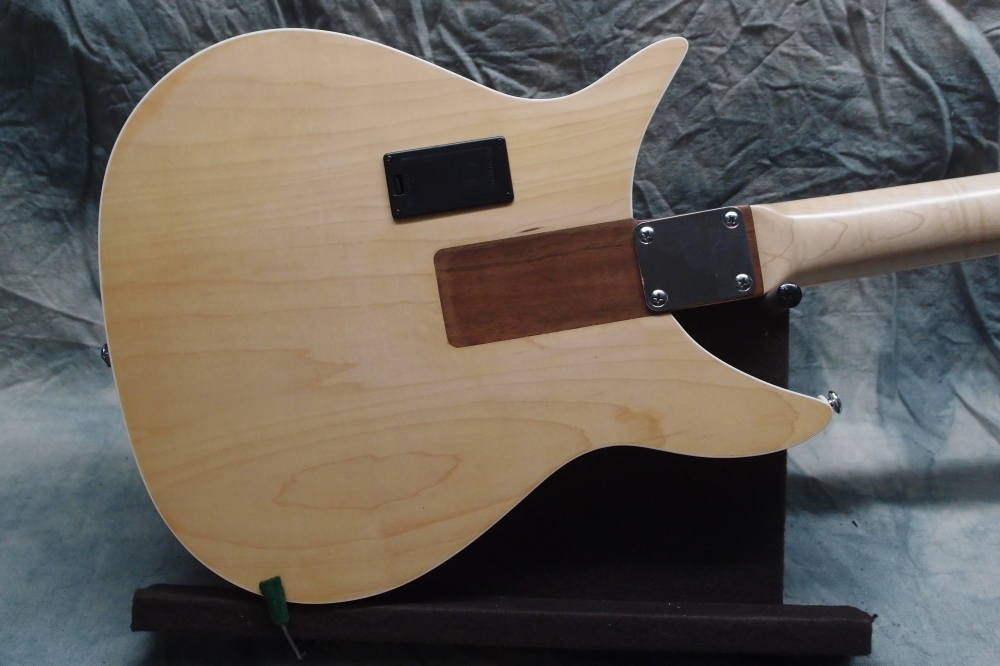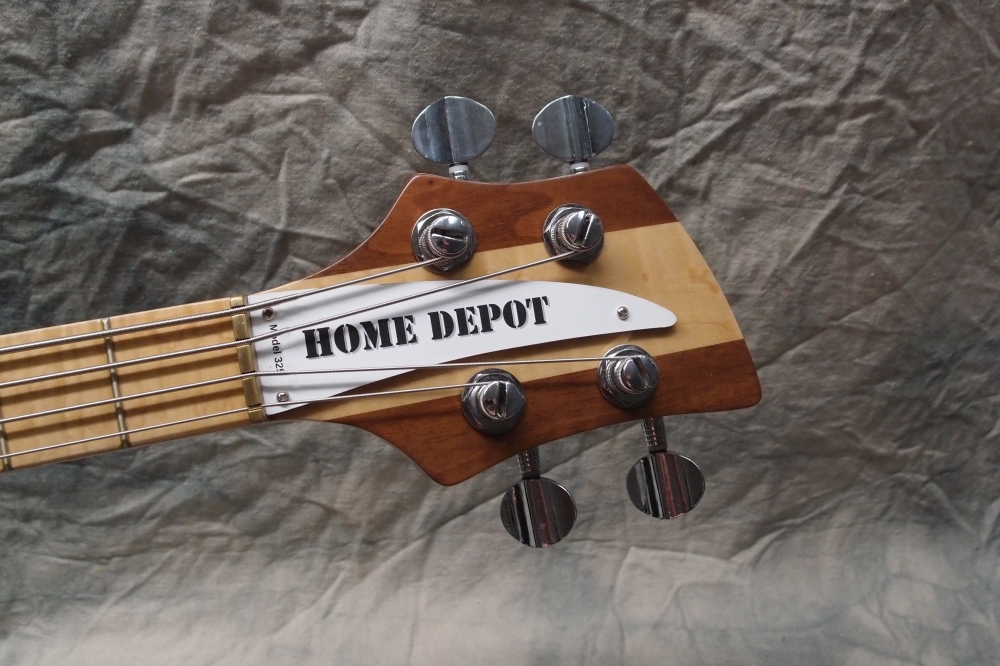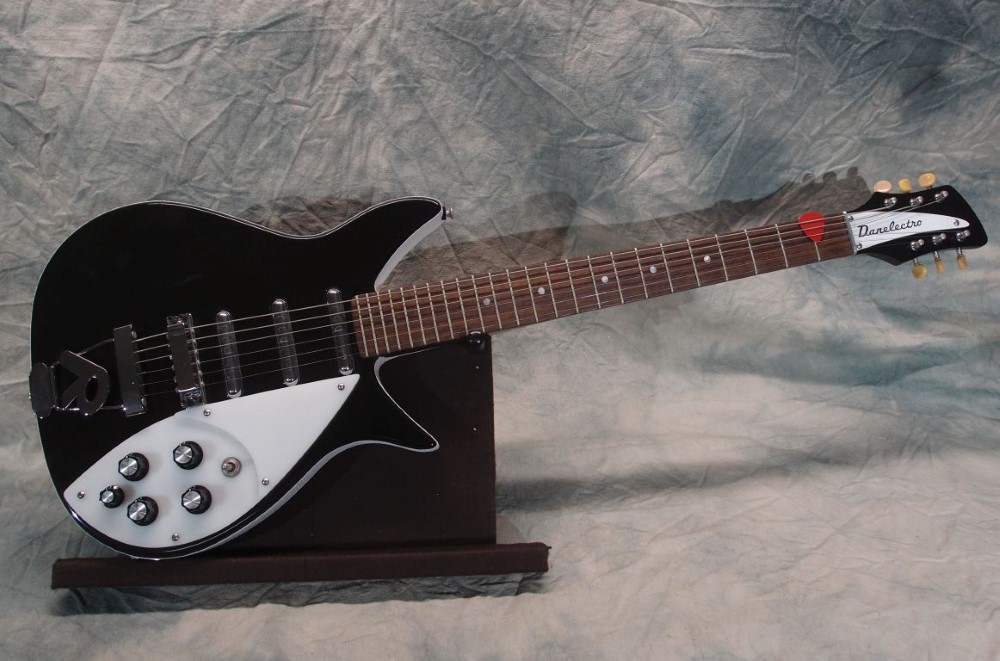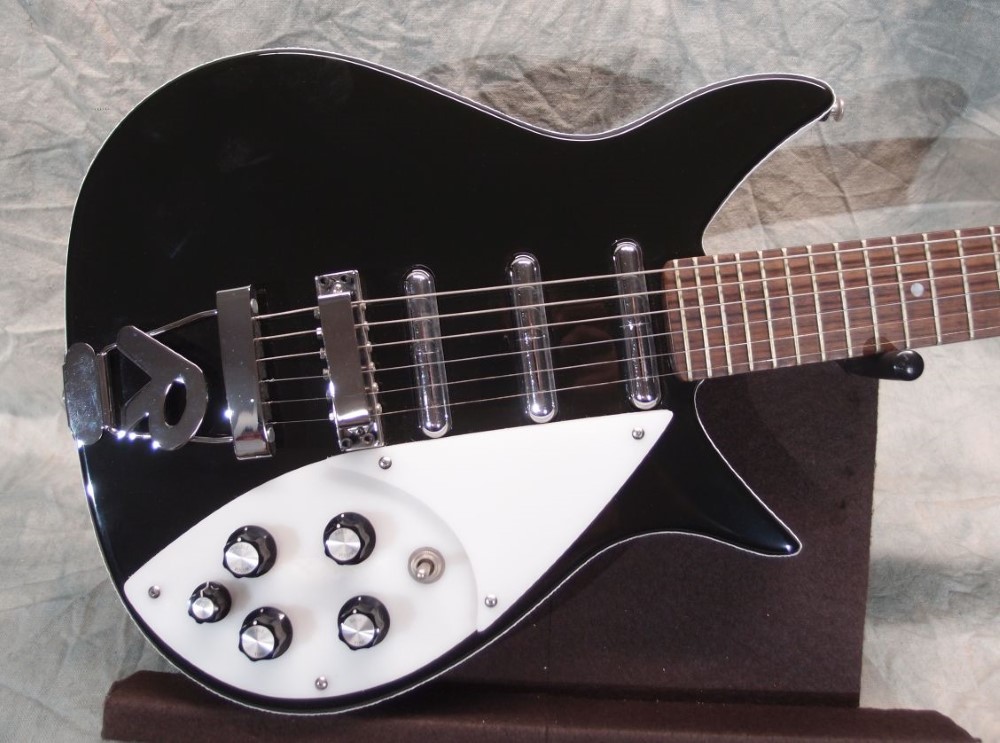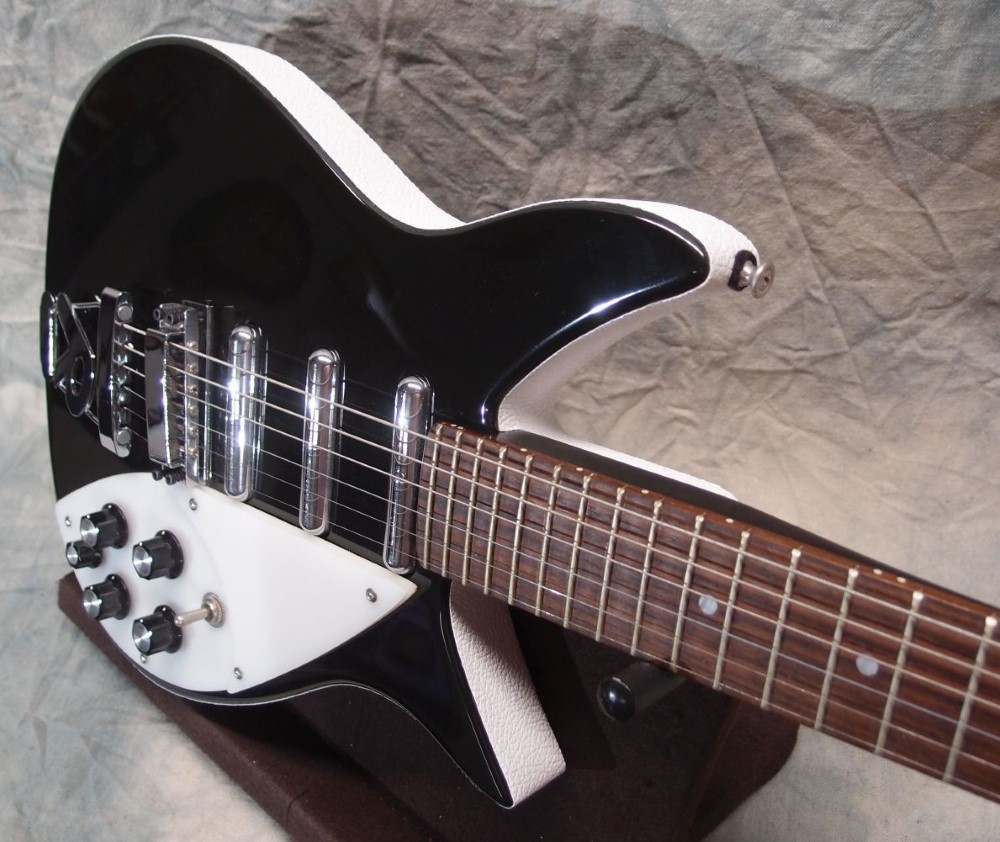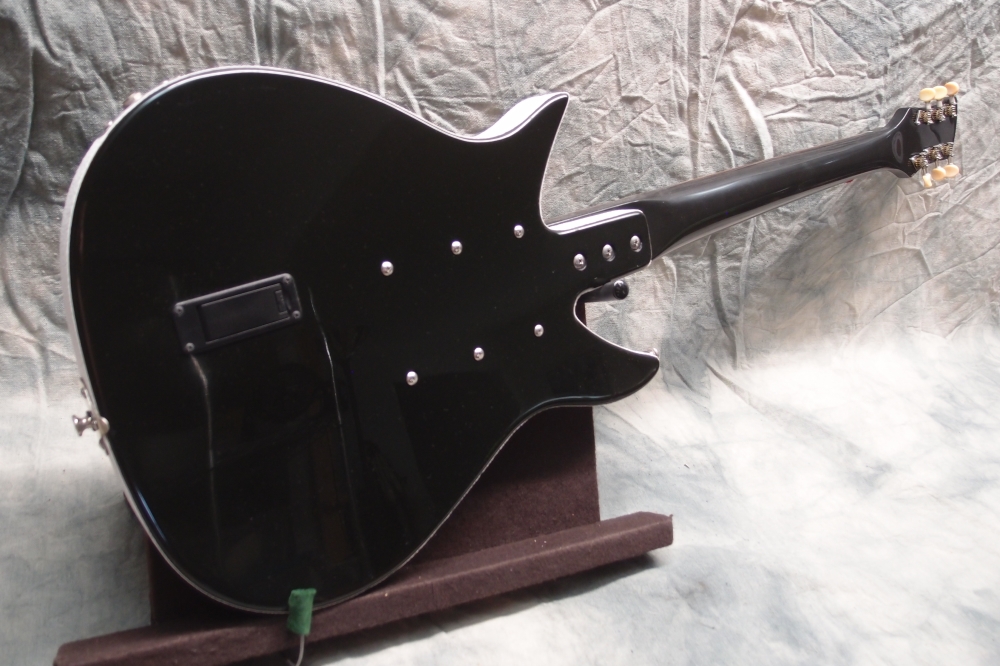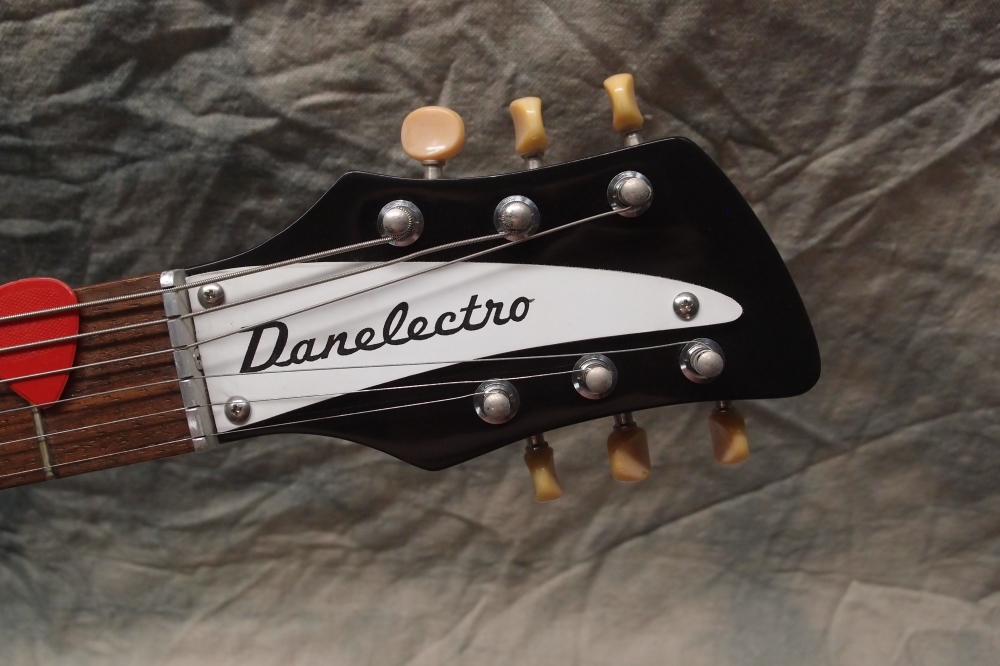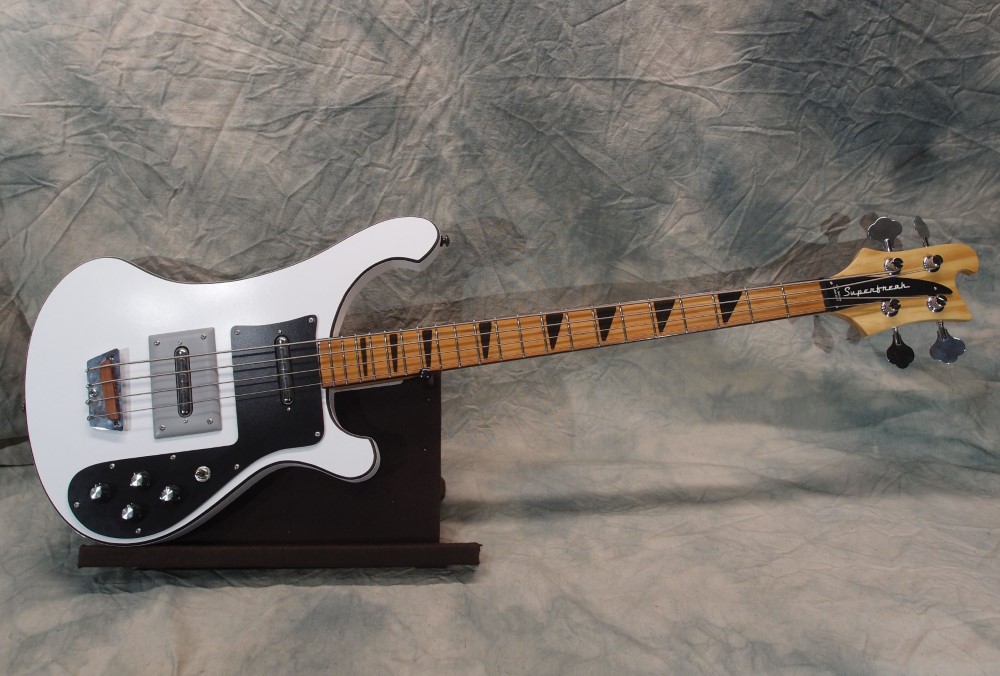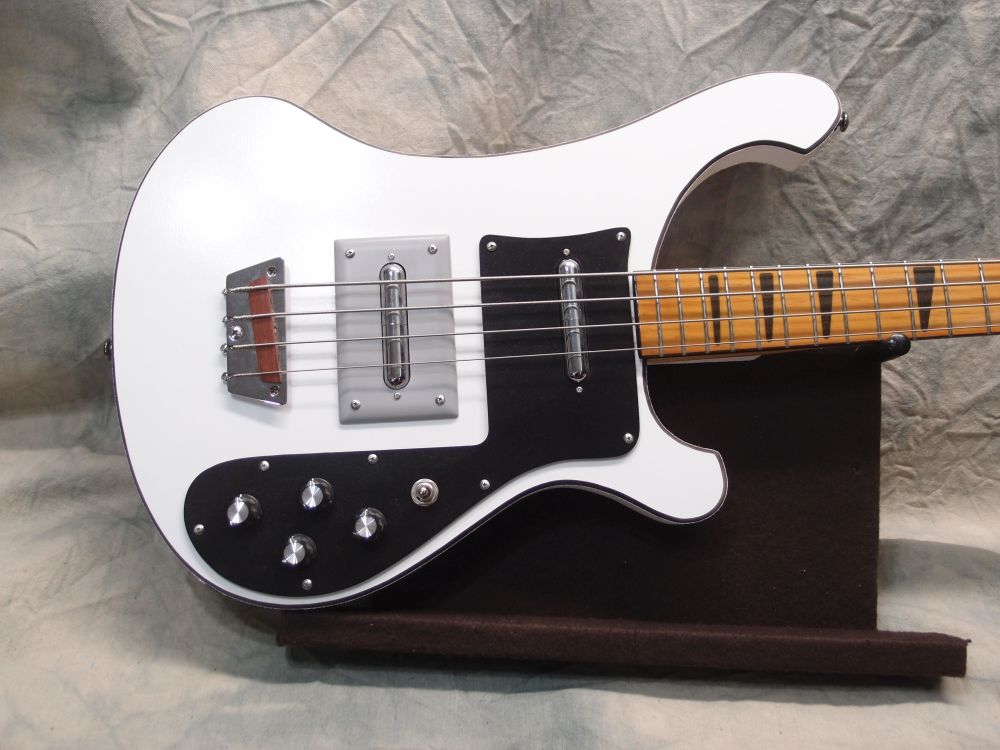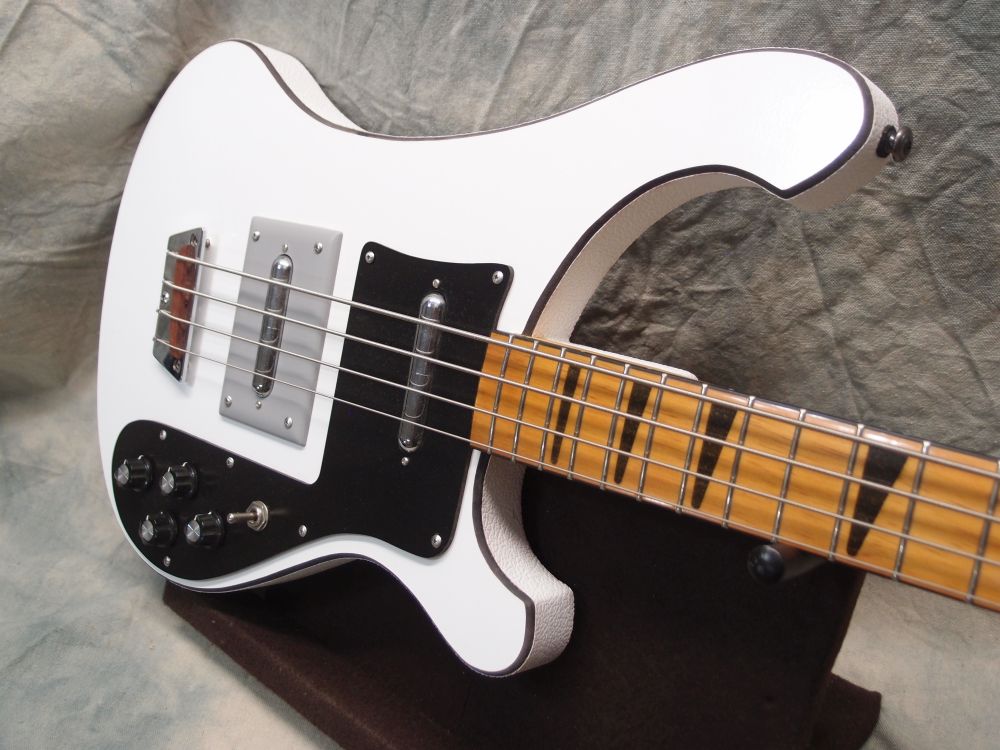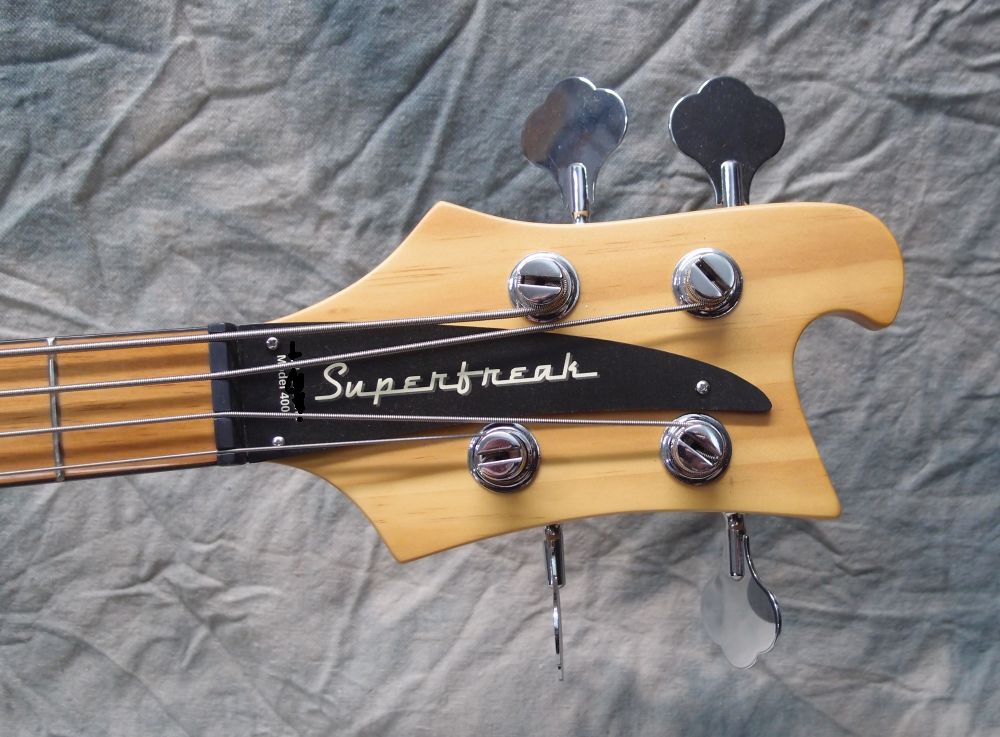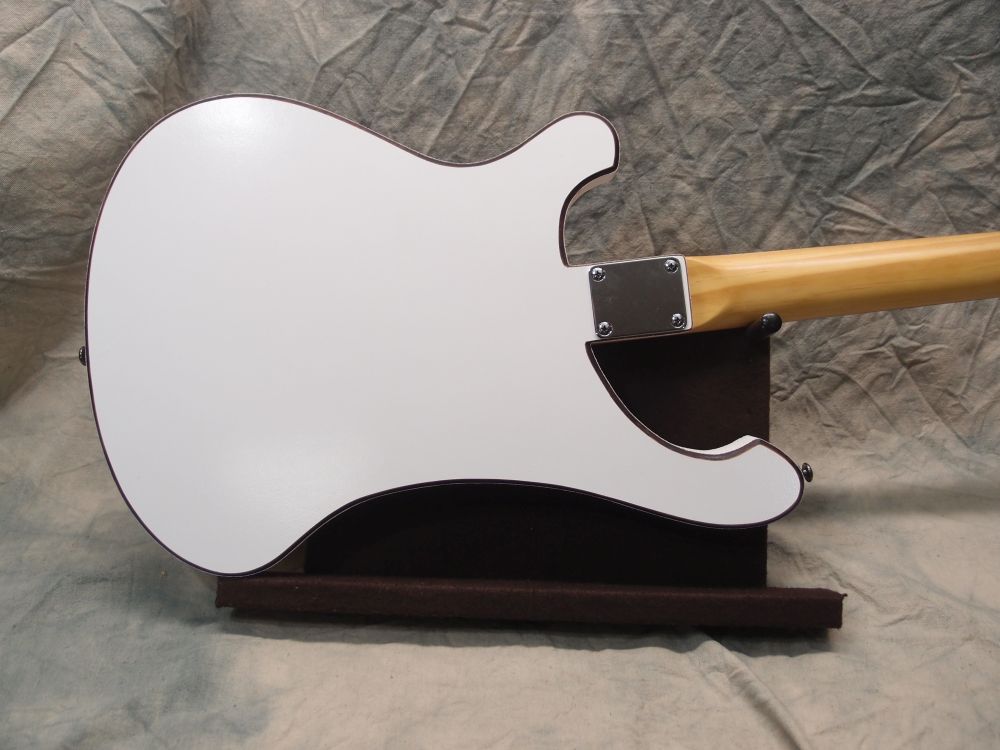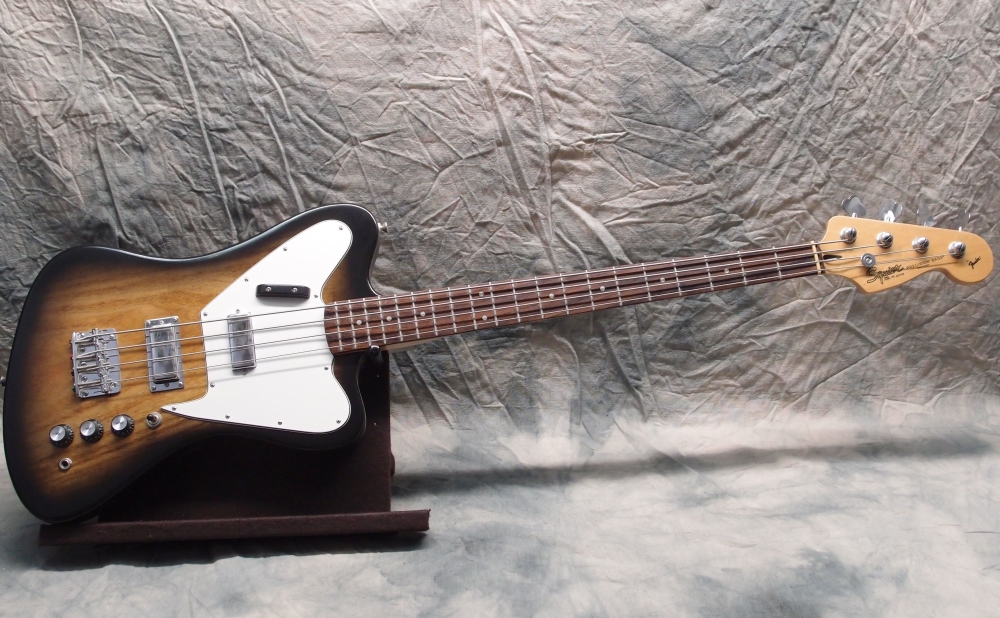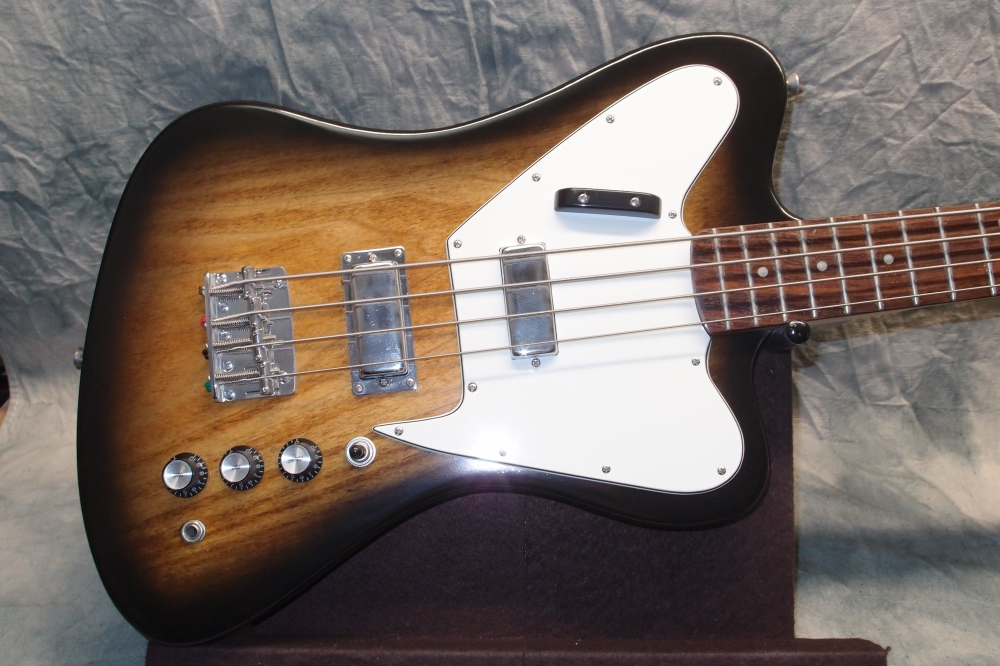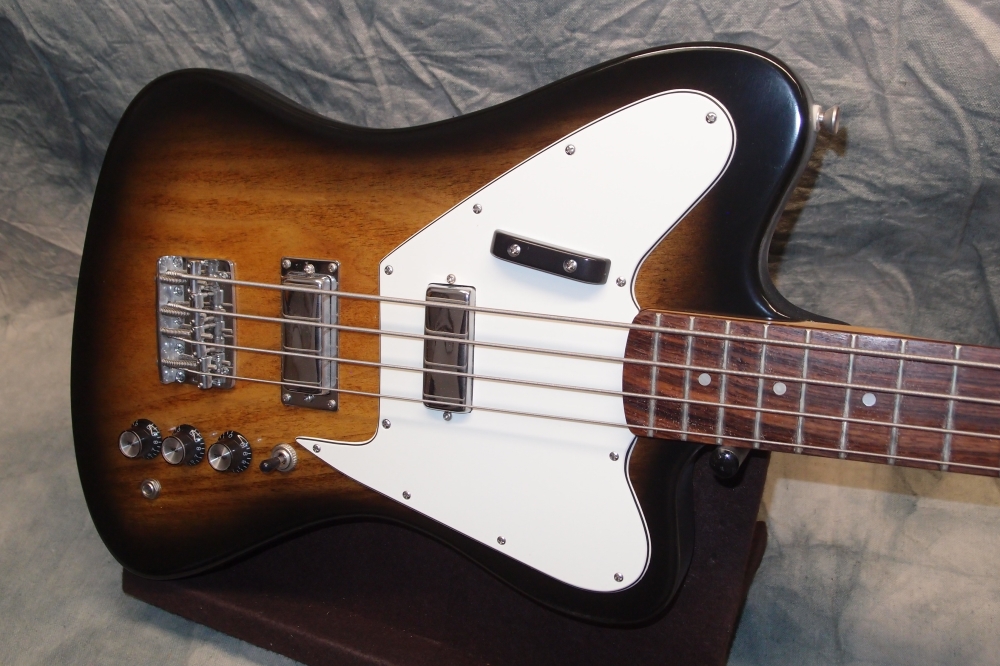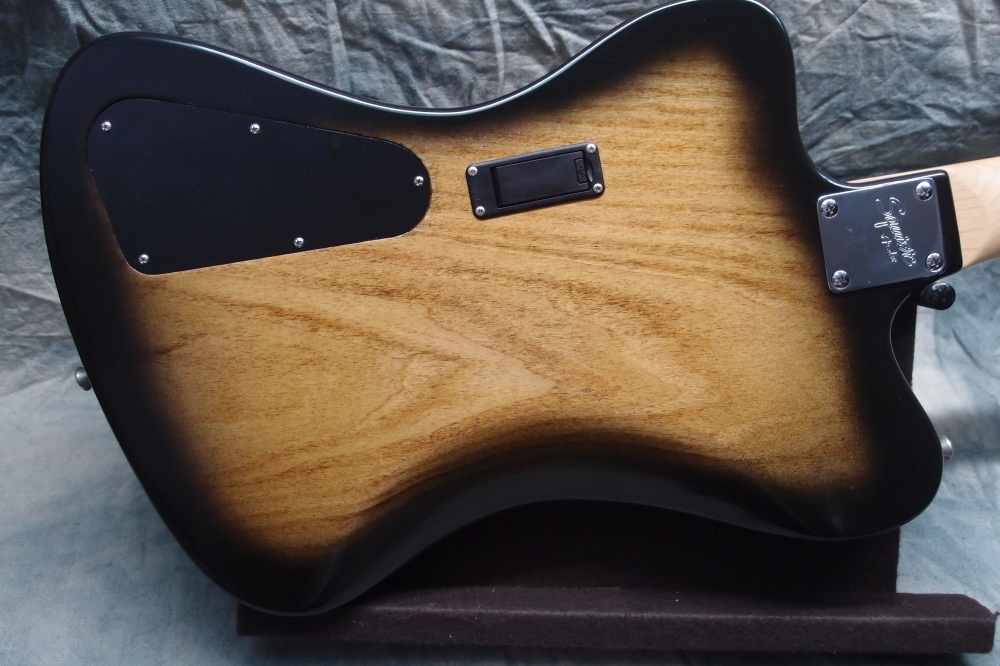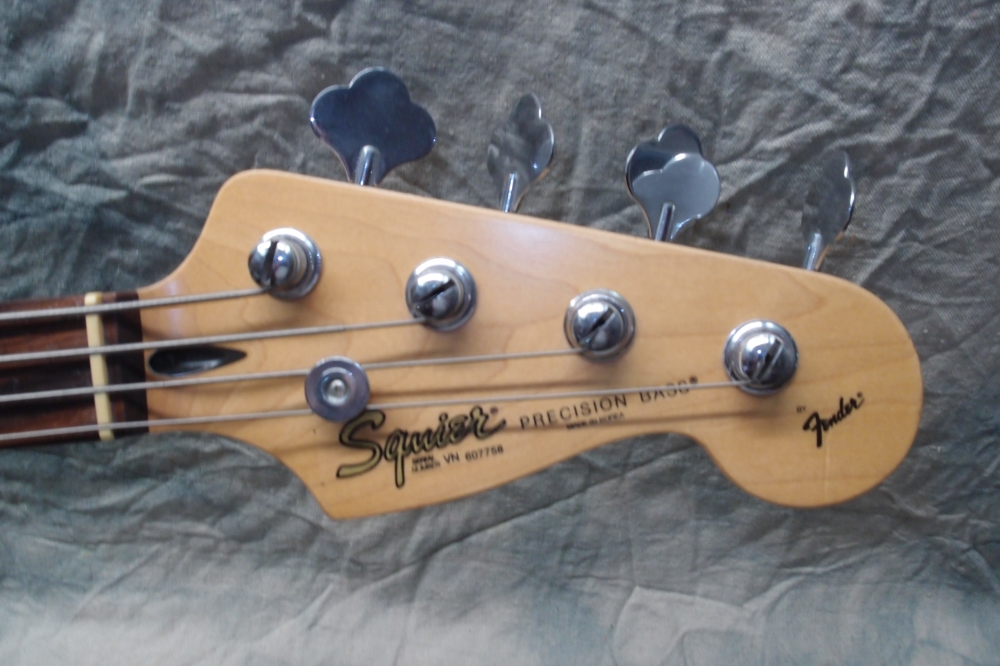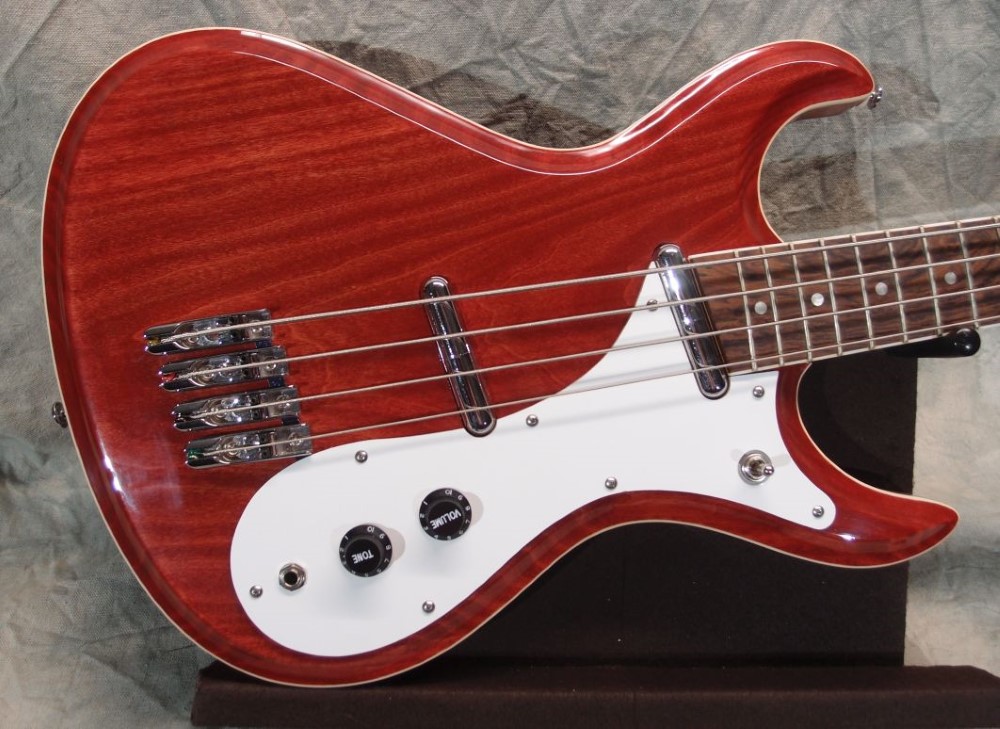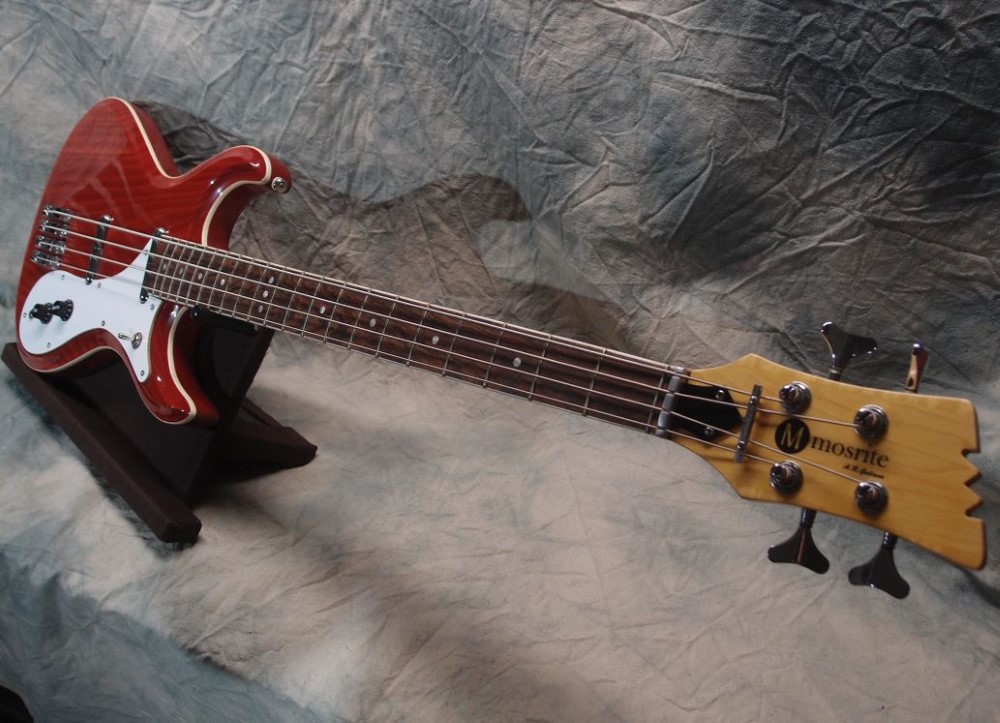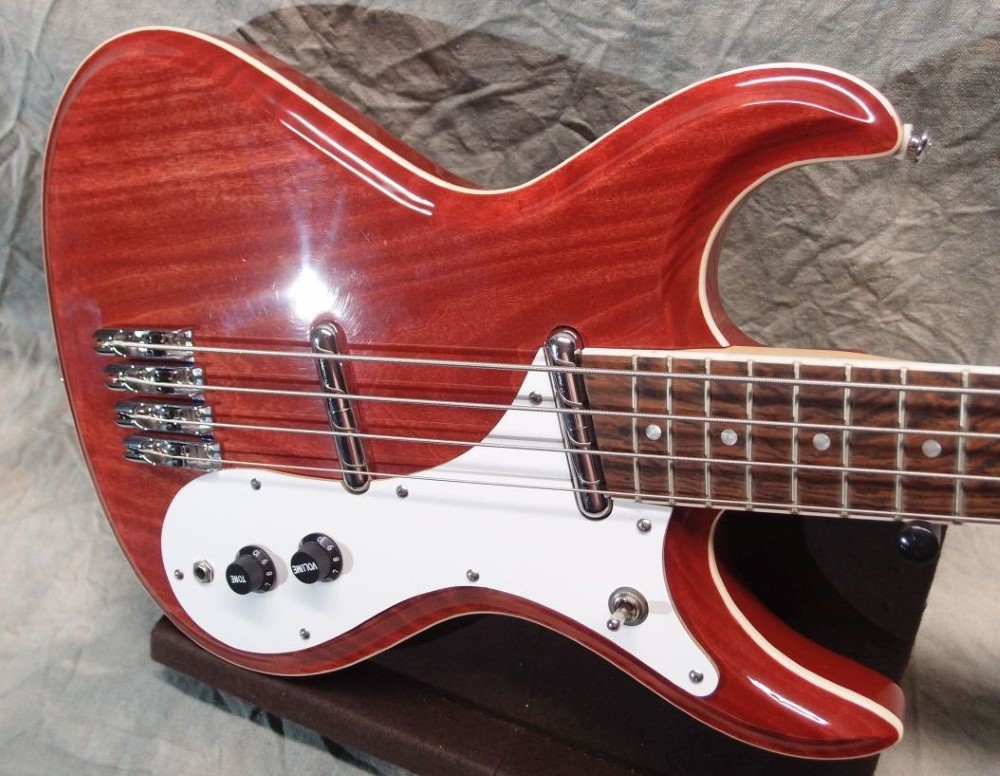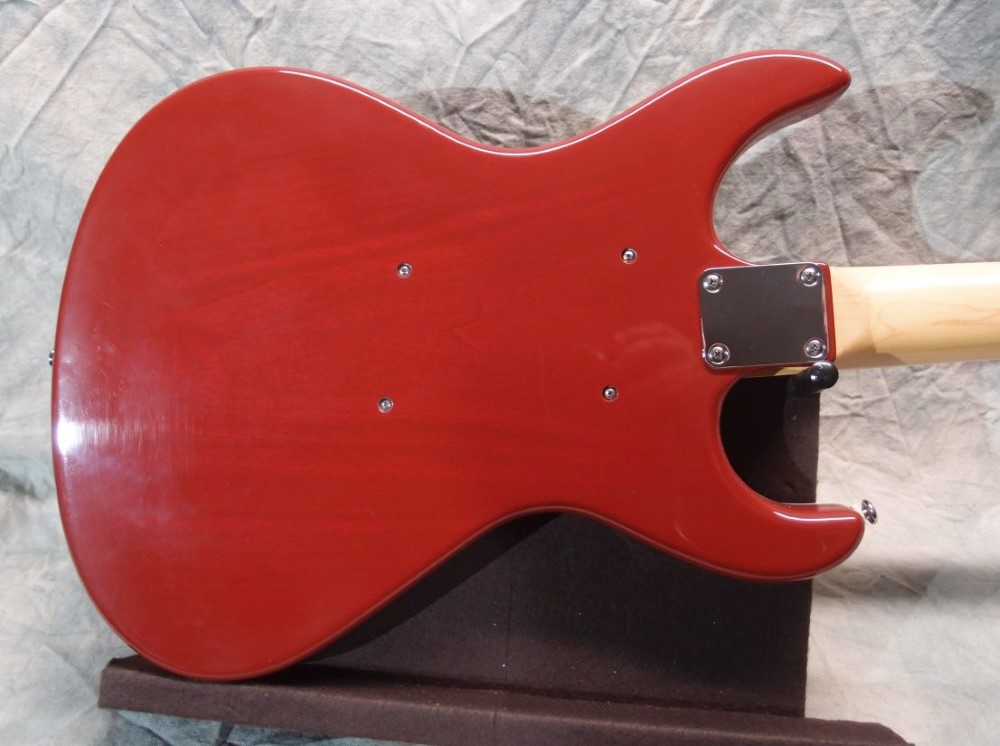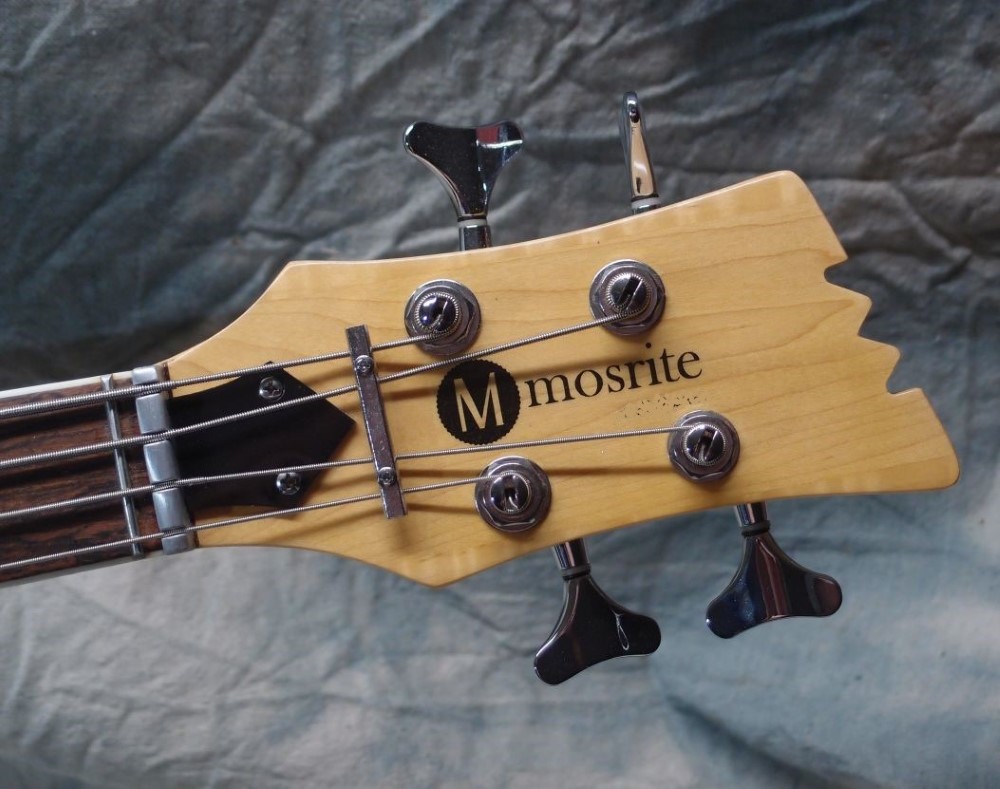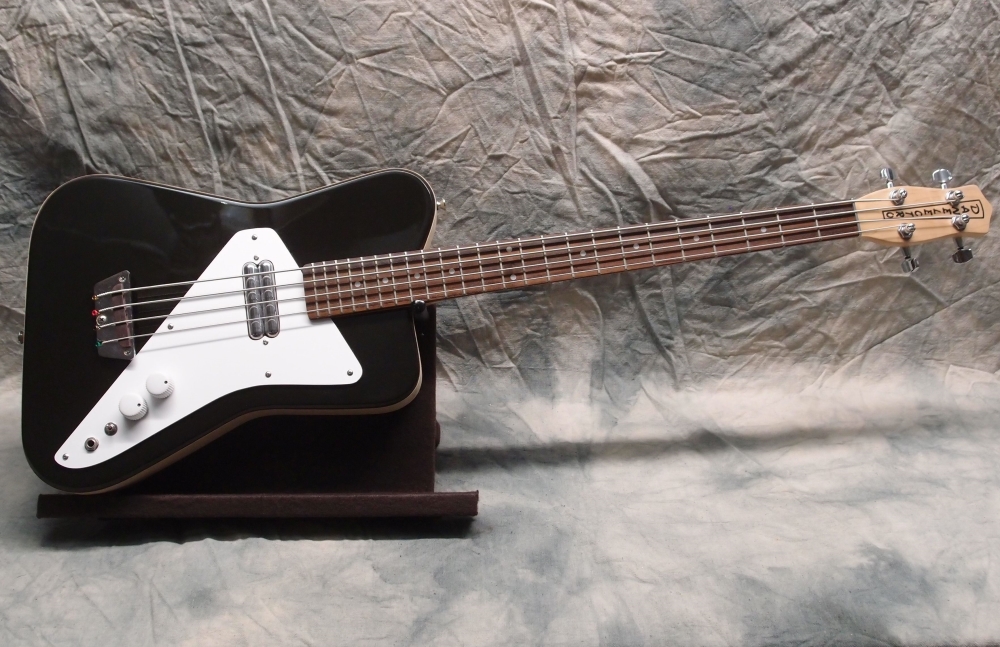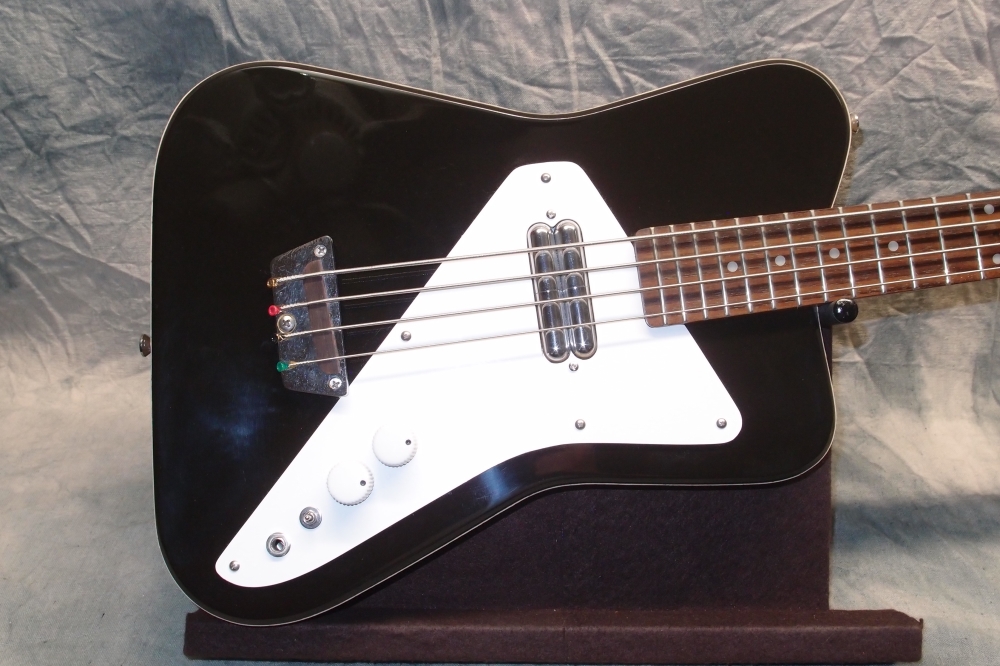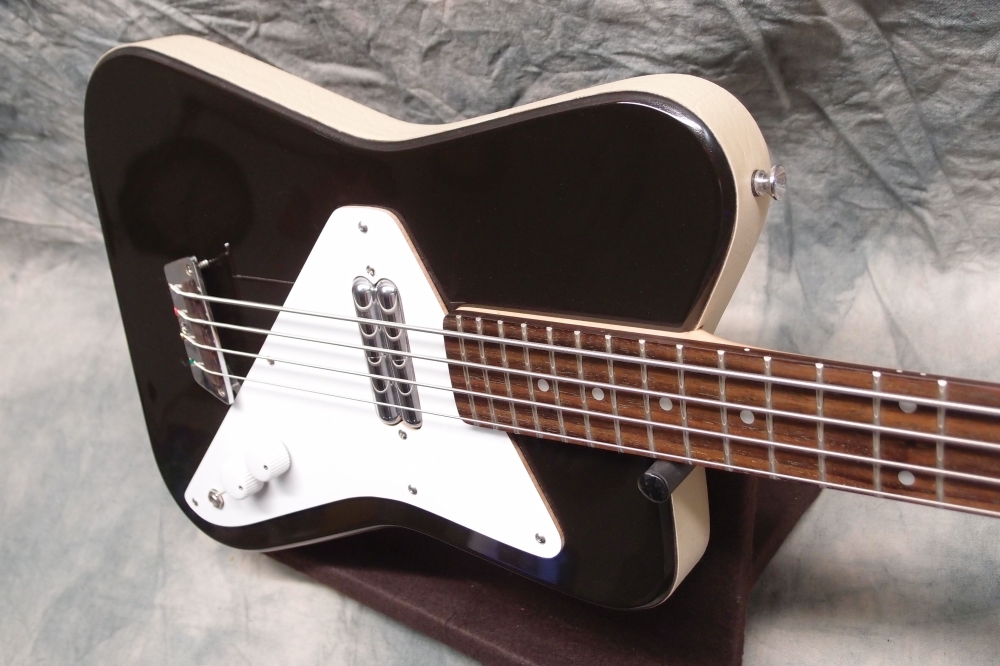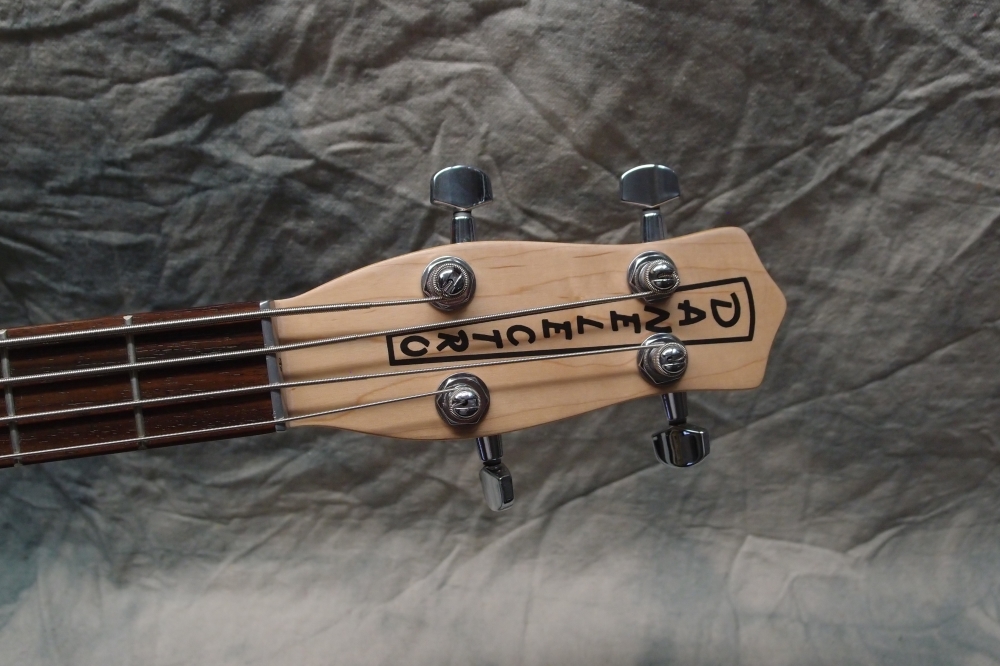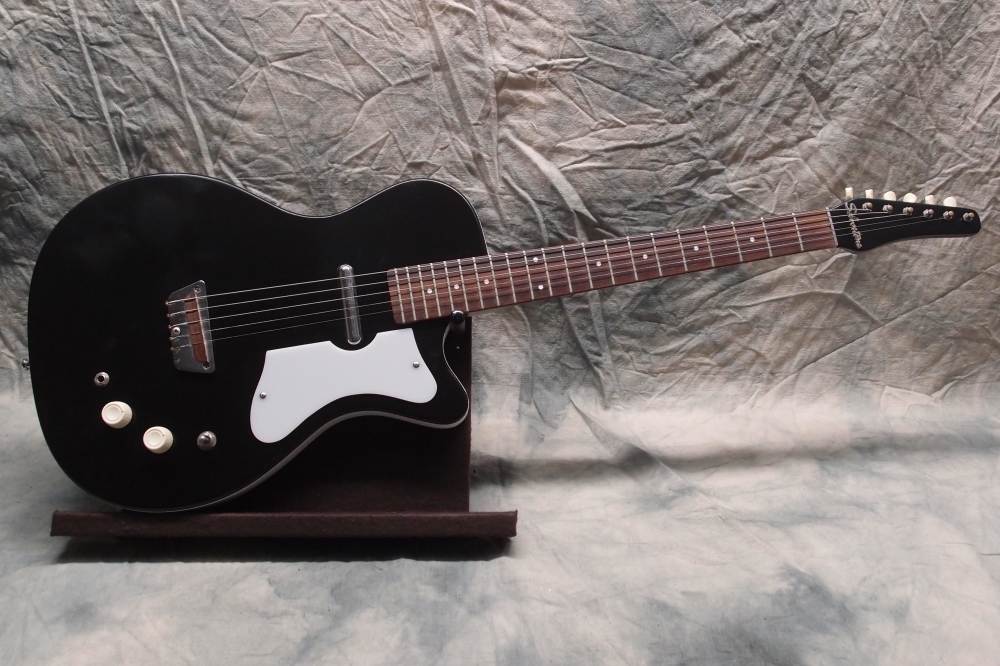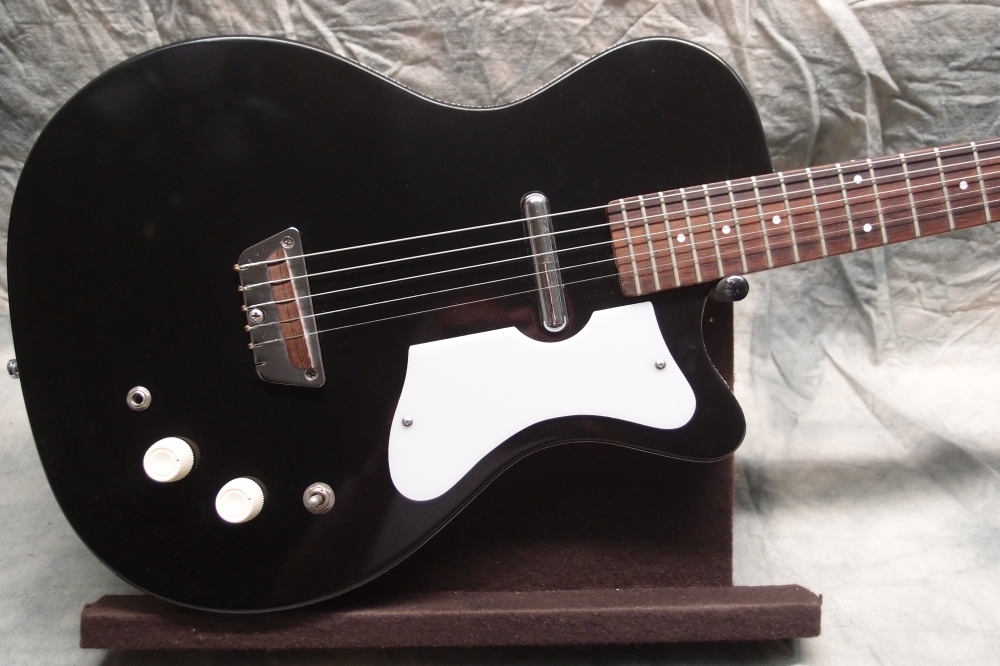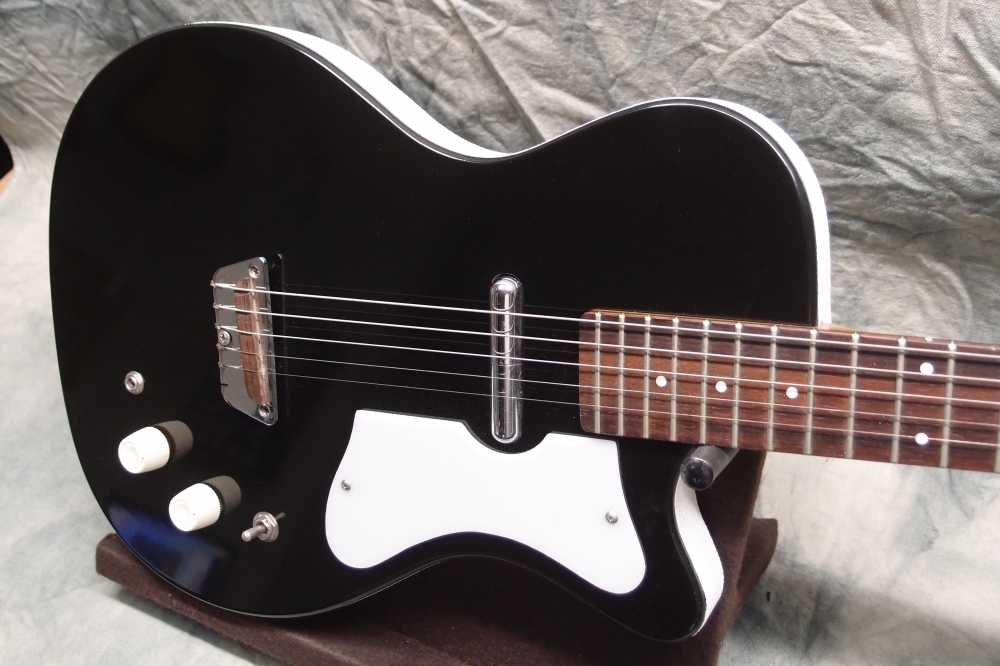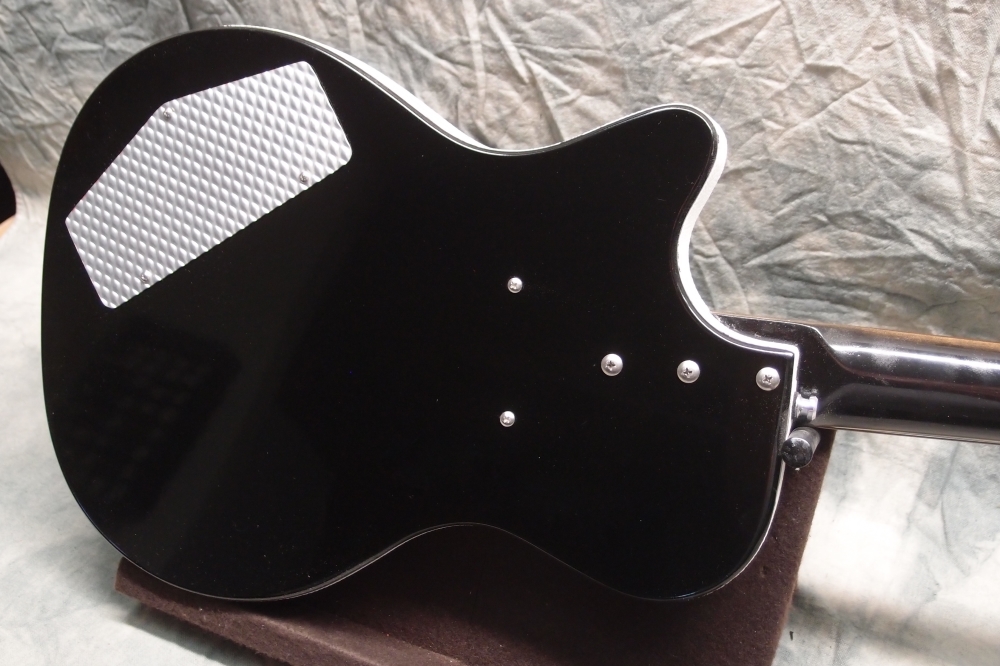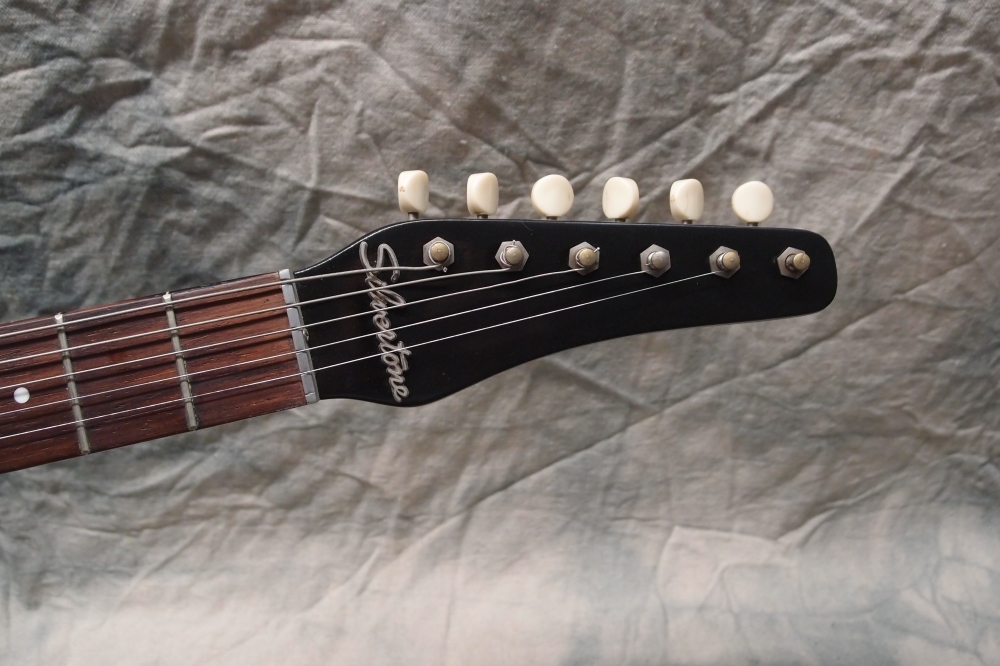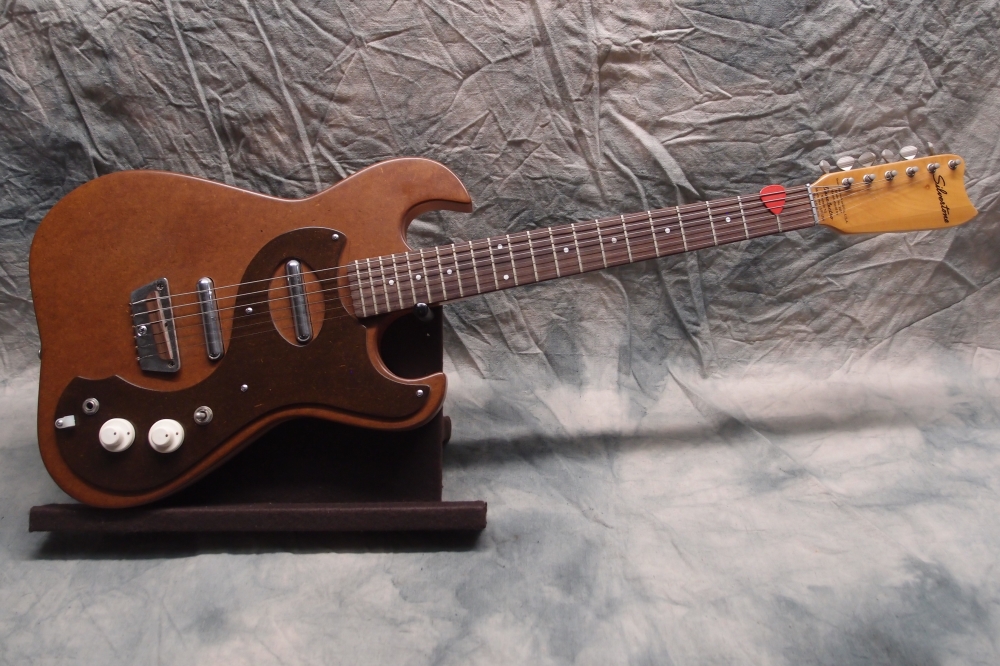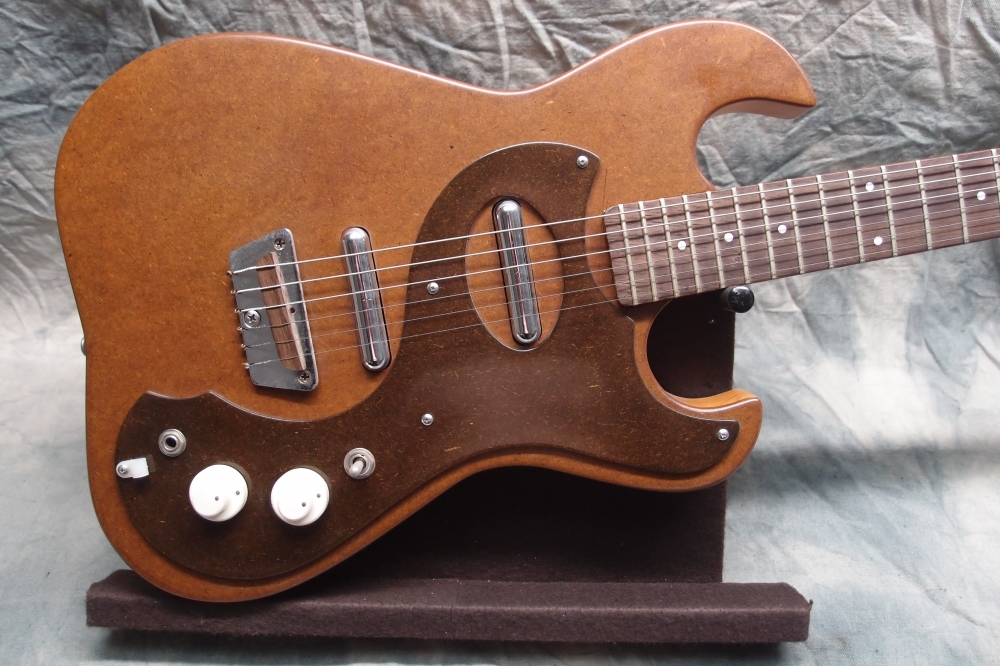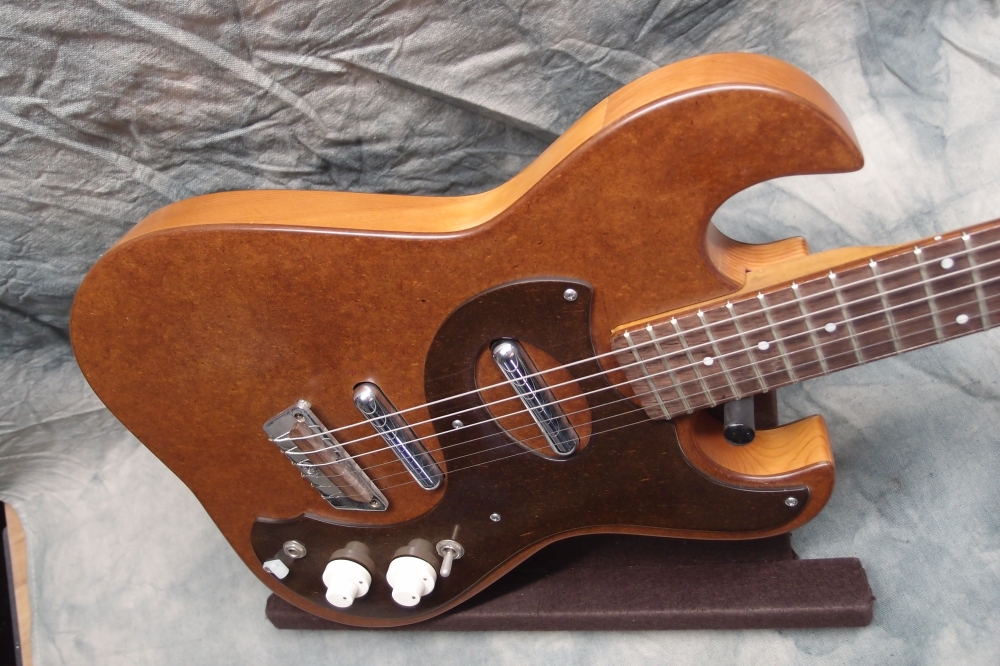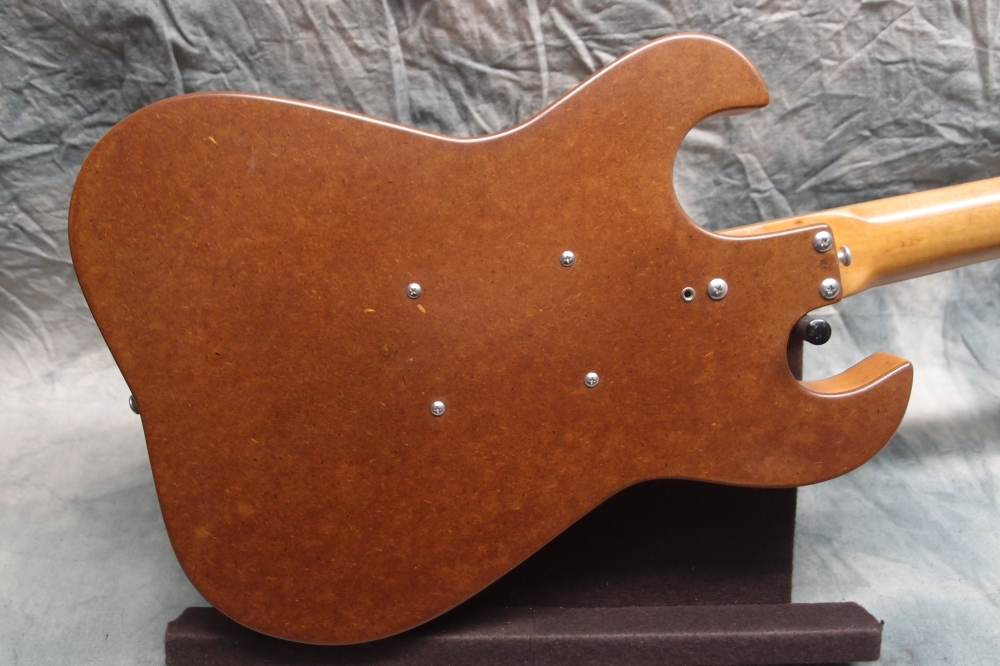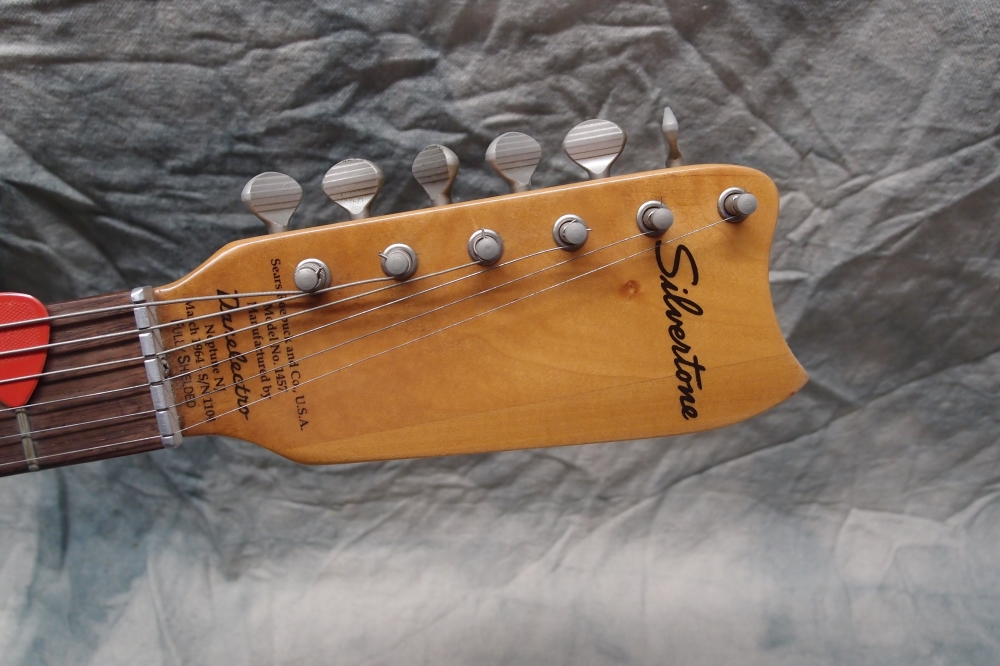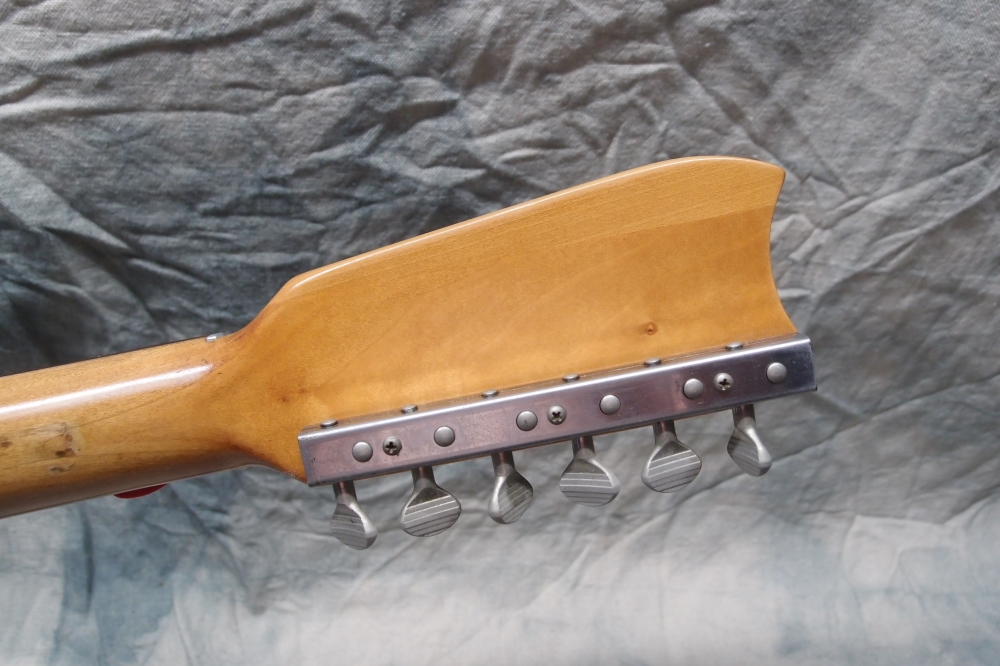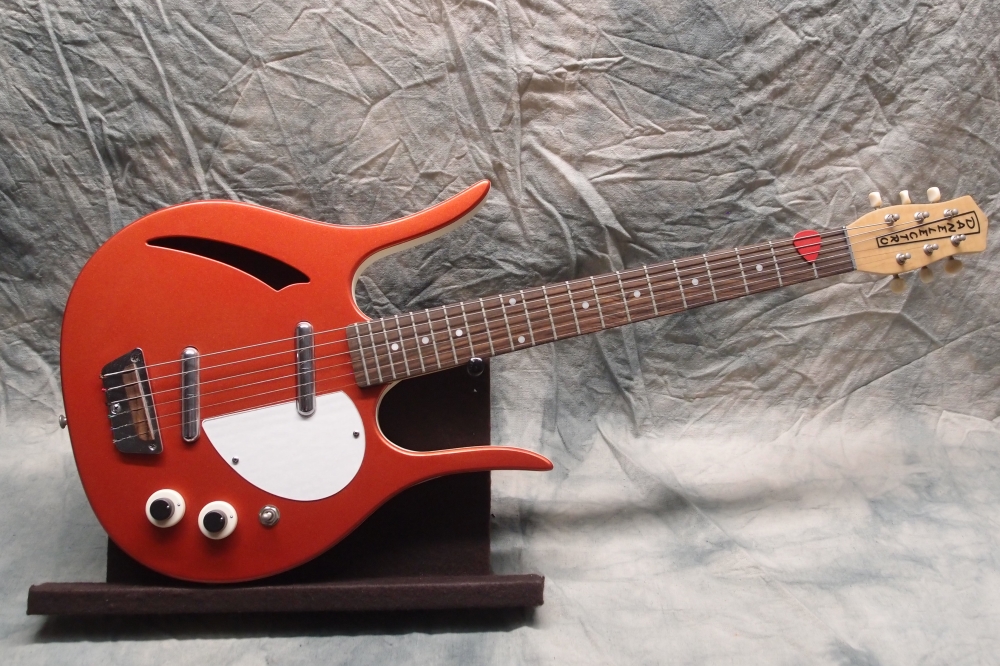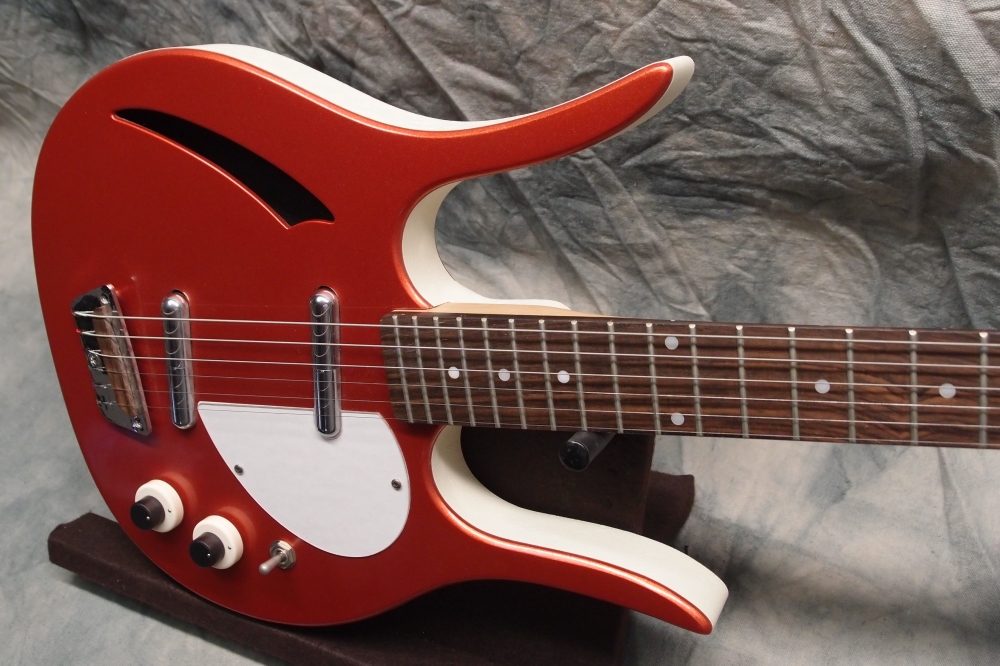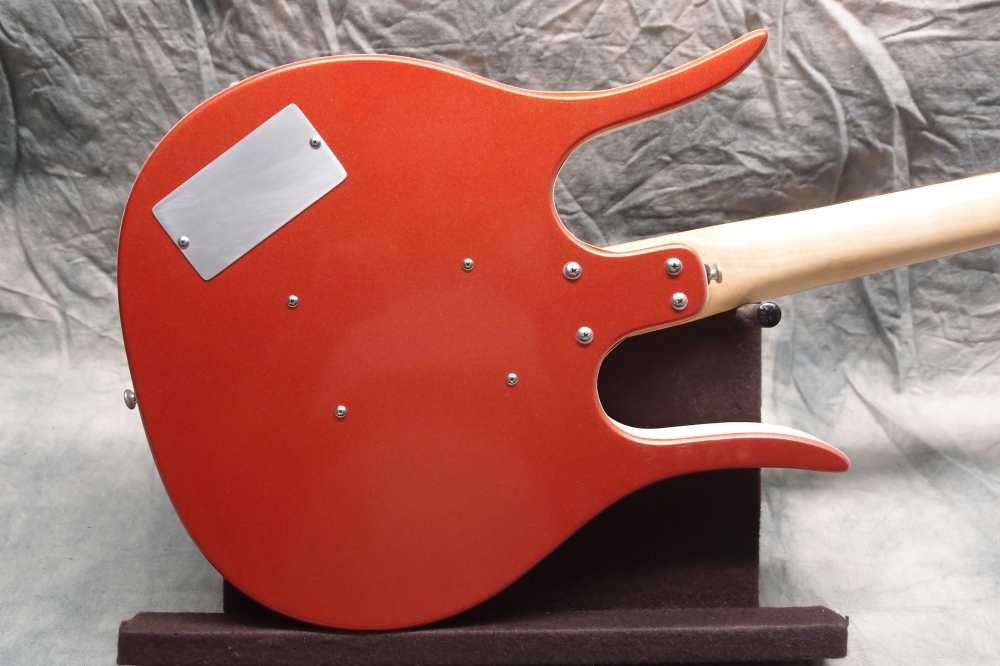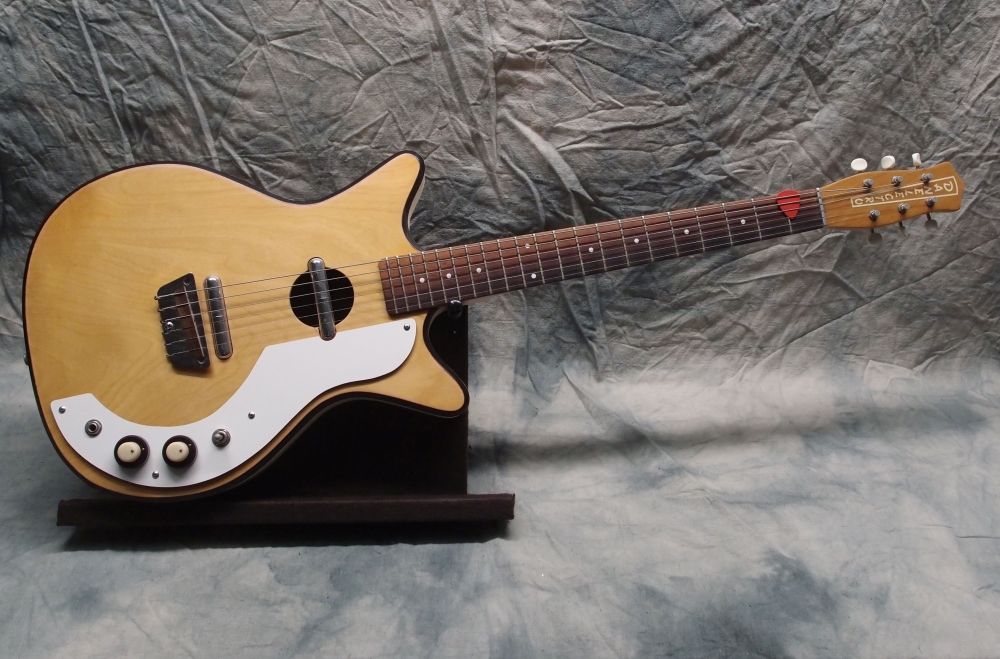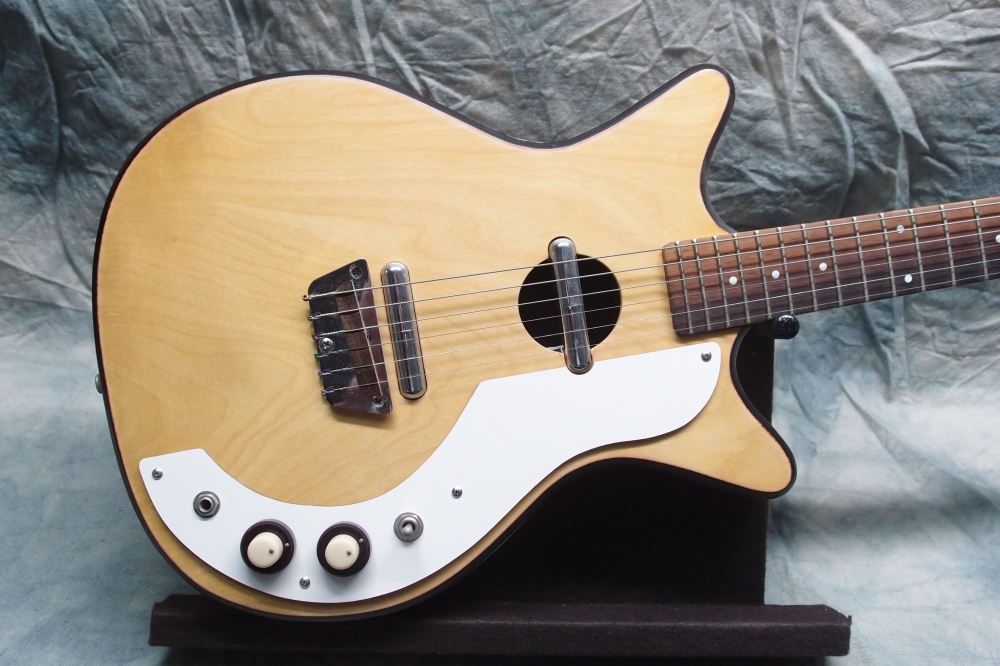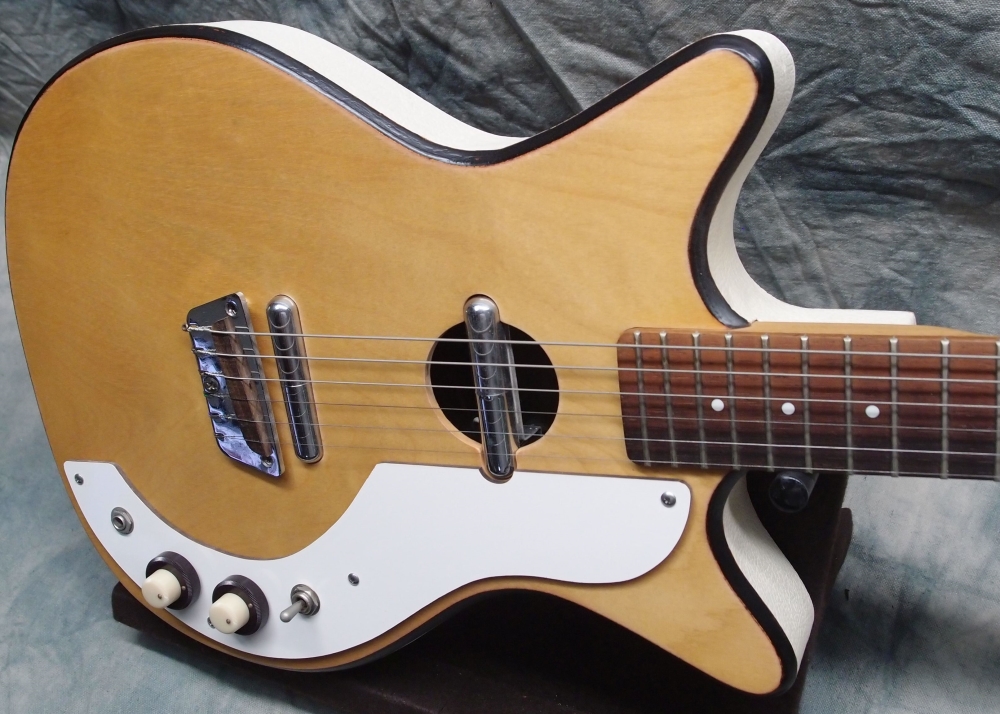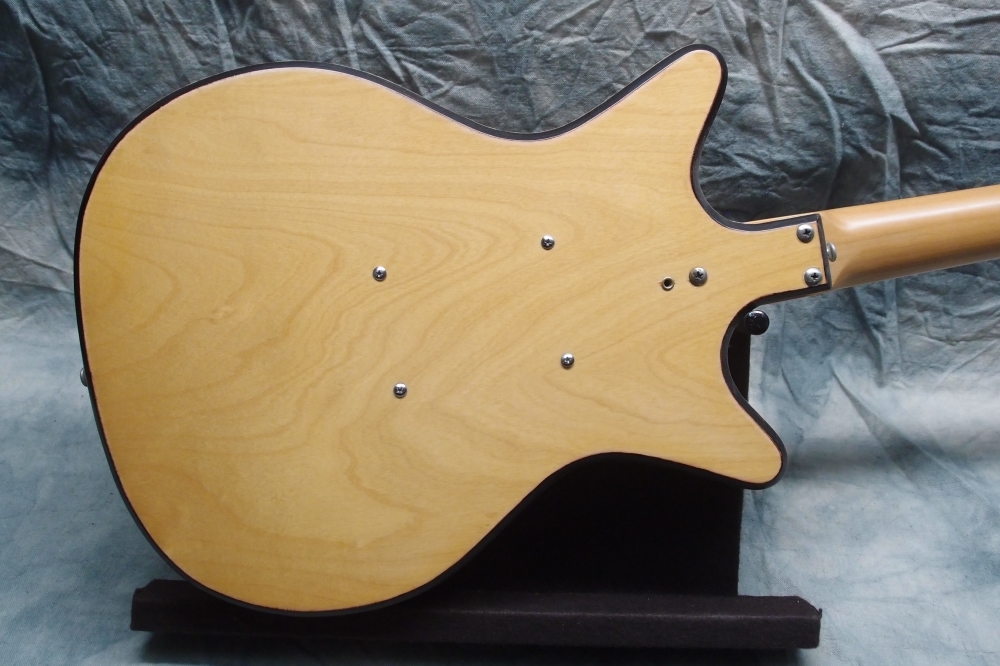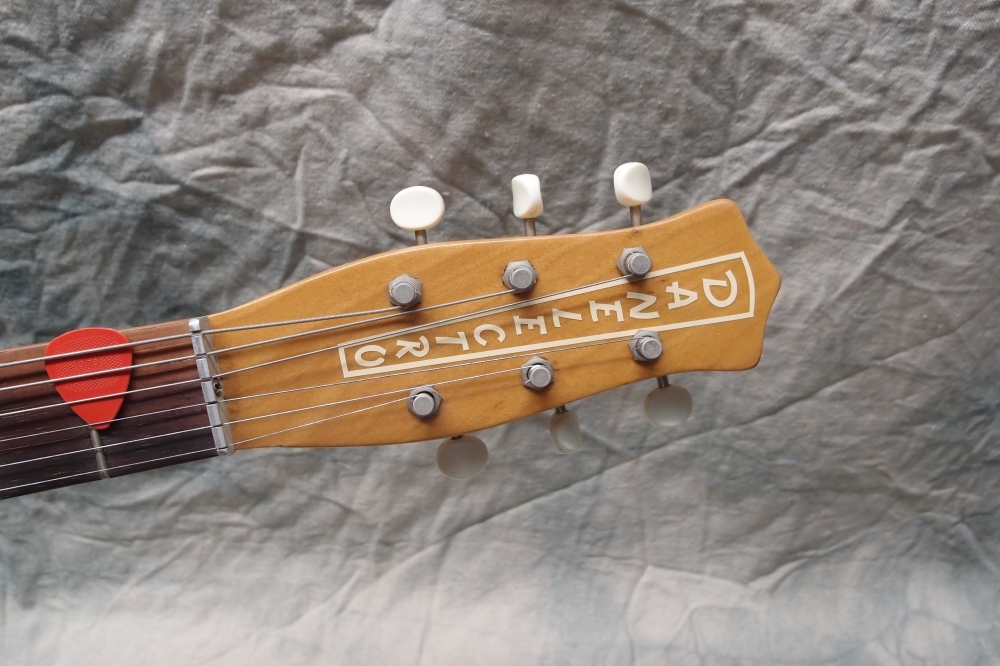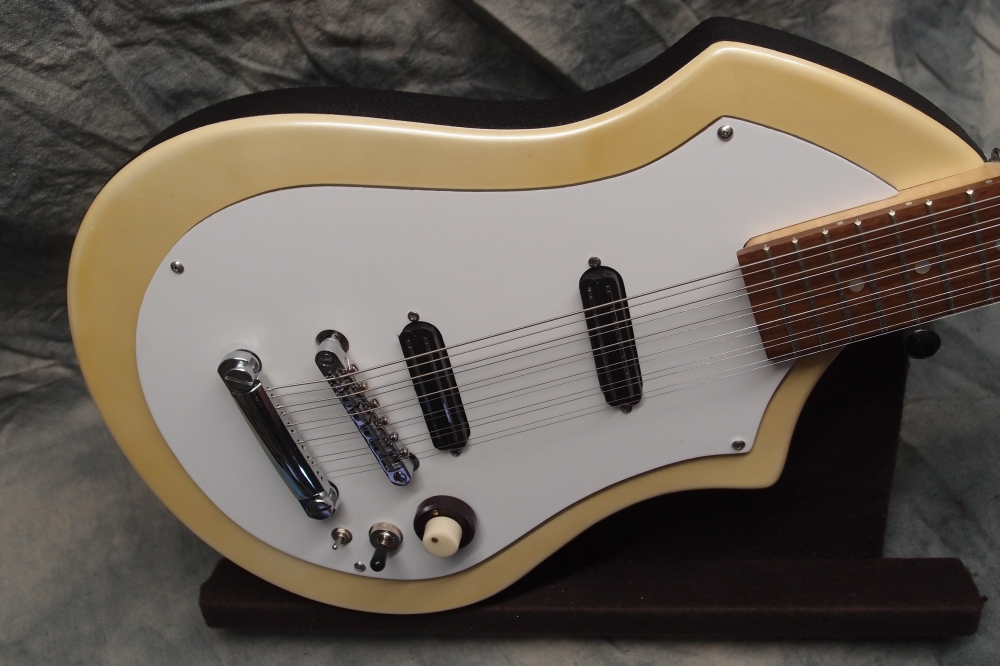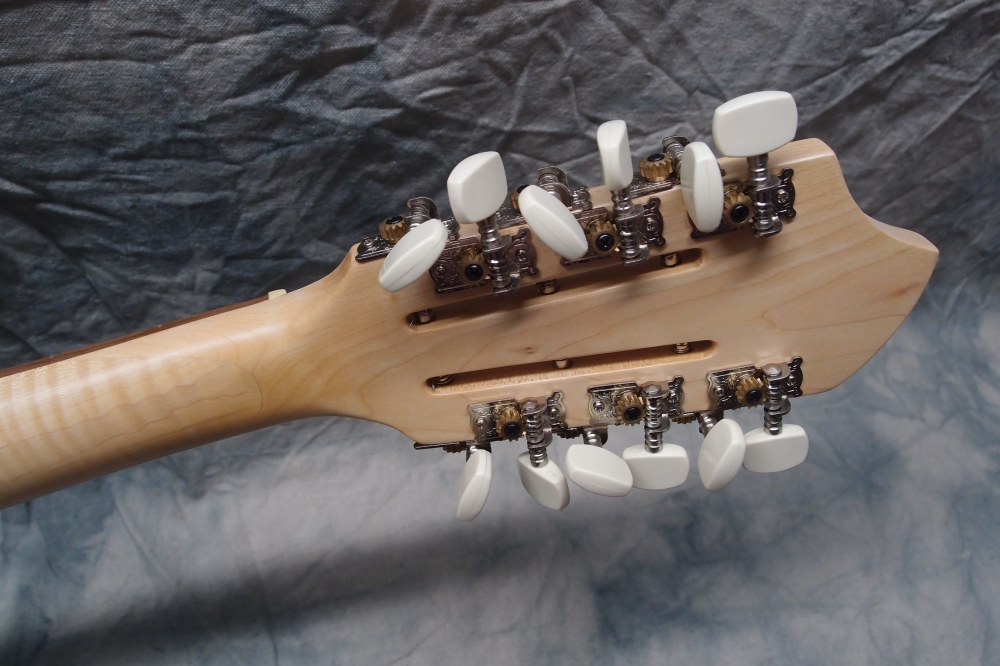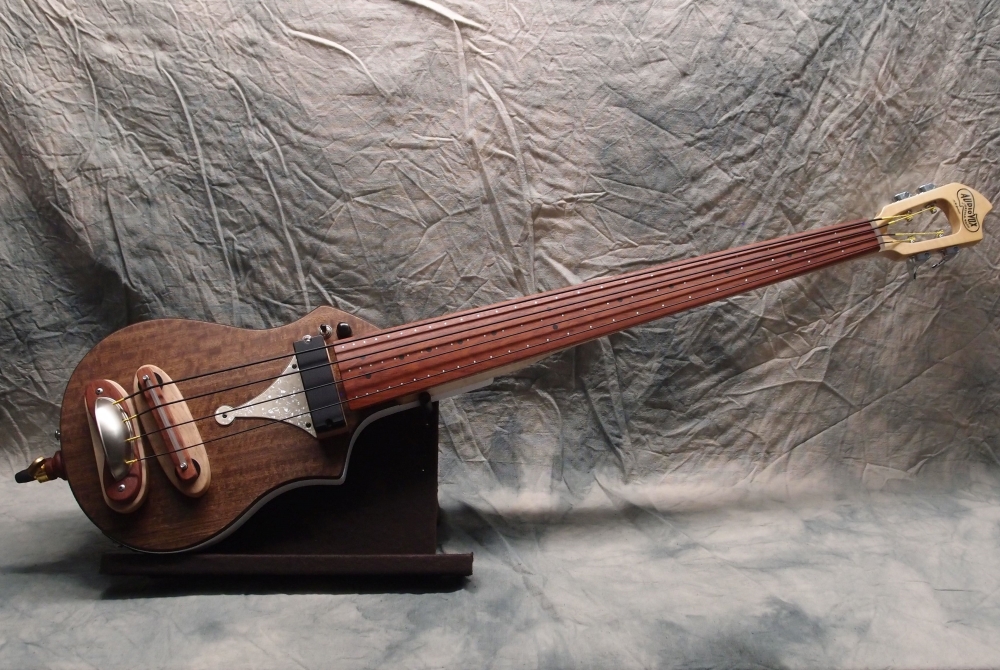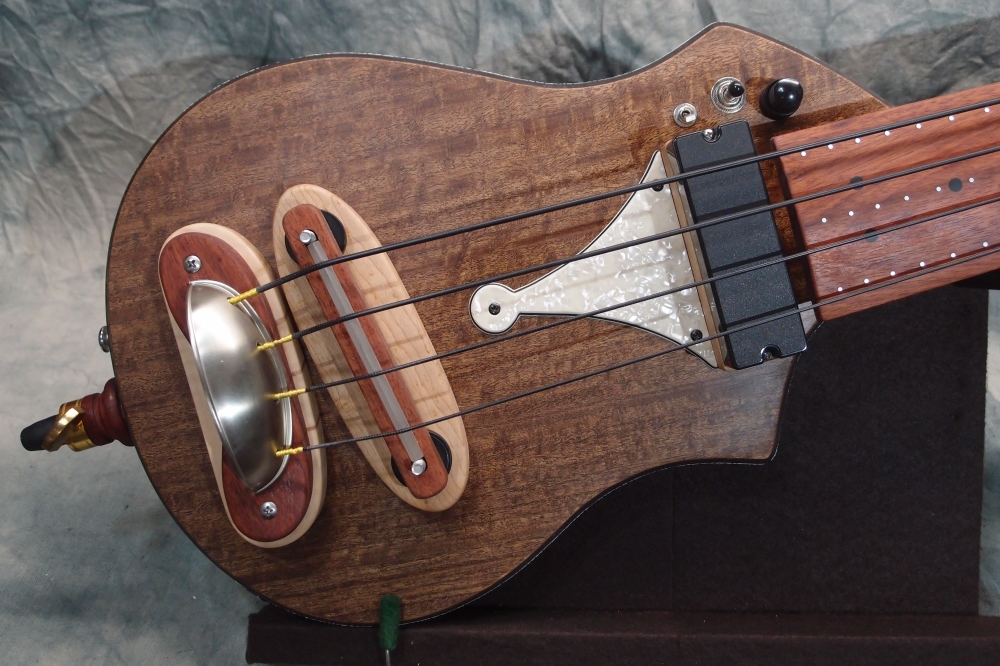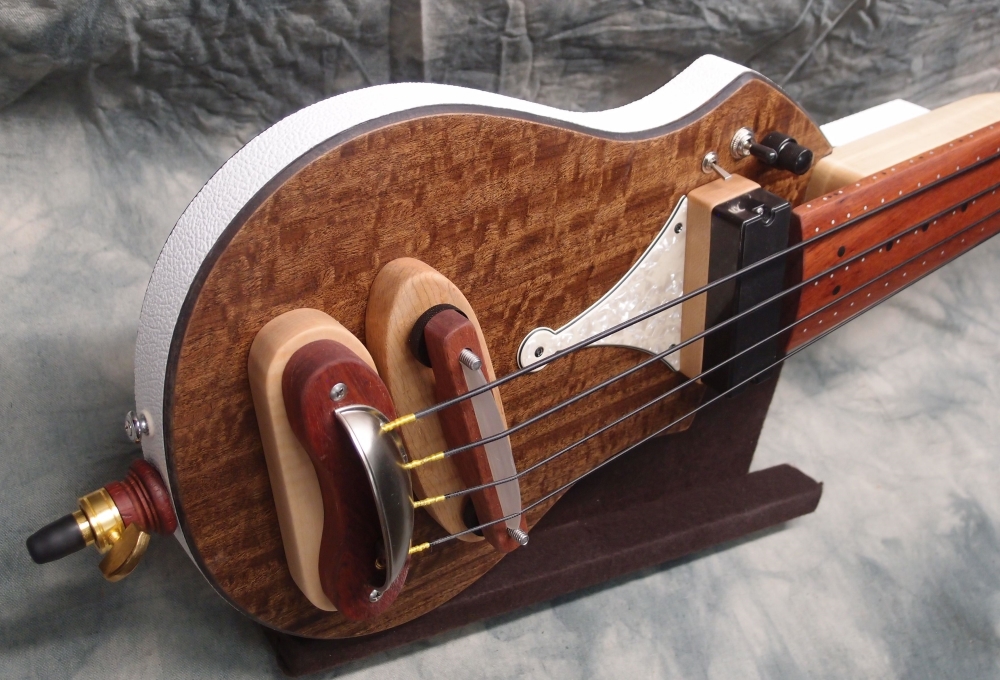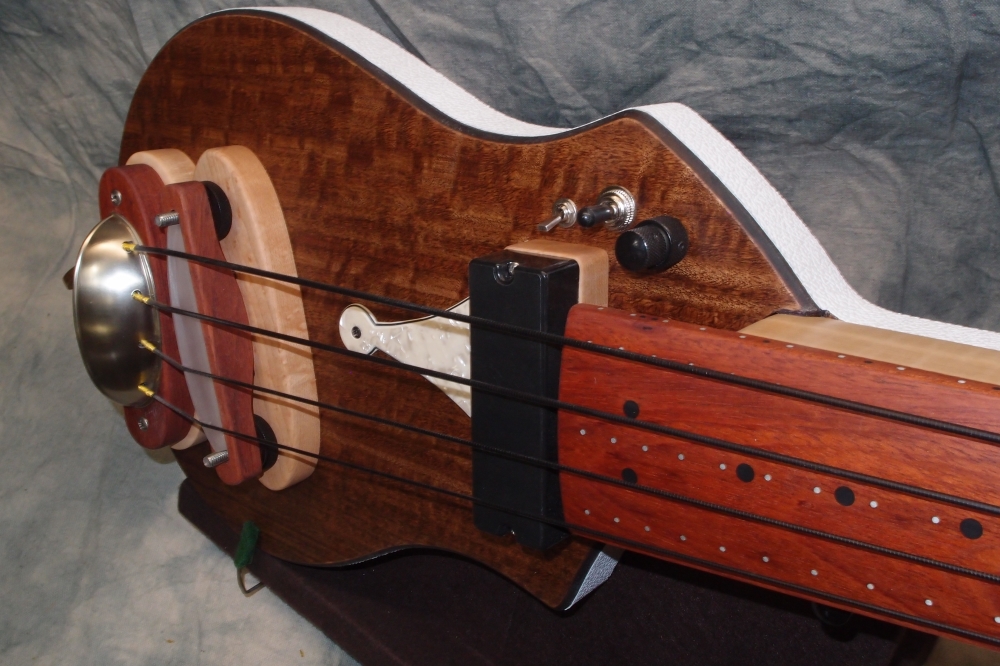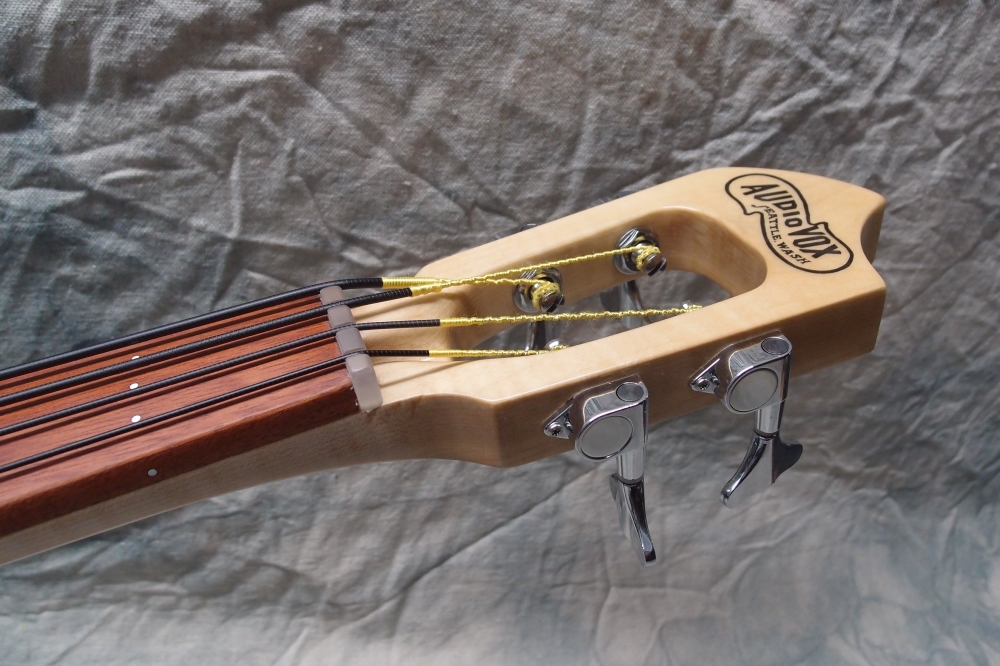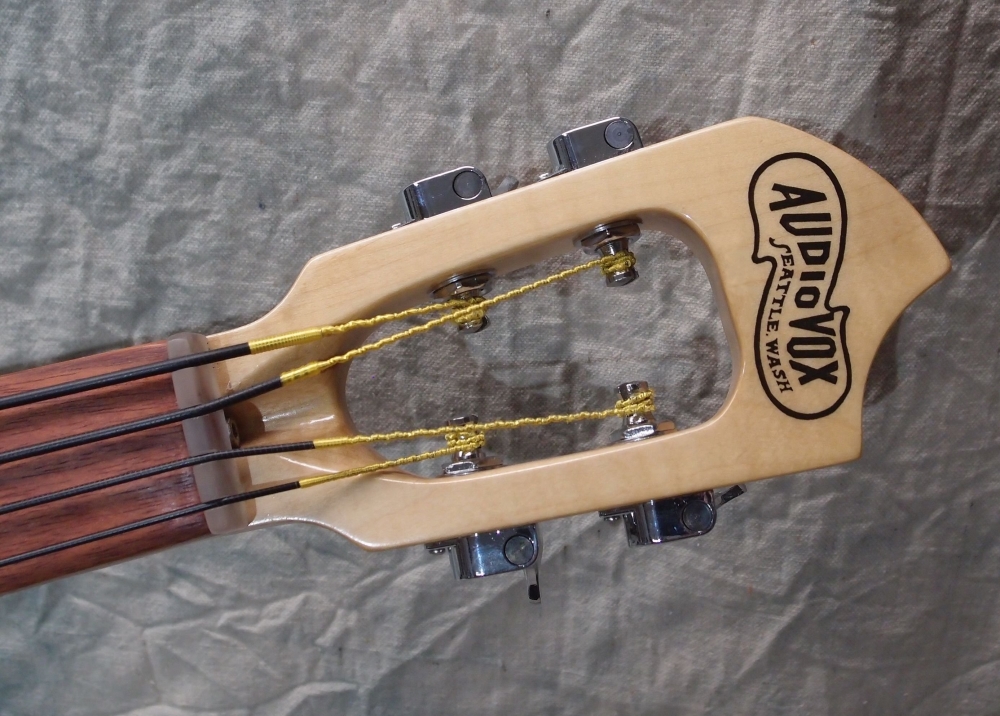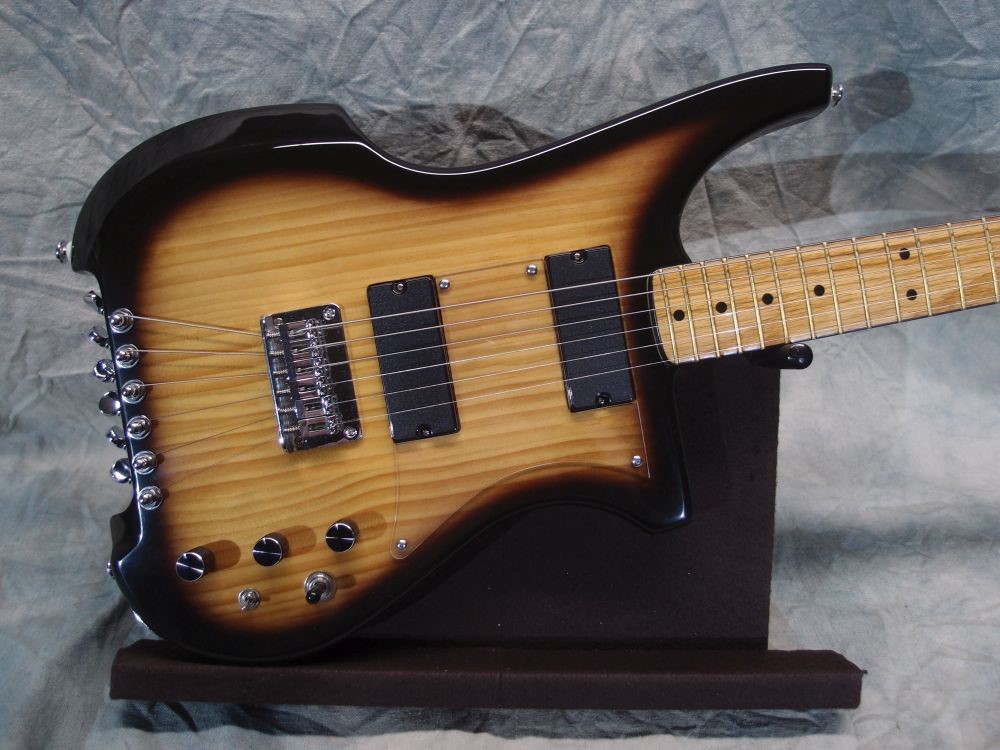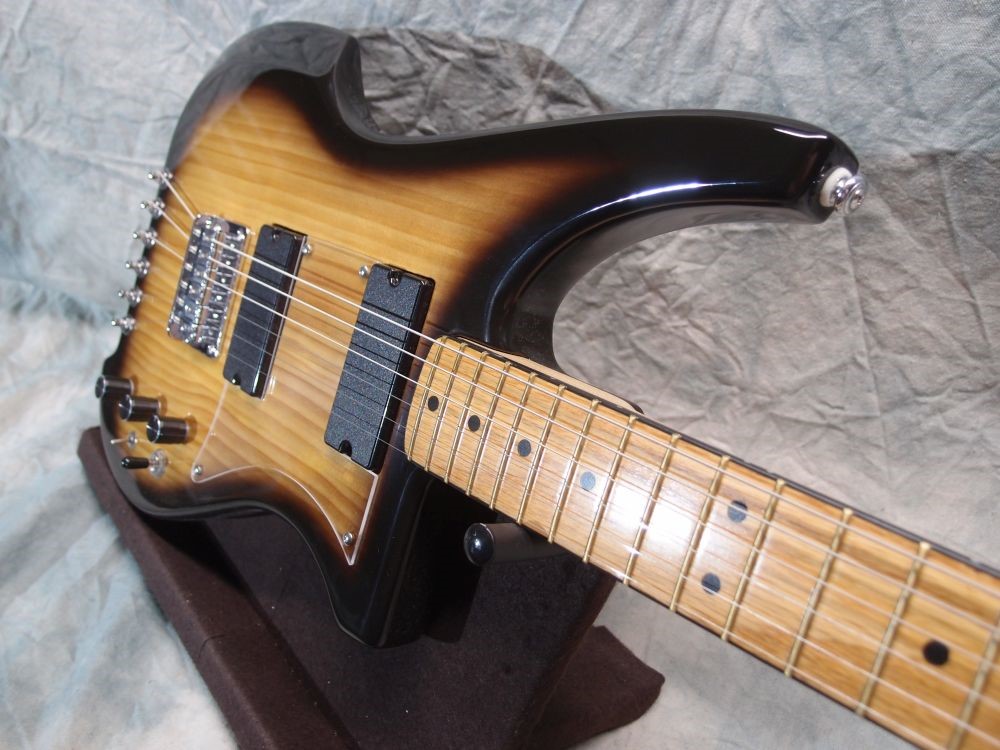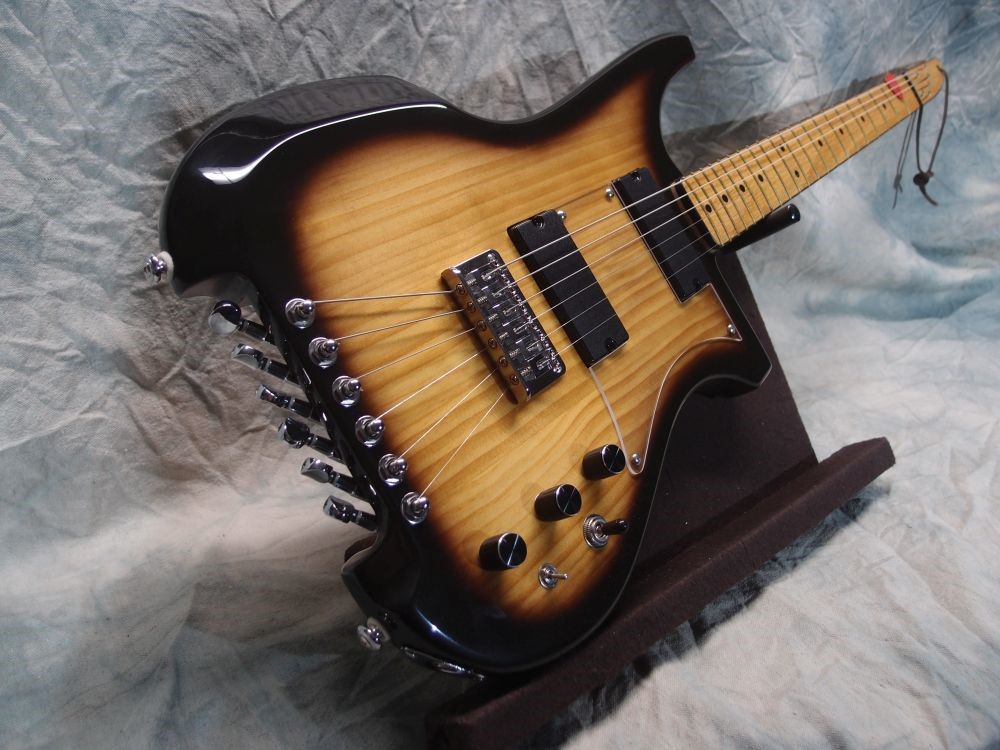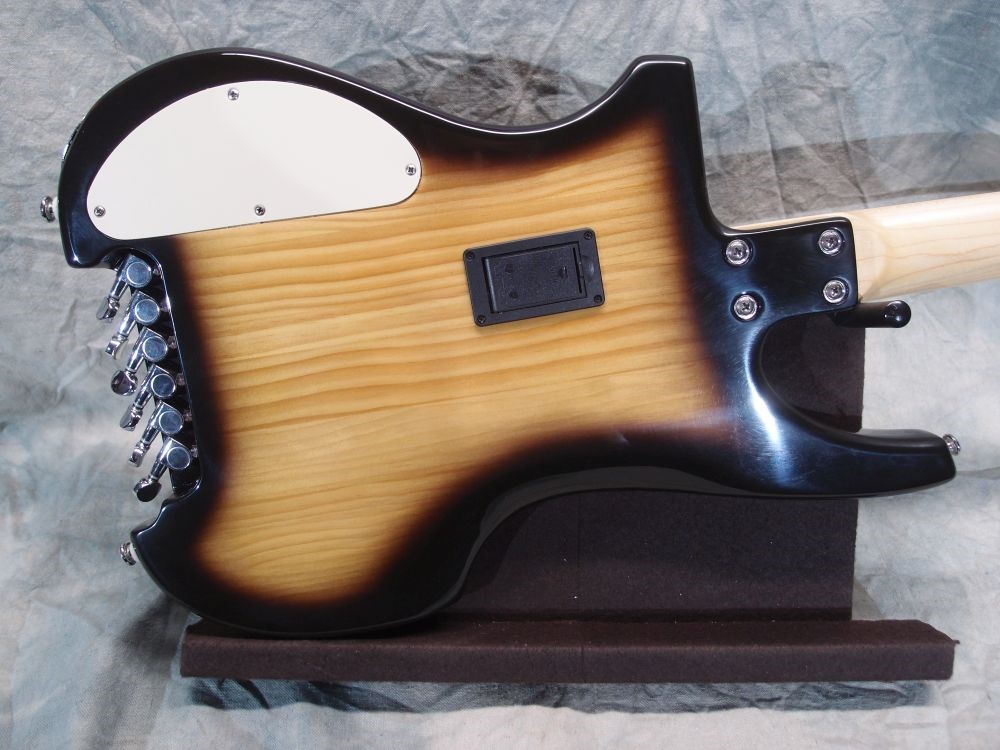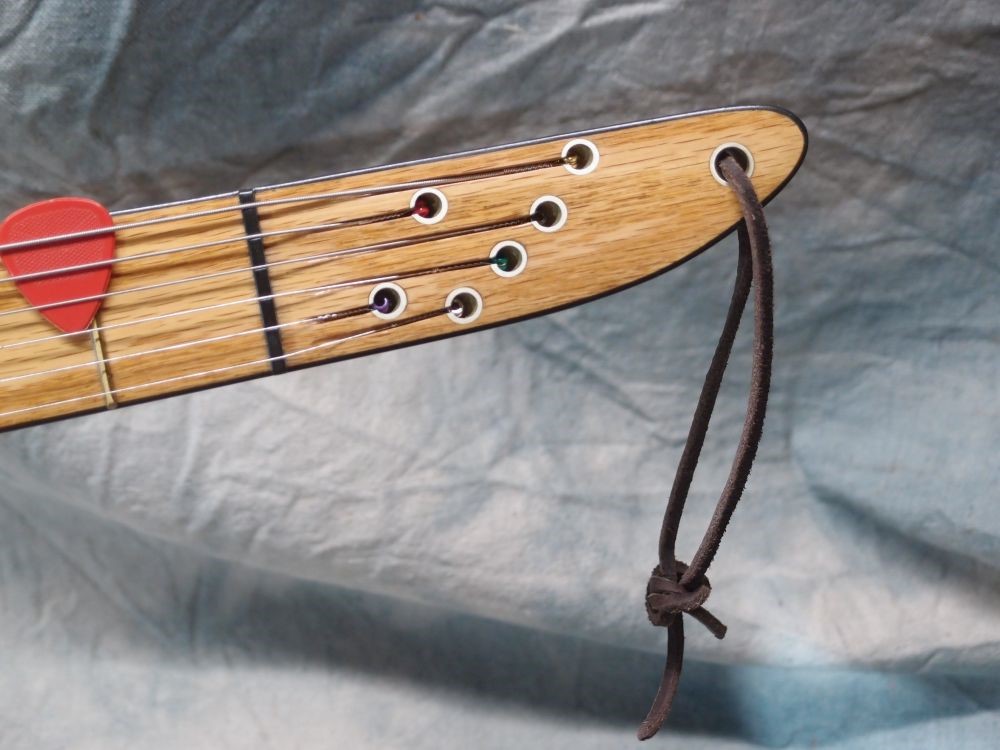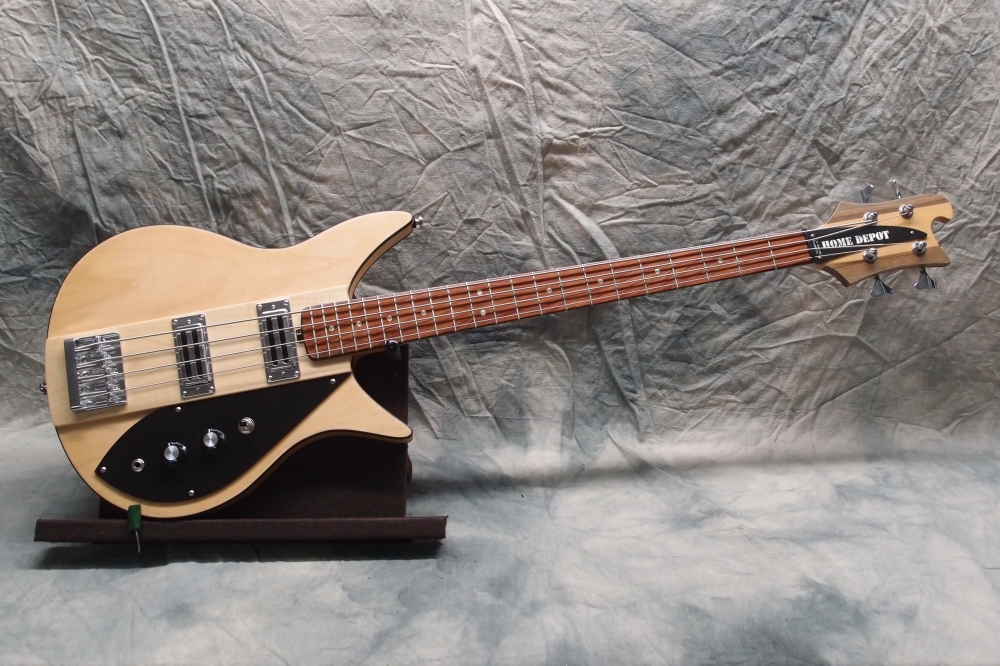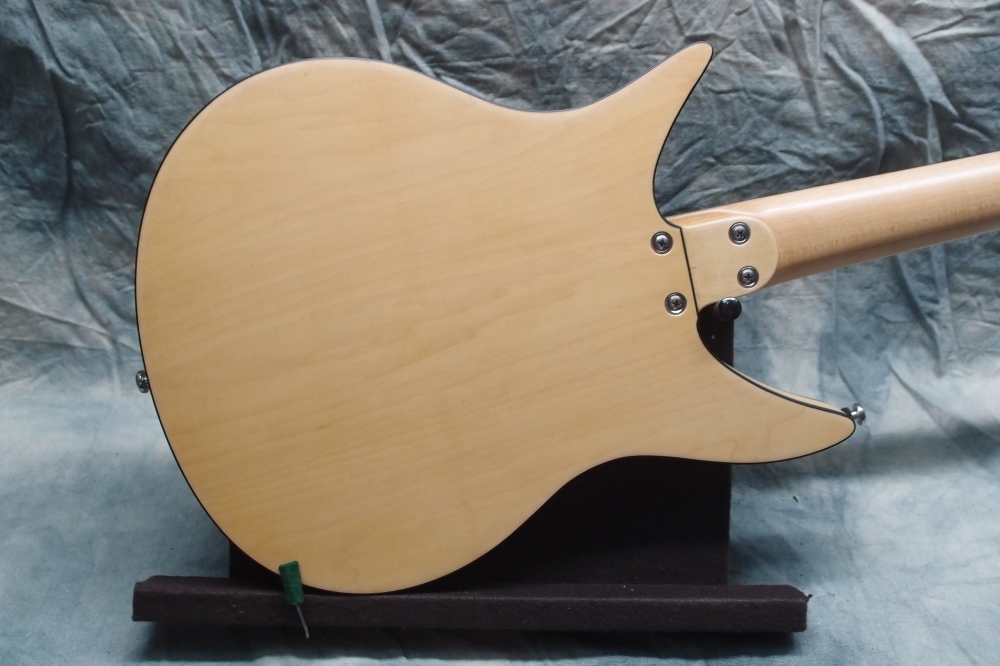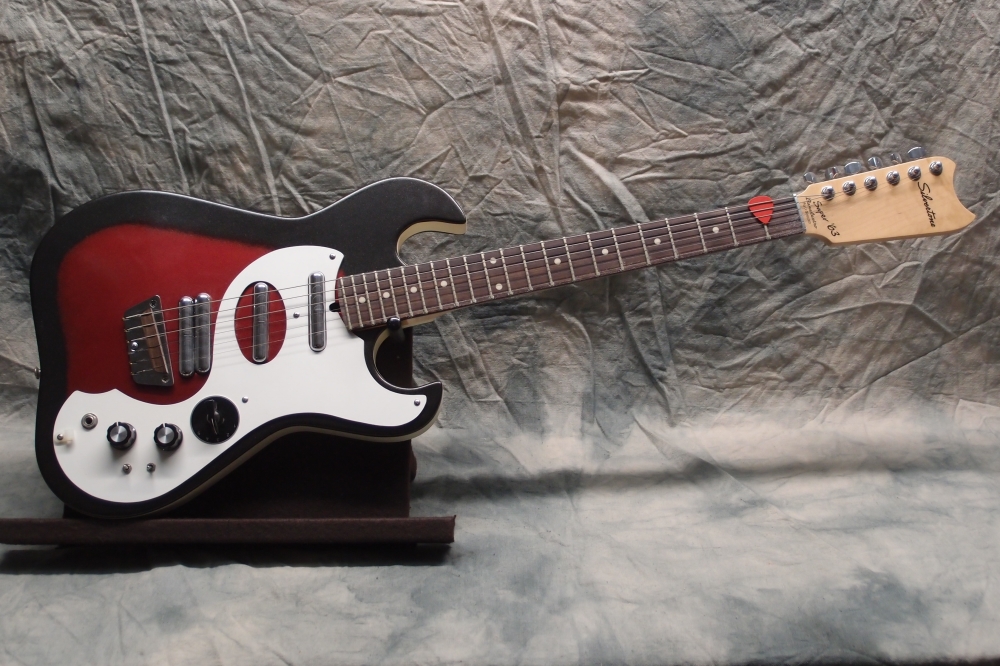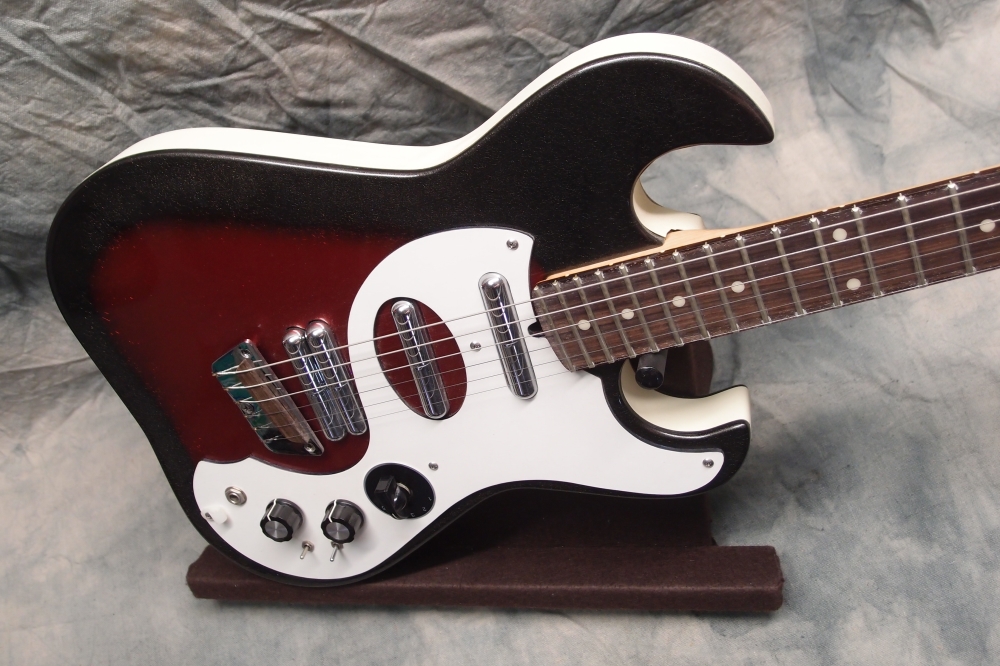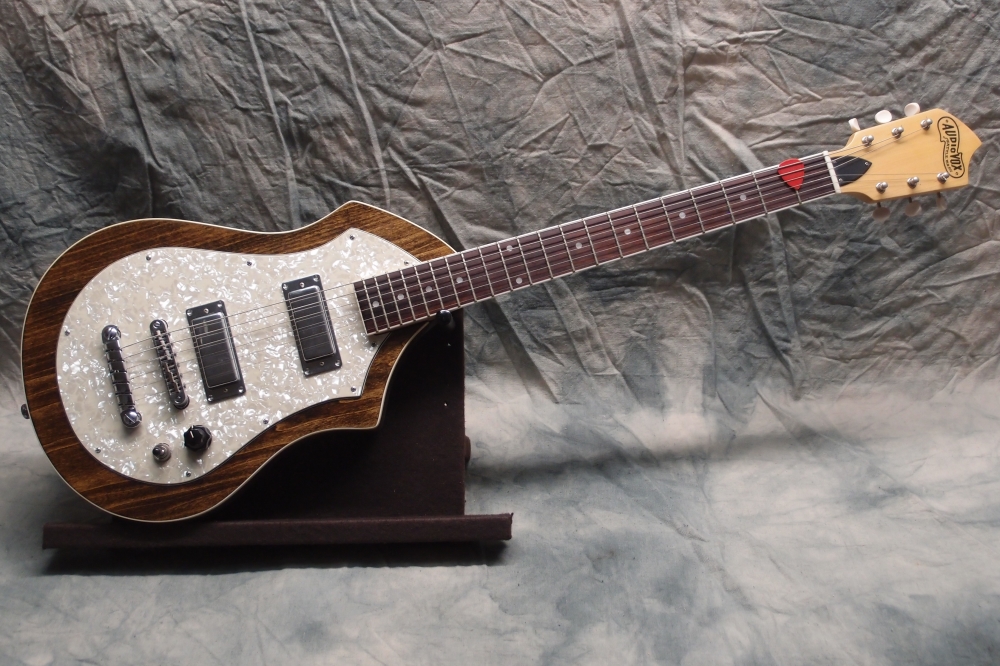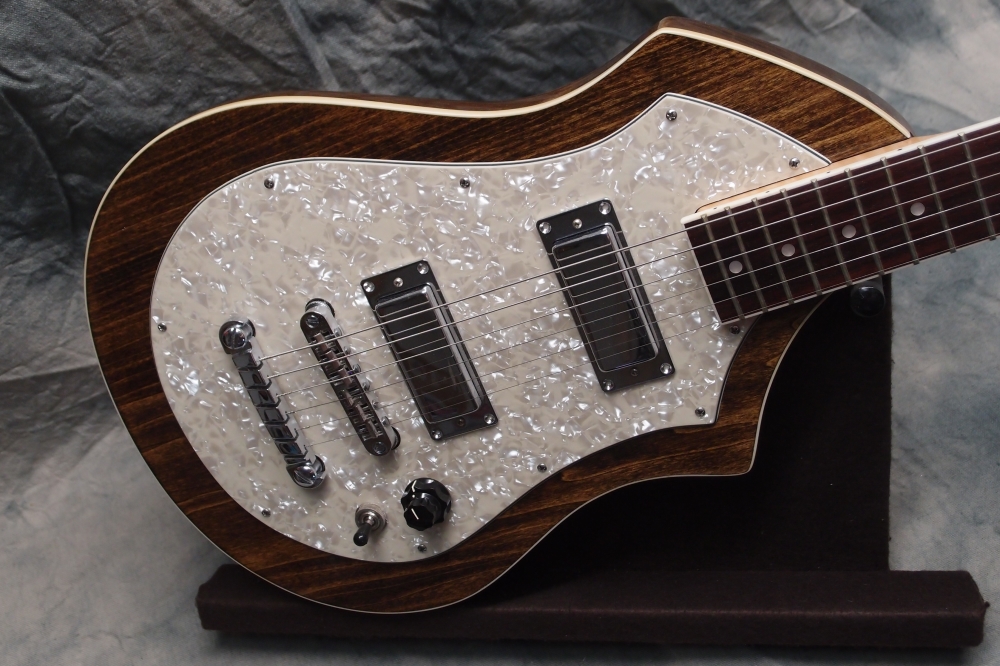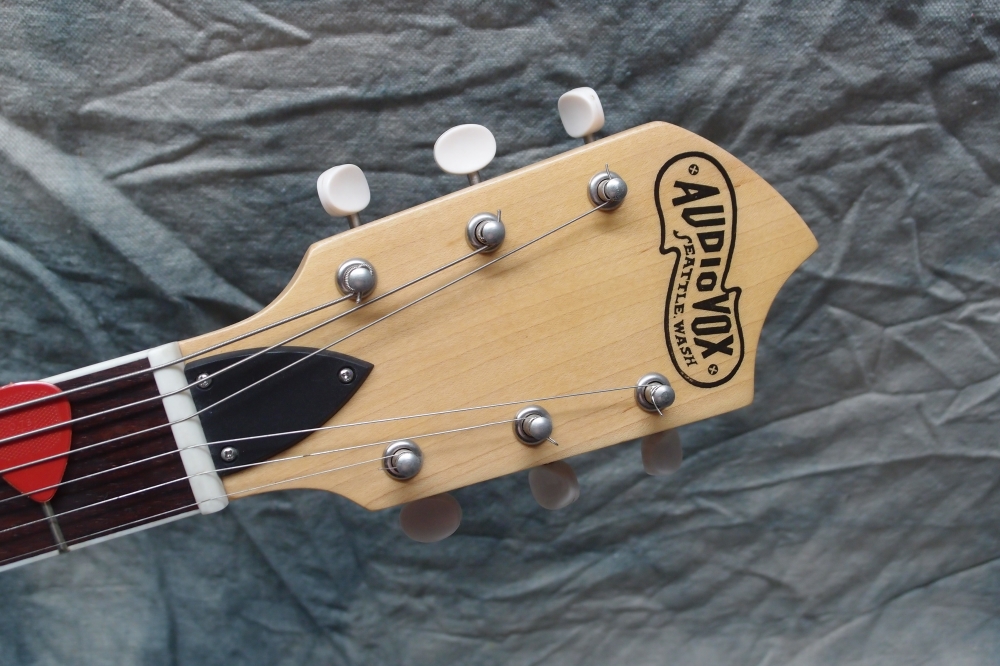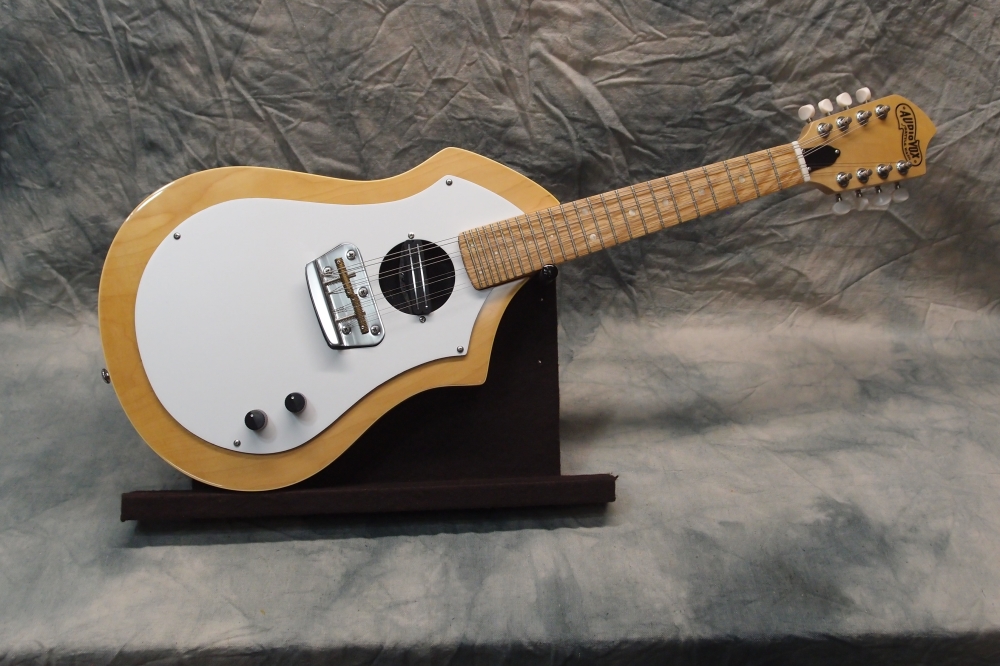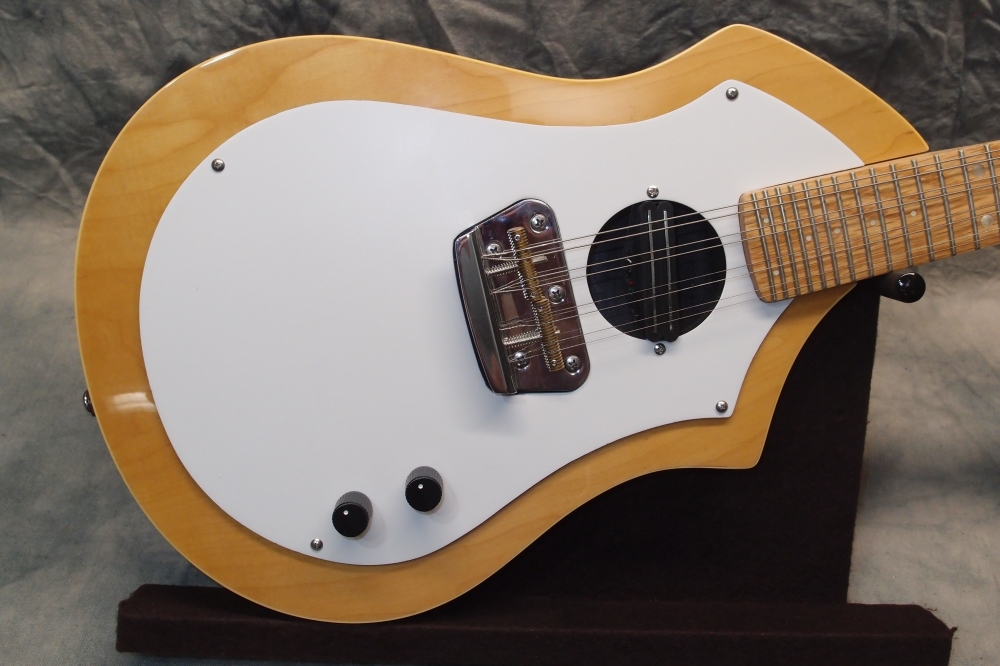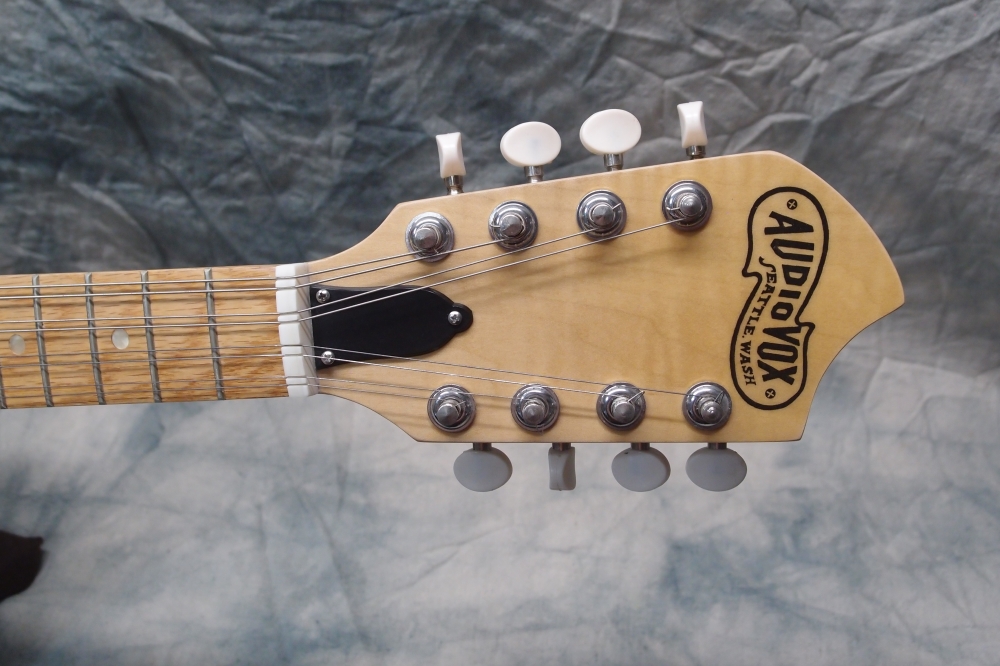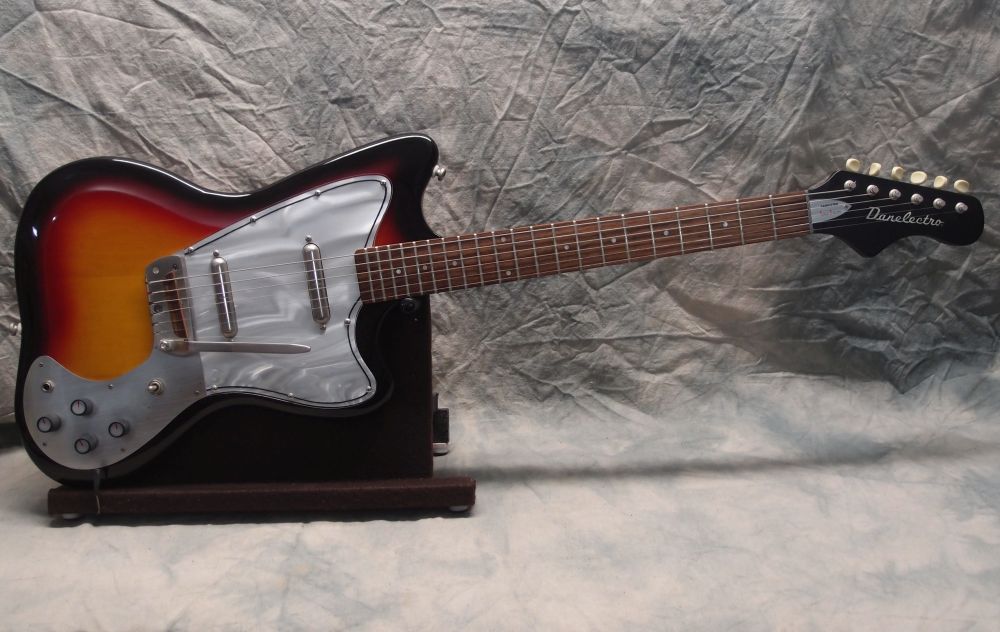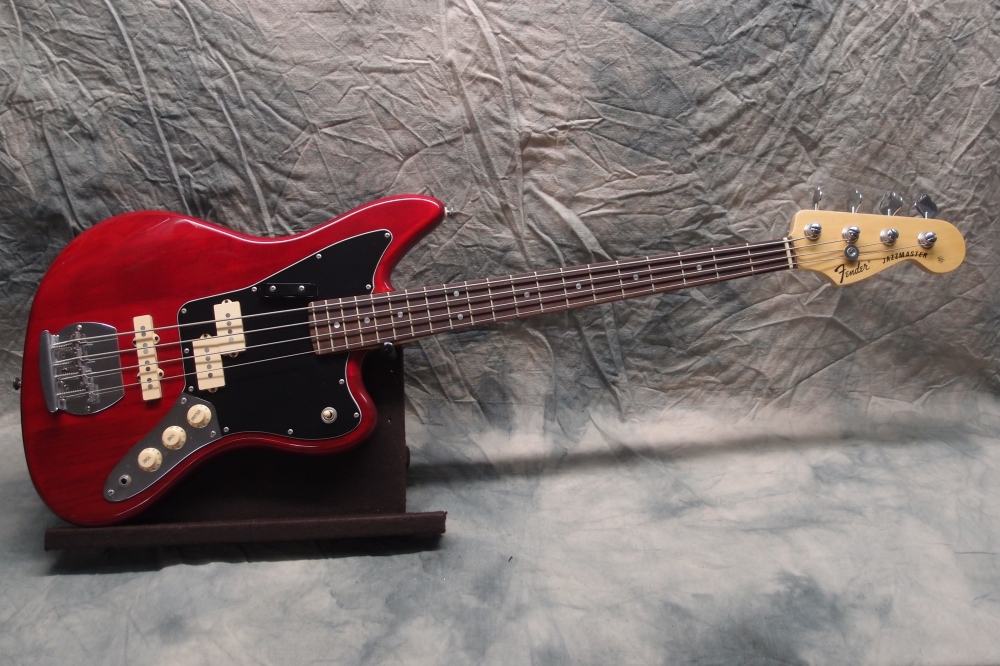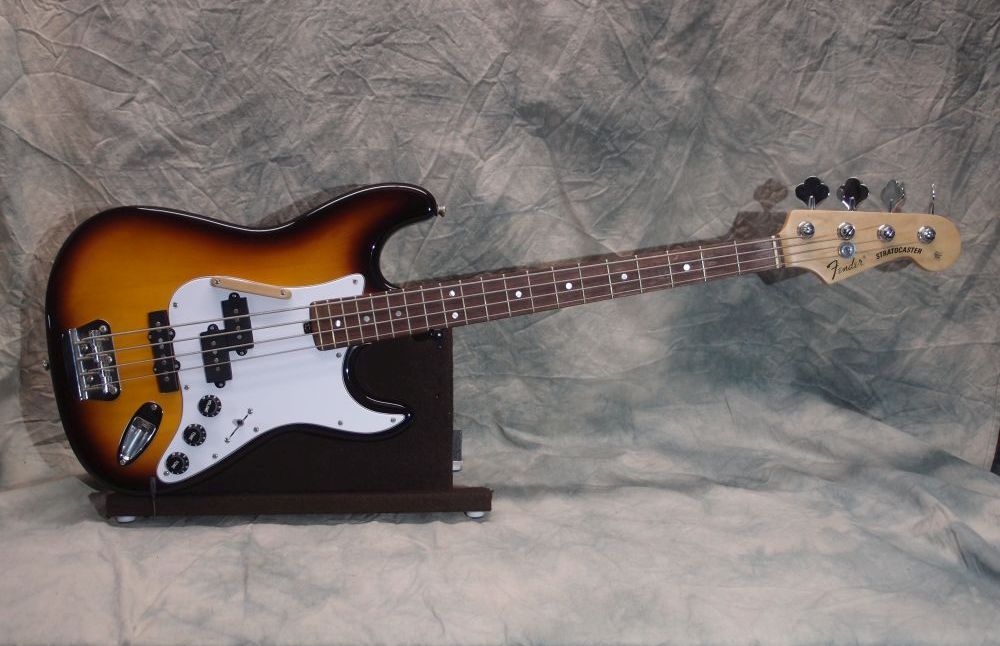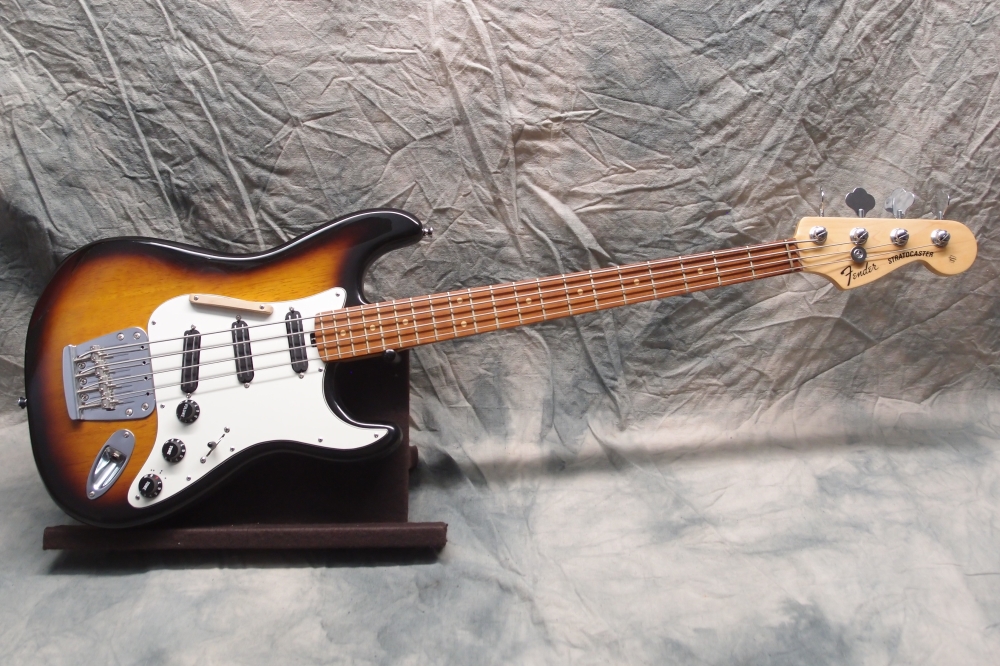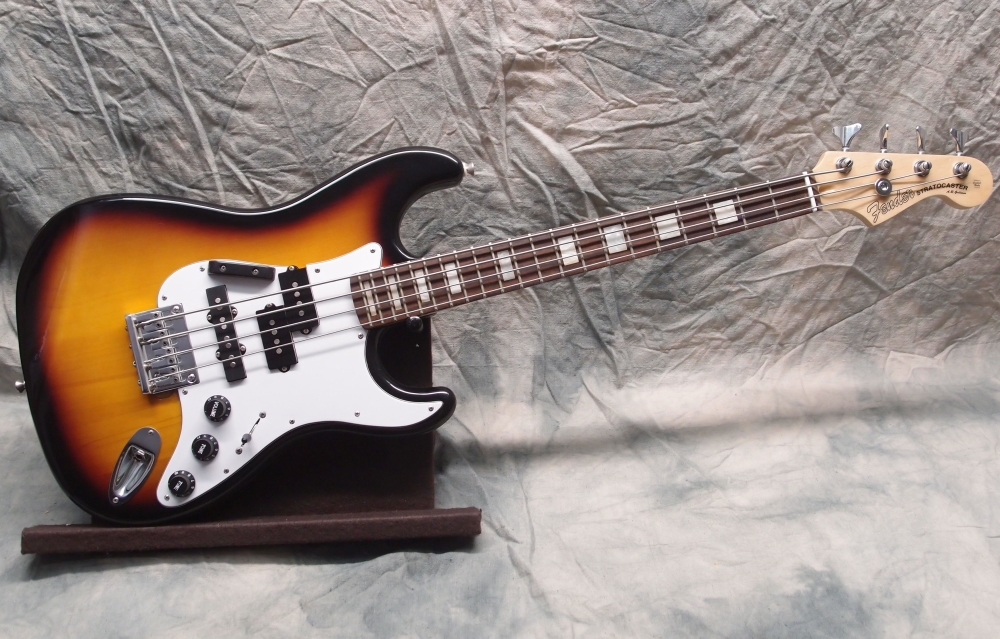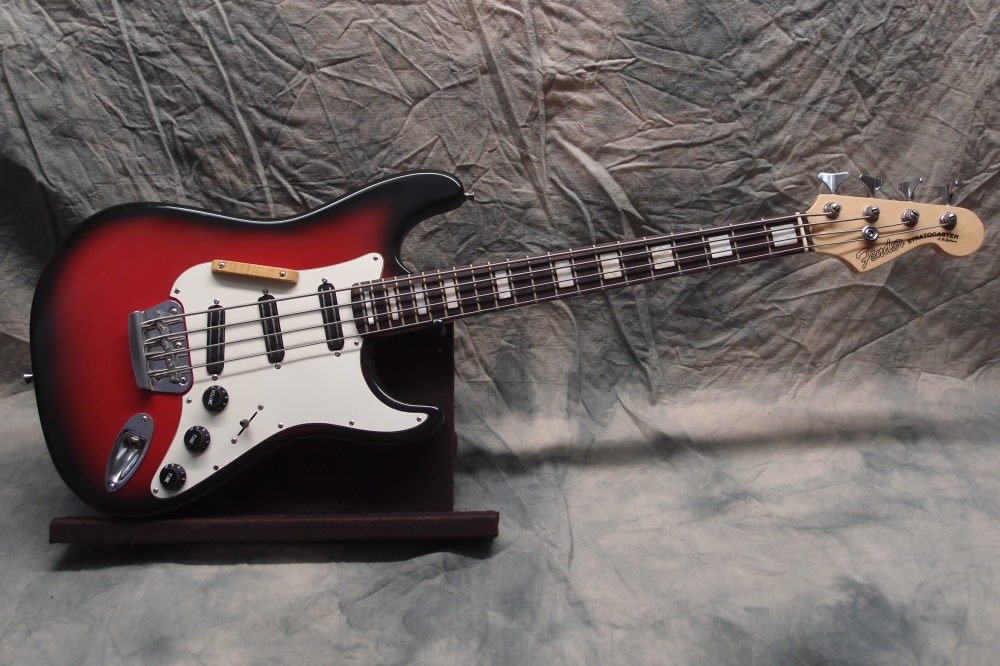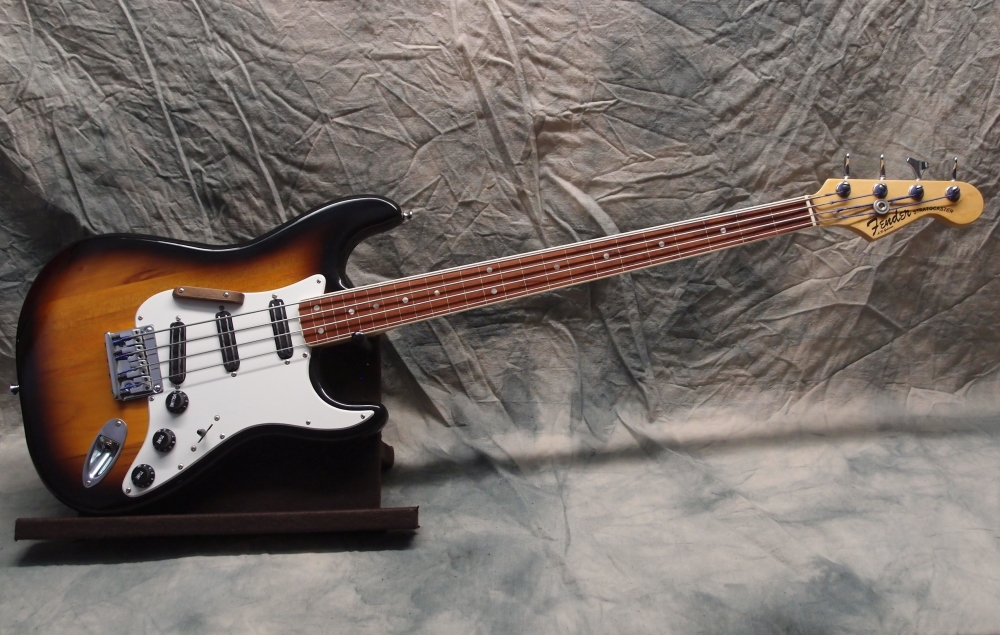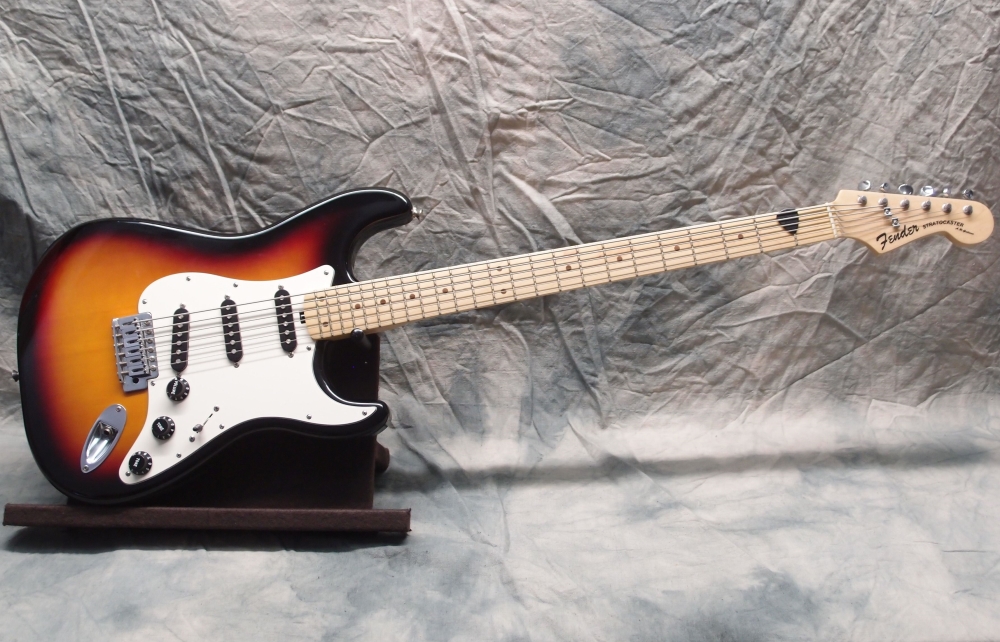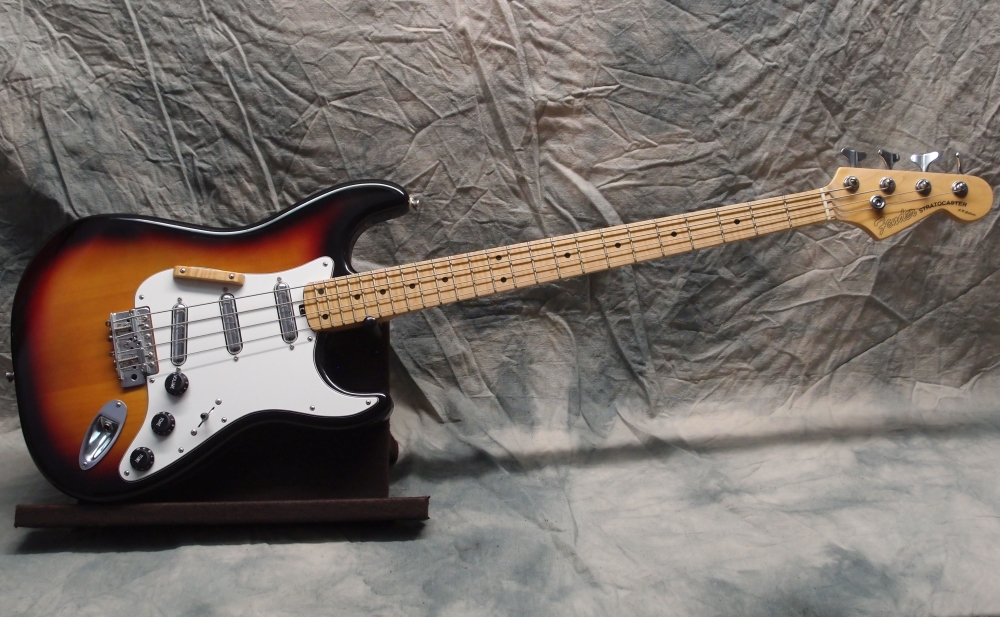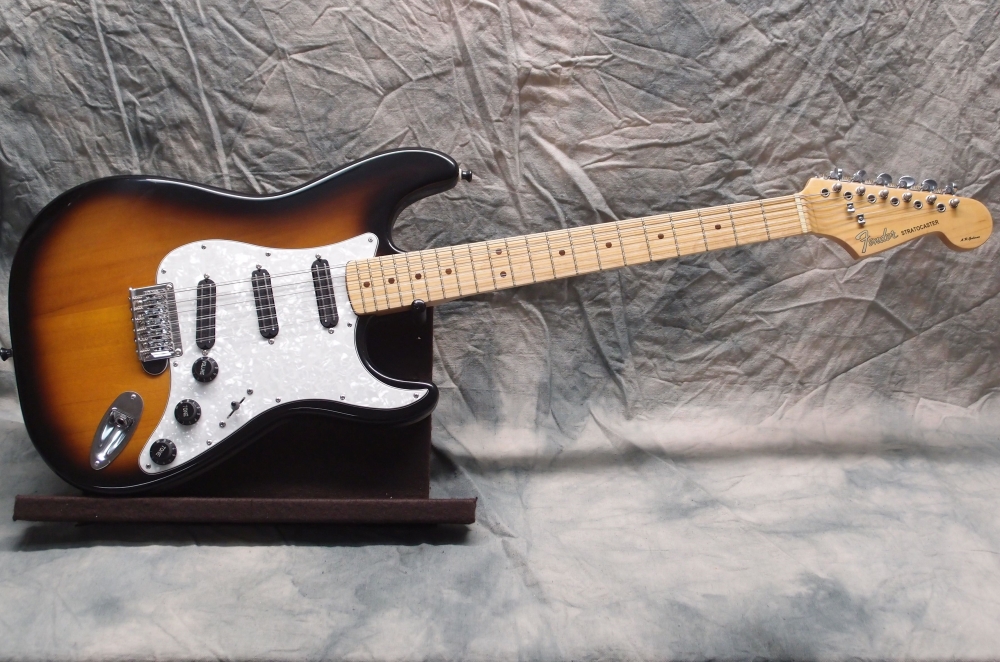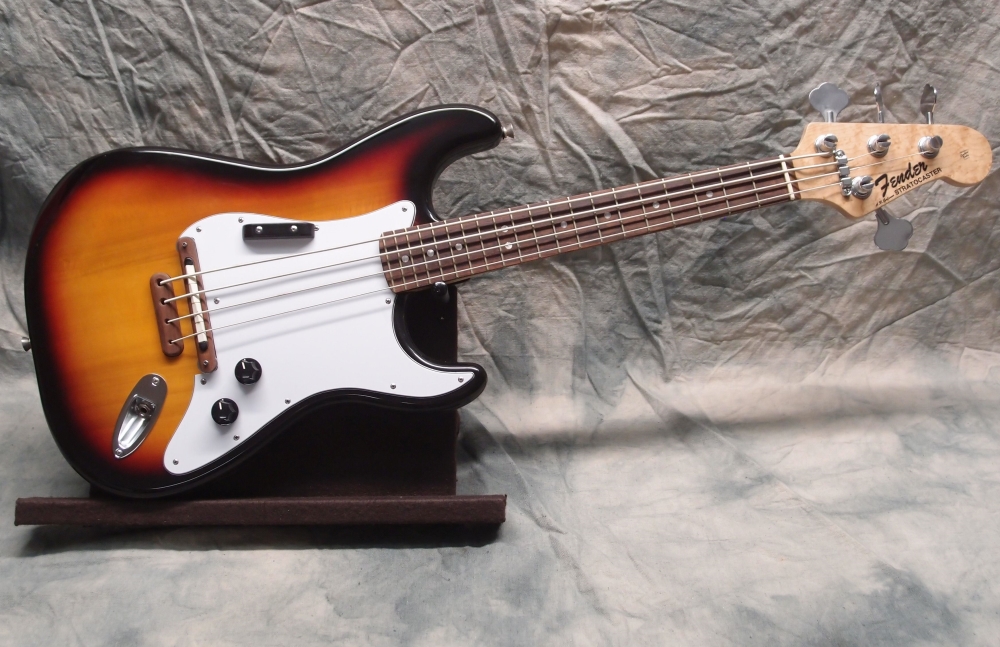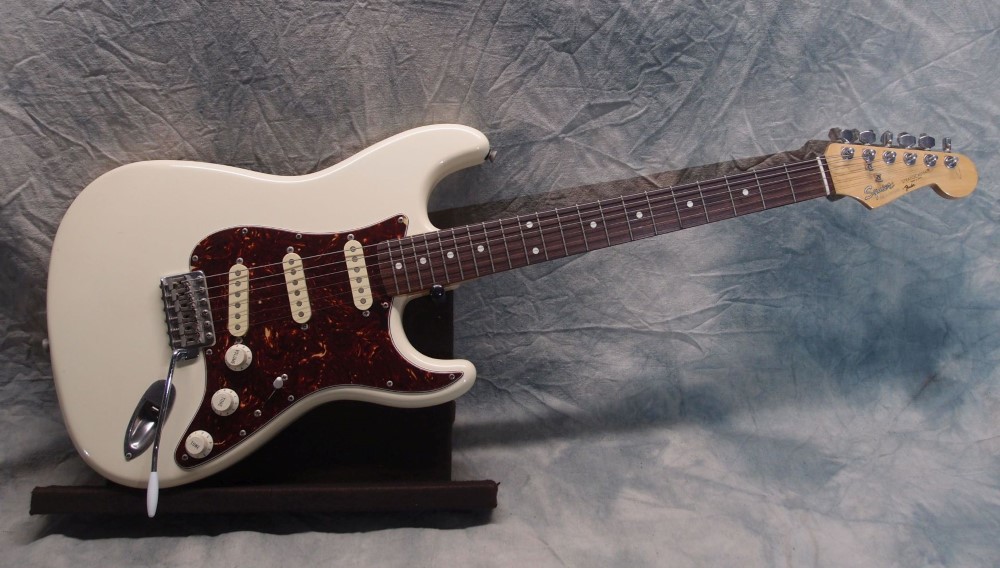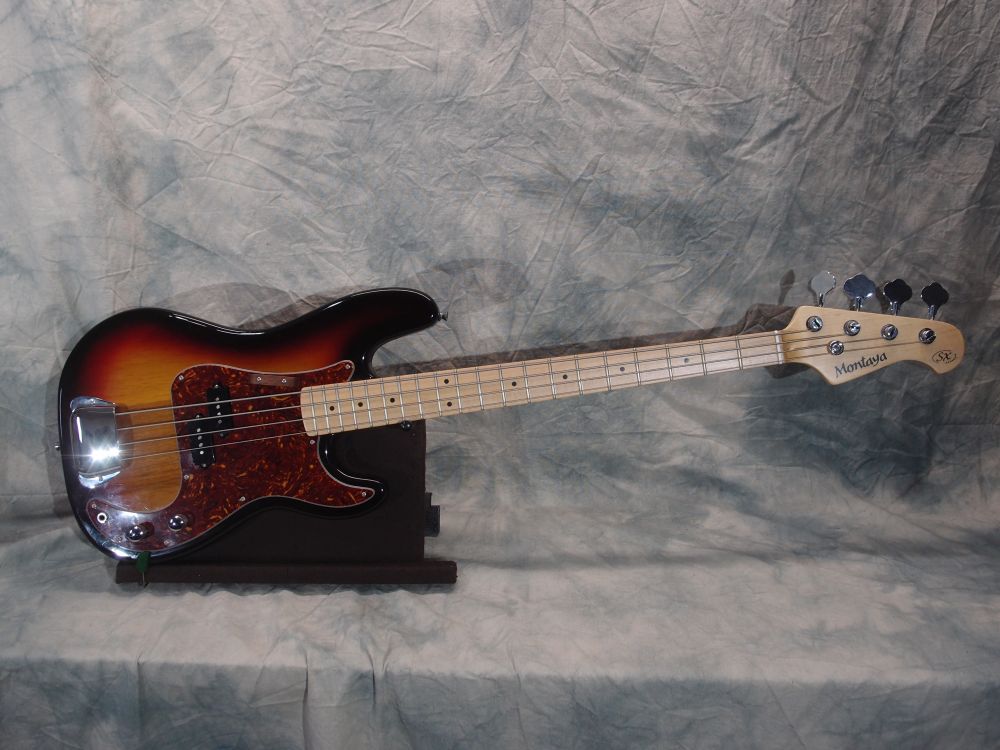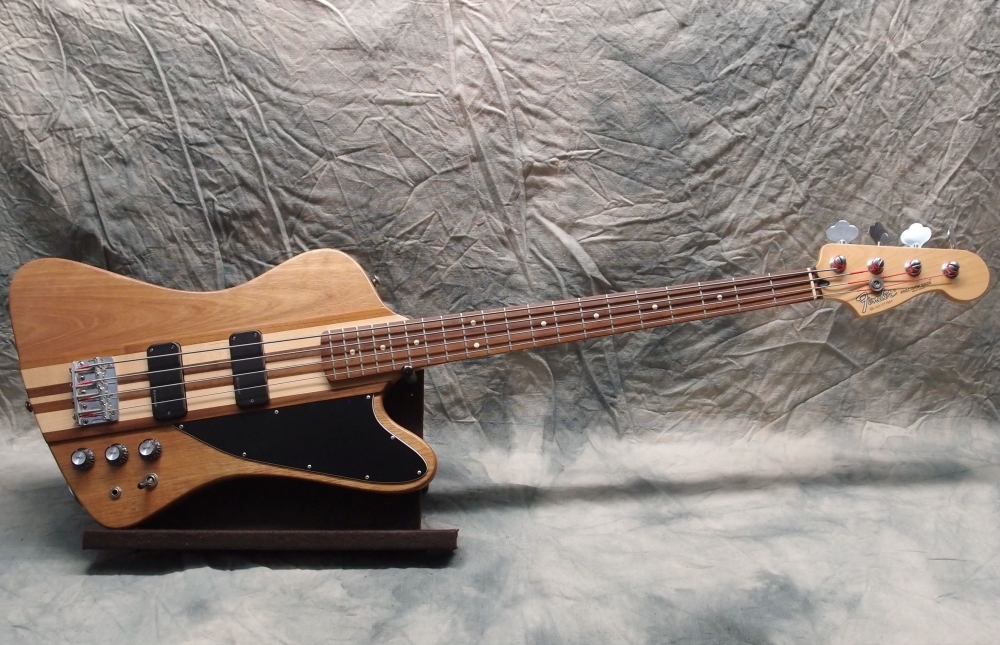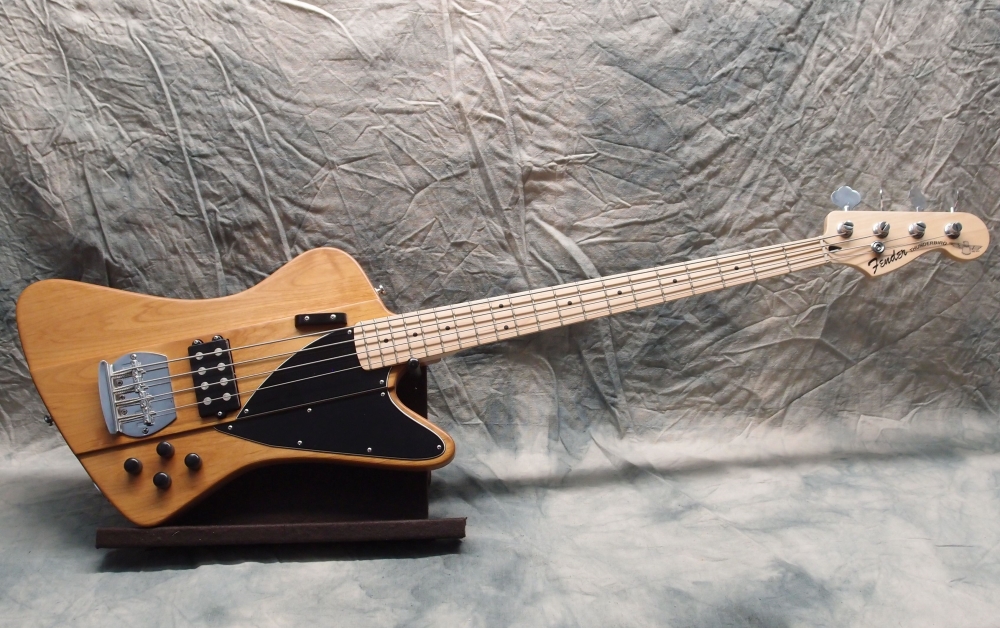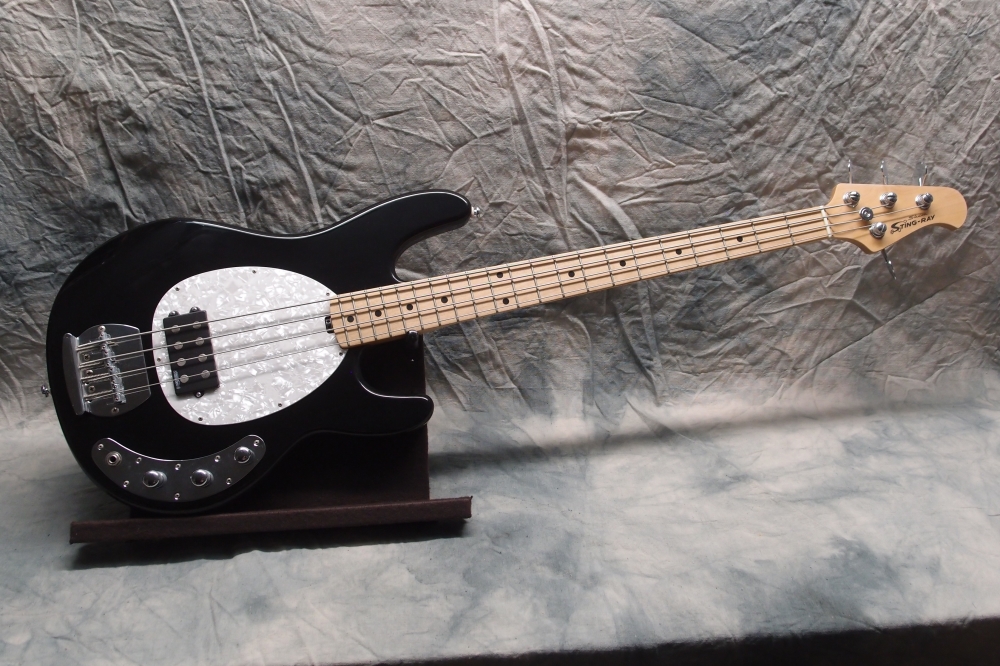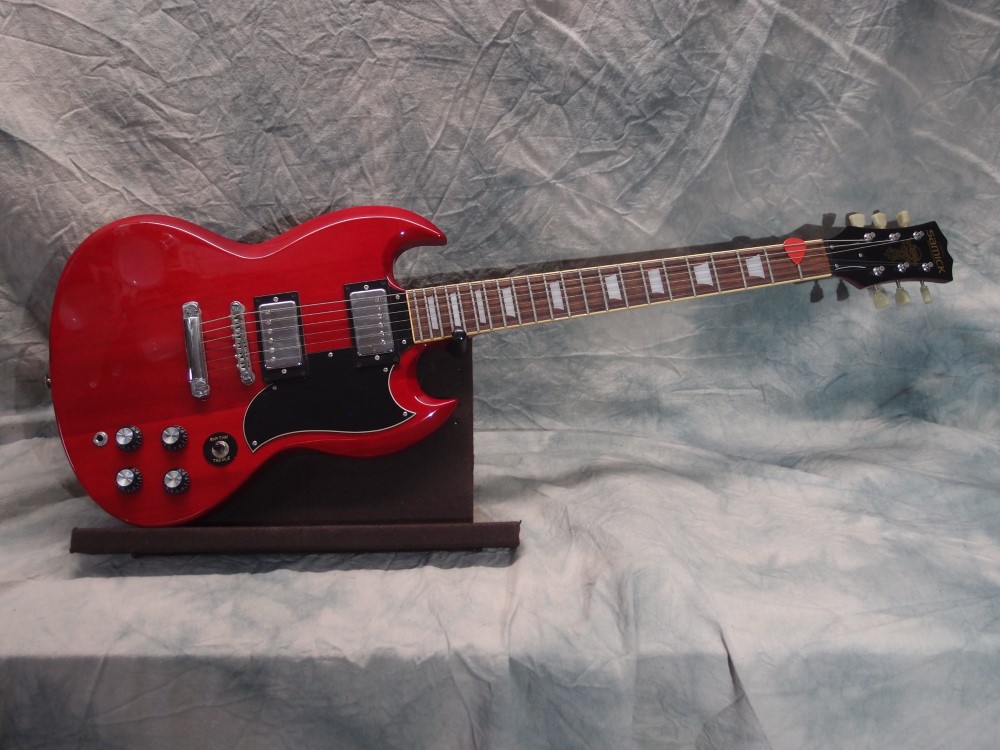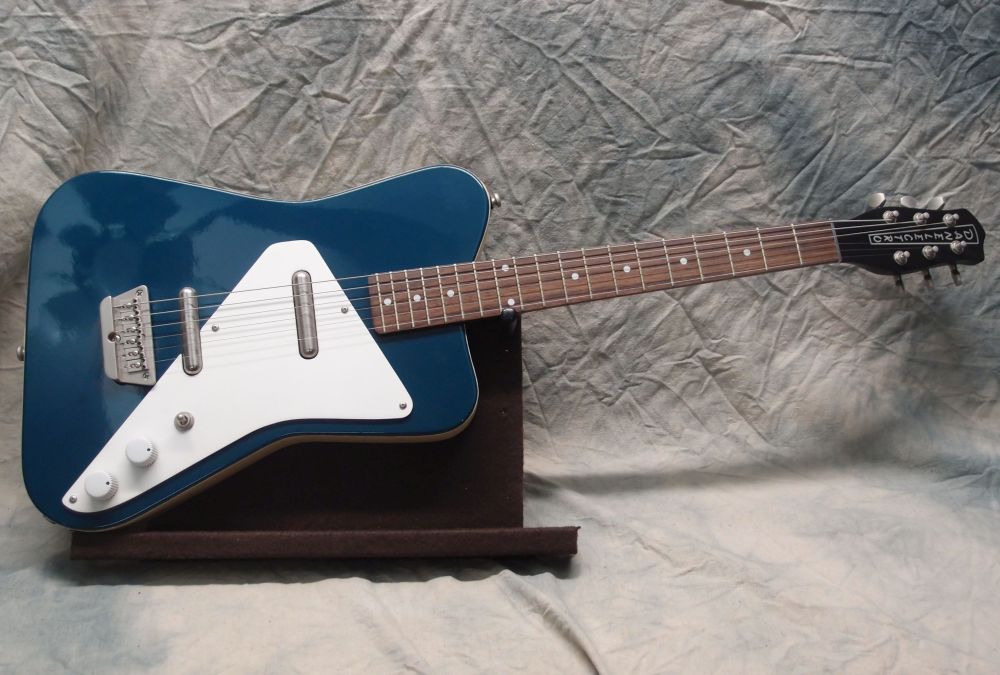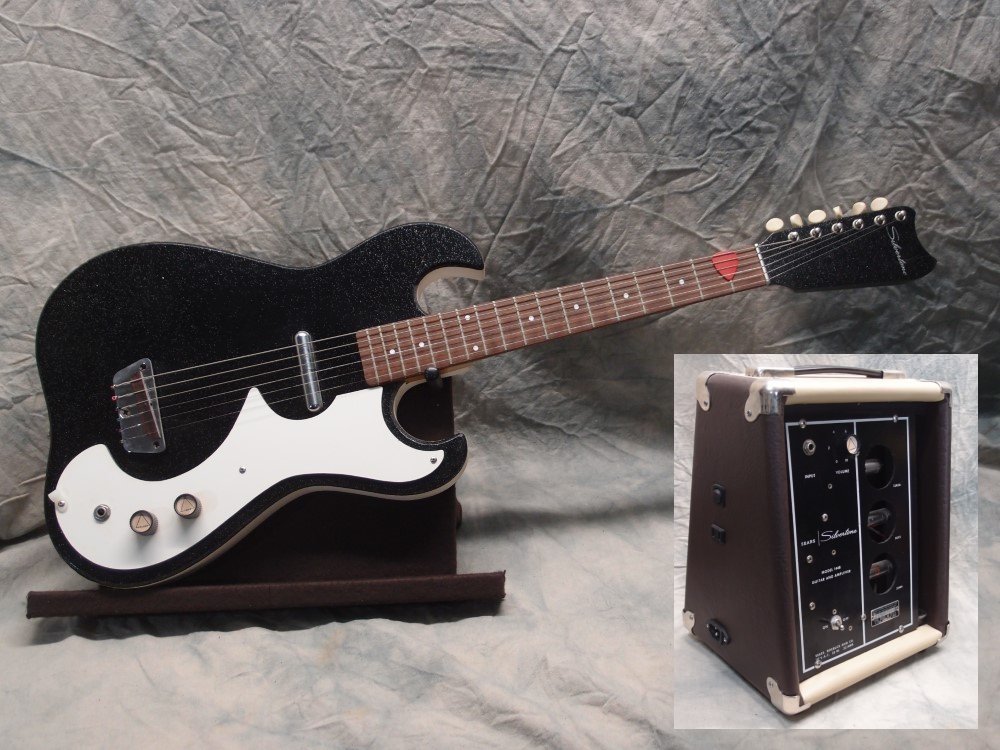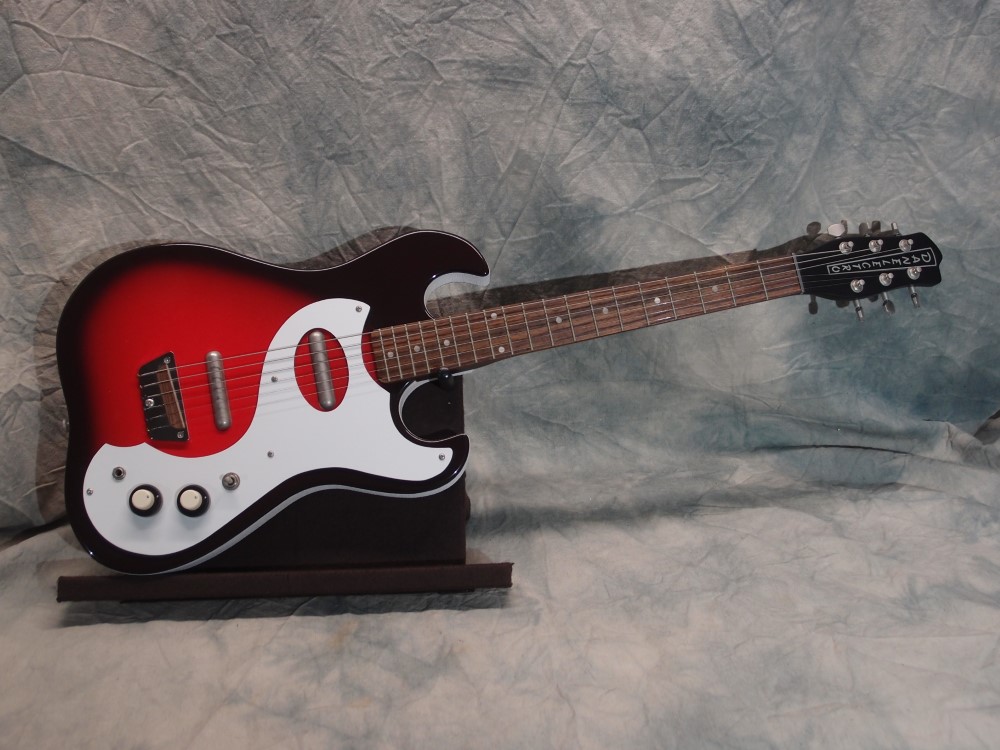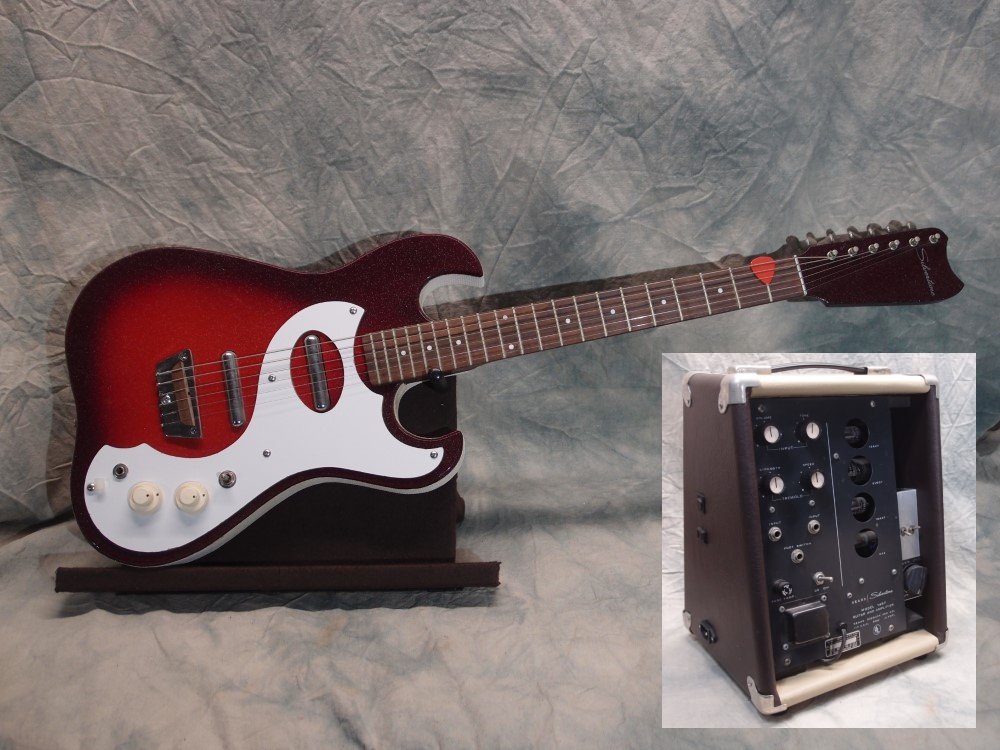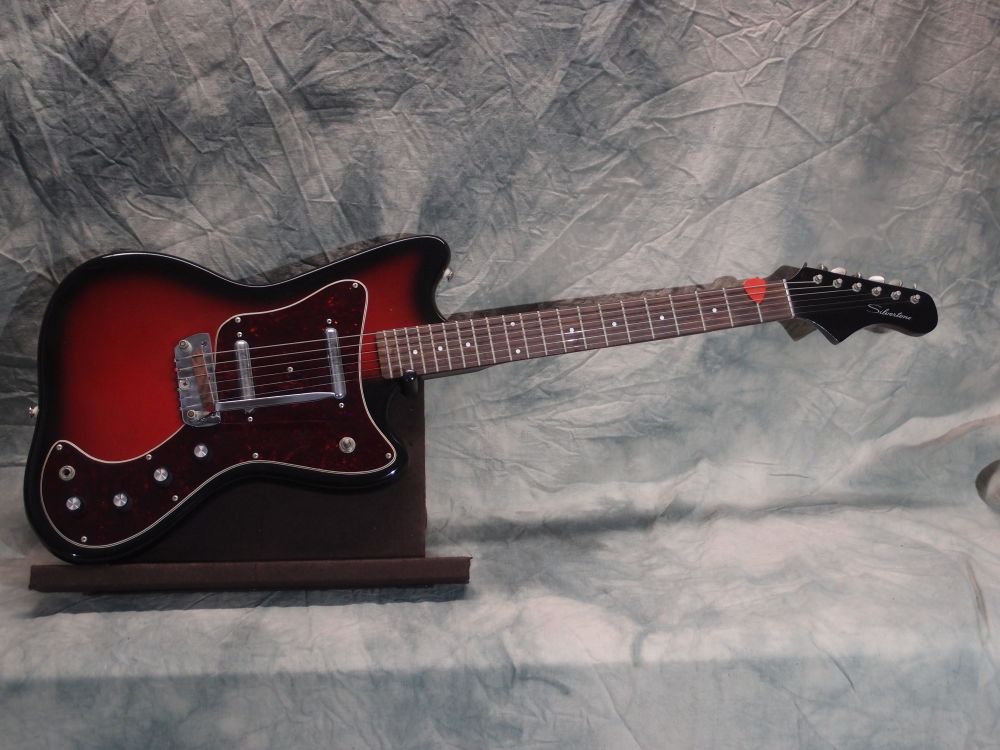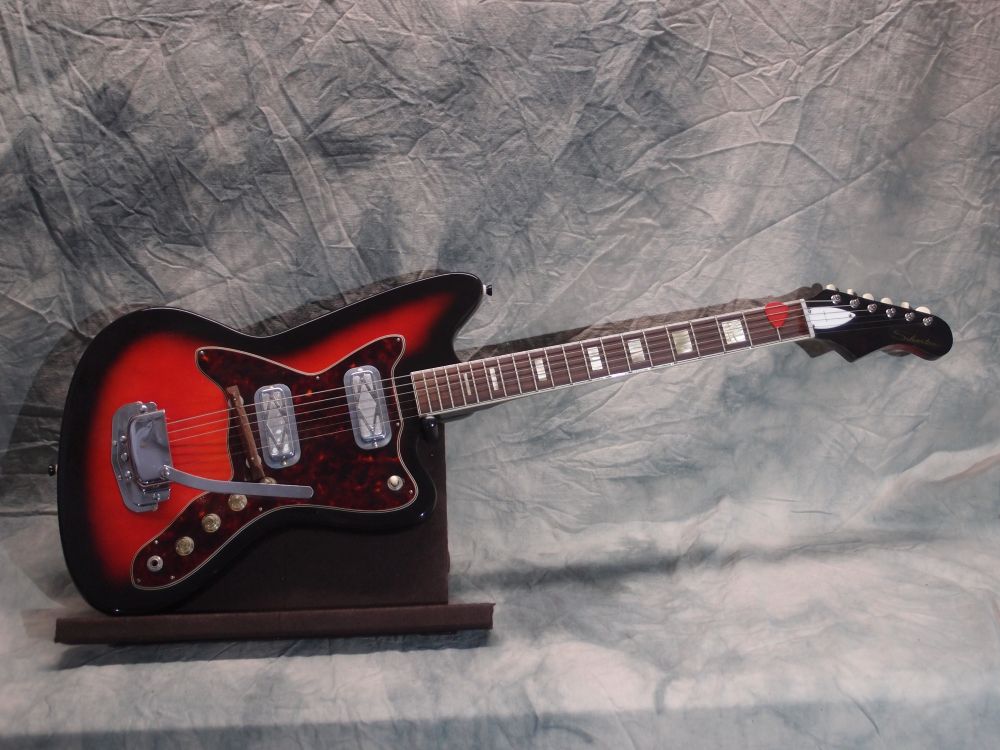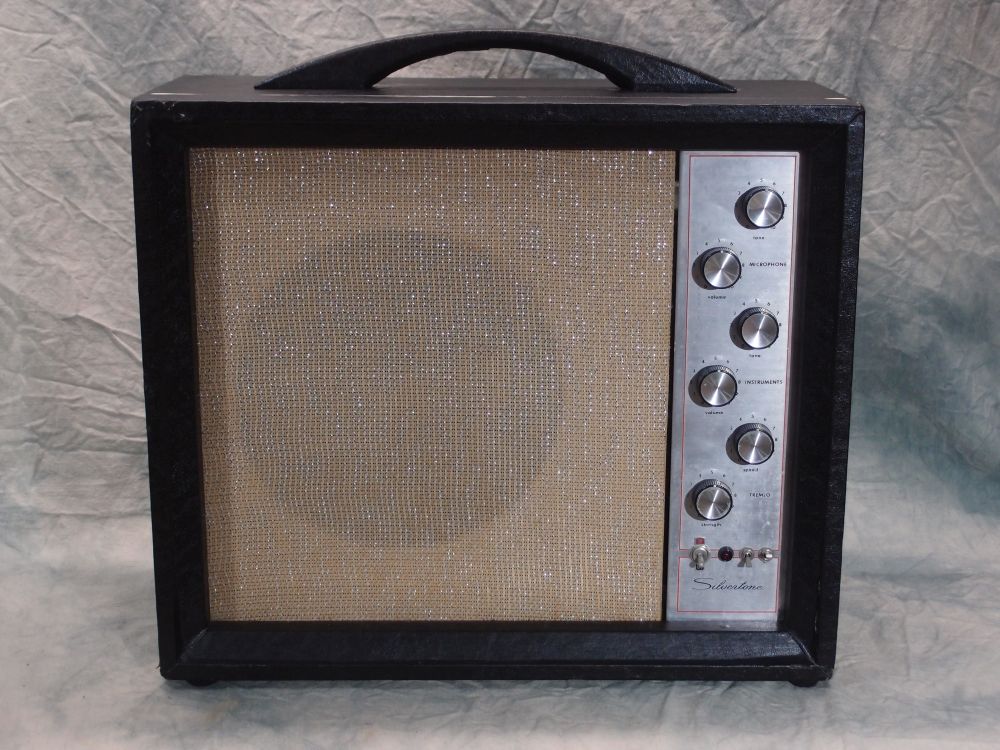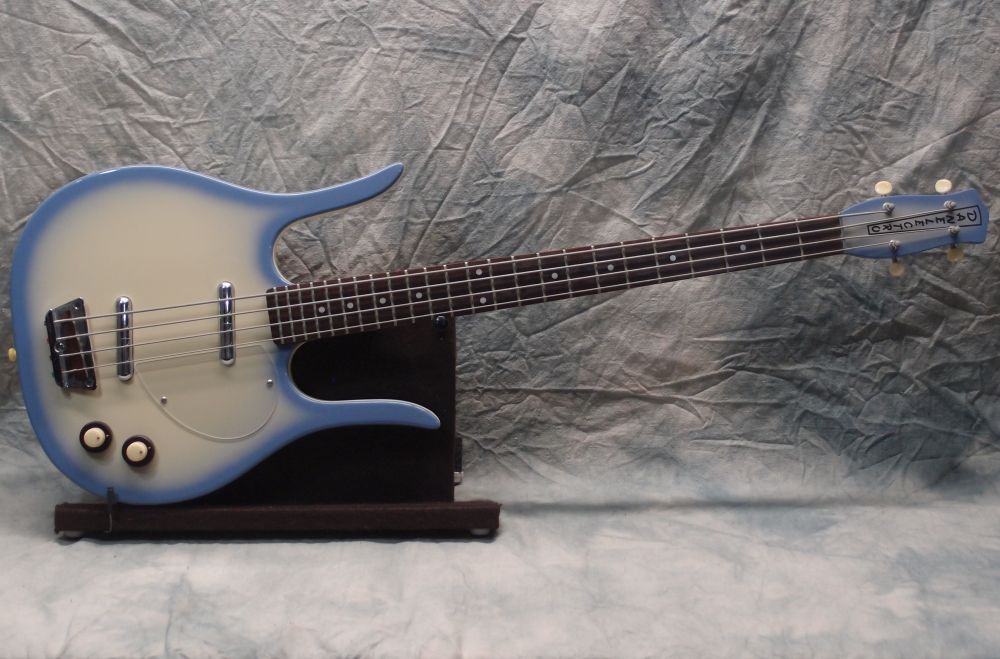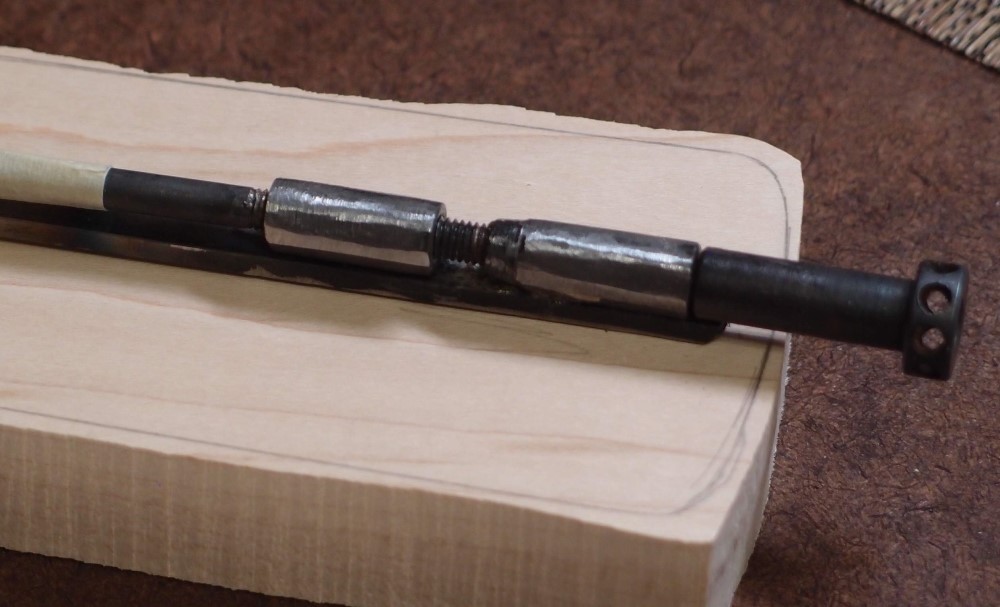Built Body
Sometimes the only way to get what you want is to build it yourself.
- Cowbell Bass Guitar
- Kubicki Factor Bass
- Osprey Bass (BC Rich Eagle)
- Audiovox 736 Bass
- Audiovox Solid-Body Bass
- Audiovox Stratocaster-Style Guitar
- Audiovox Fretless Bass
- Audiovox Uke Bass
- Audiovox Danelectro-Style Bass
- Silvertone 1443 Bass
- Jazzmaster Bass 3
- Telecaster Bass
- Rickenbacker 325 Bass 3
- Rickenbacker 325 Bass 1
- Rickenbacker 325 Guitar
- Rickenbacker 4001 Bass 1
- Reverse Fenderbird
- Mosrite Bass
- Danelectro Pro-1 Bass
- Silvertone U-1 "Dolphin" Guitar
- Silvertone 1457 "Rescue" Guitar
- Danelectro Longhorn Guitar
- Danelectro Companion Guitar
- Audiovox 12-String Guitar
- Audiovox Electric Upright Bass
- Kubicki Factor Guitar
- Rickenbacker 325 Bass 2
- Silvertone 1457 "Super 63" Guitar
- Audiovox Solid-Body Guitar
- Audiovox Mandolin




This beautiful instrument was built from a teak cutting board that I got for free from Home Depot for review. 32" Eden neck, active electronics. Teak is hard enough for a simple oiled finish. This one was built with a minimum of tools, mostly by hand, to show that it can be done and how.
More: Osprey Bass (BC Rich Eagle) ...




This was my first Audiovox project. Below is the original walnut body, fairly true to the original. My goal was to build the closest possible reproduction of the original Tutmarc Audiovox with modern parts. The ergonomics were very bad, much like a Steinberger. The headstock geometry is also not great, you can see how two of the tuners are reversed to make it work. These are expensive Gotoh tuners that are tight enough to work in reverse; I wouldn't try this with Chinese cheapies.
More: Audiovox 736 Bass ...




Together with the guitar, this was the first of my modified Audiovox design to be completed. Solid poplar bodies, stained to look like walnut, with single bindings. Each pickguard used an entire sheet of material; only these two got the pearl treatment, the rest got much less expensive masonite pickguards.
More: Audiovox Solid-Body Bass ...




This one was a testbed for the Radiata glue-up body construction. I had lots of Strat hardware lying around from all the bass projects, so I decided to use some of it. As usual for my guitars, this has a fixed steel truss rod. This is the last of my Audiovoxes, and probably my favorite.
More: Audiovox Stratocaster-Style Guitar ...




This one is almost identical in construction to the Danelectro-style - masonite over chambered plywood body, masonite pickguard. The neck is purpleheart over maple, with plastic fret lines. The soundhole merely serves as a pickup mount, and the pickup was just insurance against never getting the intended piezo system to work. Eventually, I did get it to work, the piezo is incorporated in a modified bridge, and sounds great. 30" scale.
More: Audiovox Fretless Bass ...




This bass is a 21" scale, with a piezo saddle mounted in an adjustable bridge. The soundhole is just for looks. The strings are metal-wound Kalas. The fretboard is cut out of the ugliest piece of wood I ever received. For such a small neck, I managed to cut around most of the ugly, and the result isn't half bad.
More: Audiovox Uke Bass ...




This one is a body-twin to the 12-string, but with a 30" bass neck. Everything about it is Danelectro - lipstick pickups wired in series, stacked controls, masonite pickguard, Danelectro bridge. The body is masonite over chambered plywood, oil-based poly over pearl paint.
More: Audiovox Danelectro-Style Bass ...




This is a project that took a long time, mainly due to the lacquer sunburst, which took several tries to get right. In the end, I even 'bursted the back of the neck. While it looks like an old Silvertone, it is actually thoroughly modern inside. 90's Danelectro lipstick pickups - the good ones, wired in series with a selector switch like they should be.
More: Silvertone 1443 Bass ...




Hollow plywood body with Mighty Mite 34" neck. Graphtech Ghost piezo saddles with a backup soundhole-mounted magnetic pickup, active electronics.
More: Jazzmaster Bass 3 ...




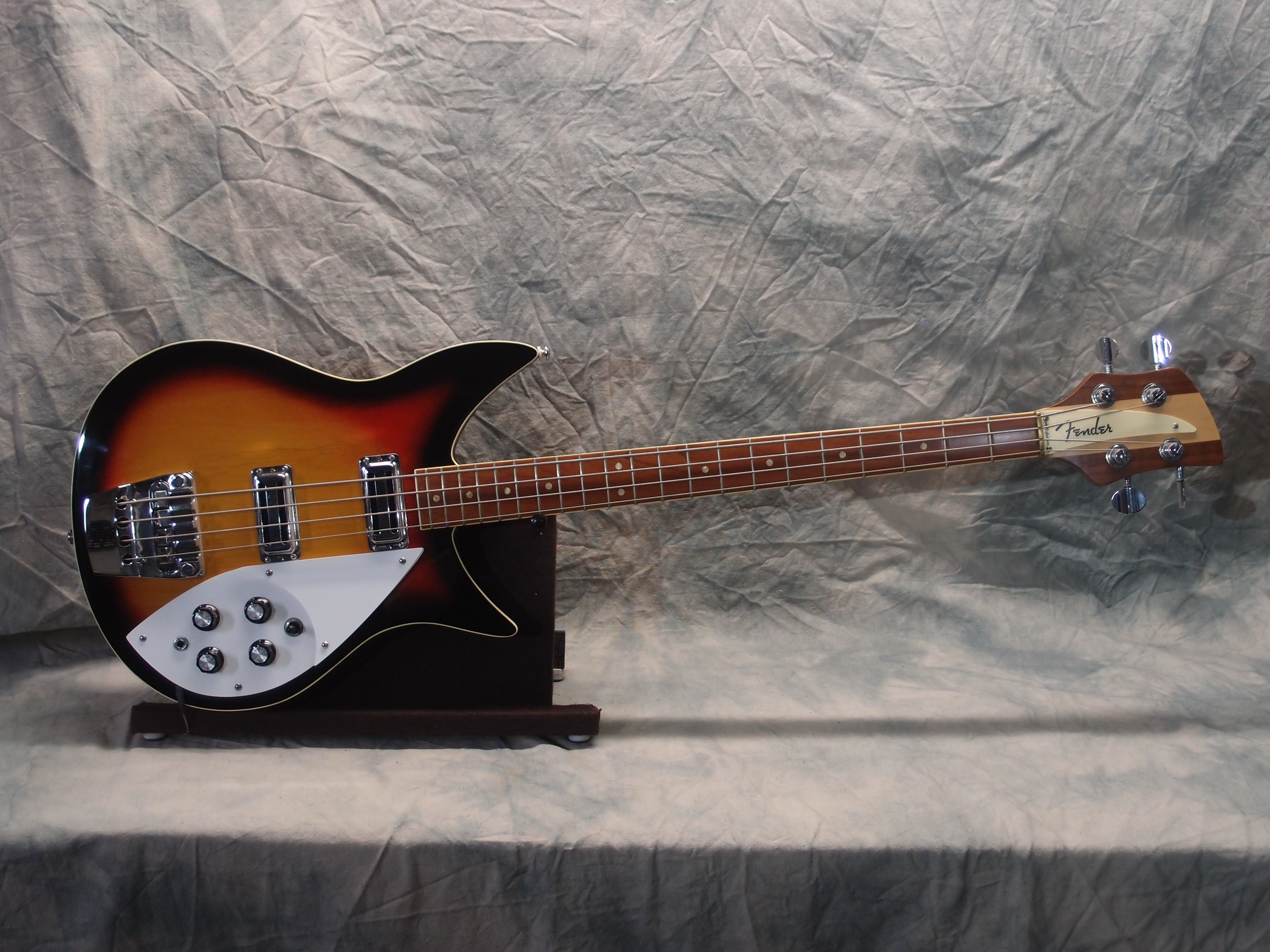
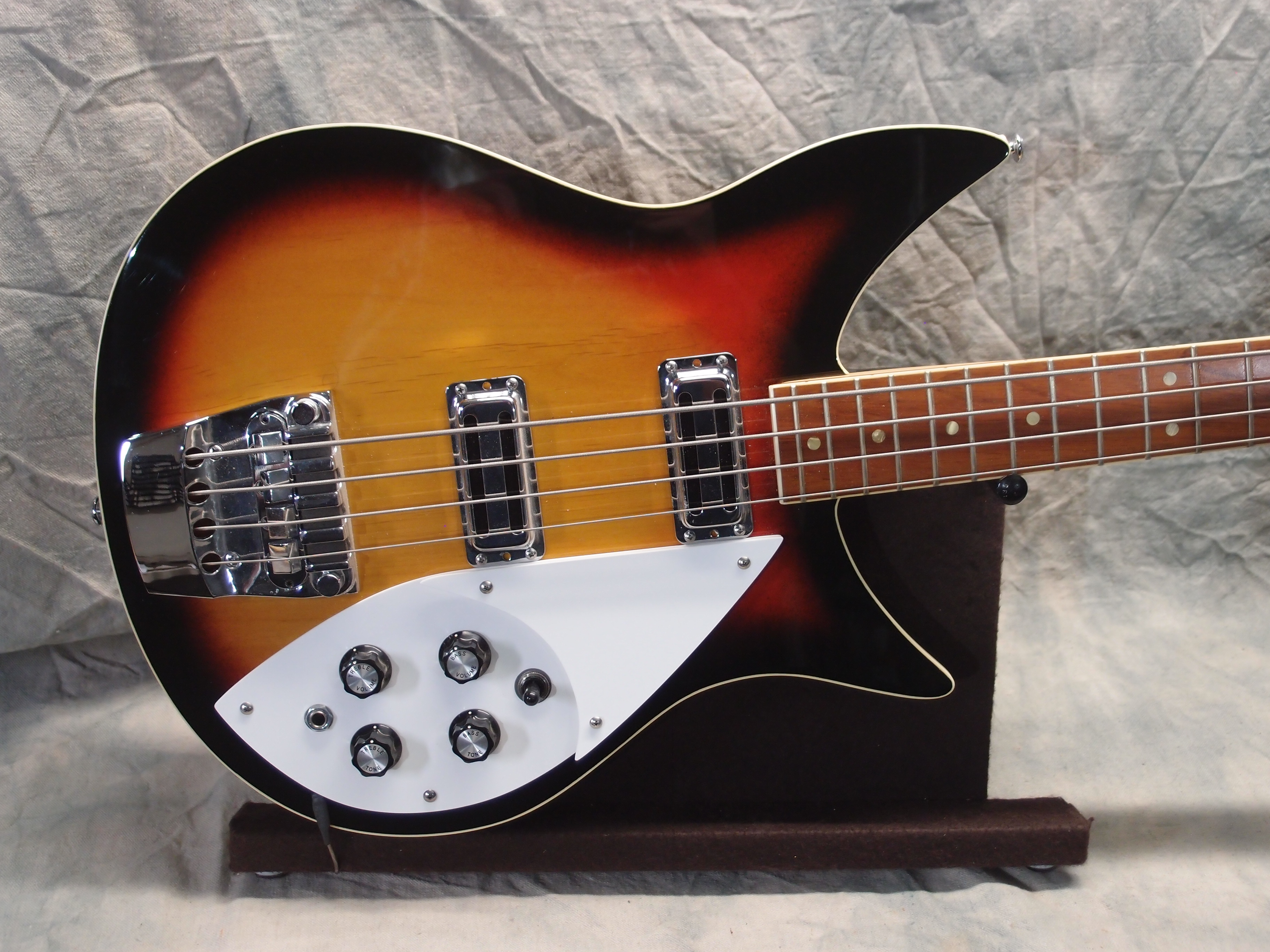
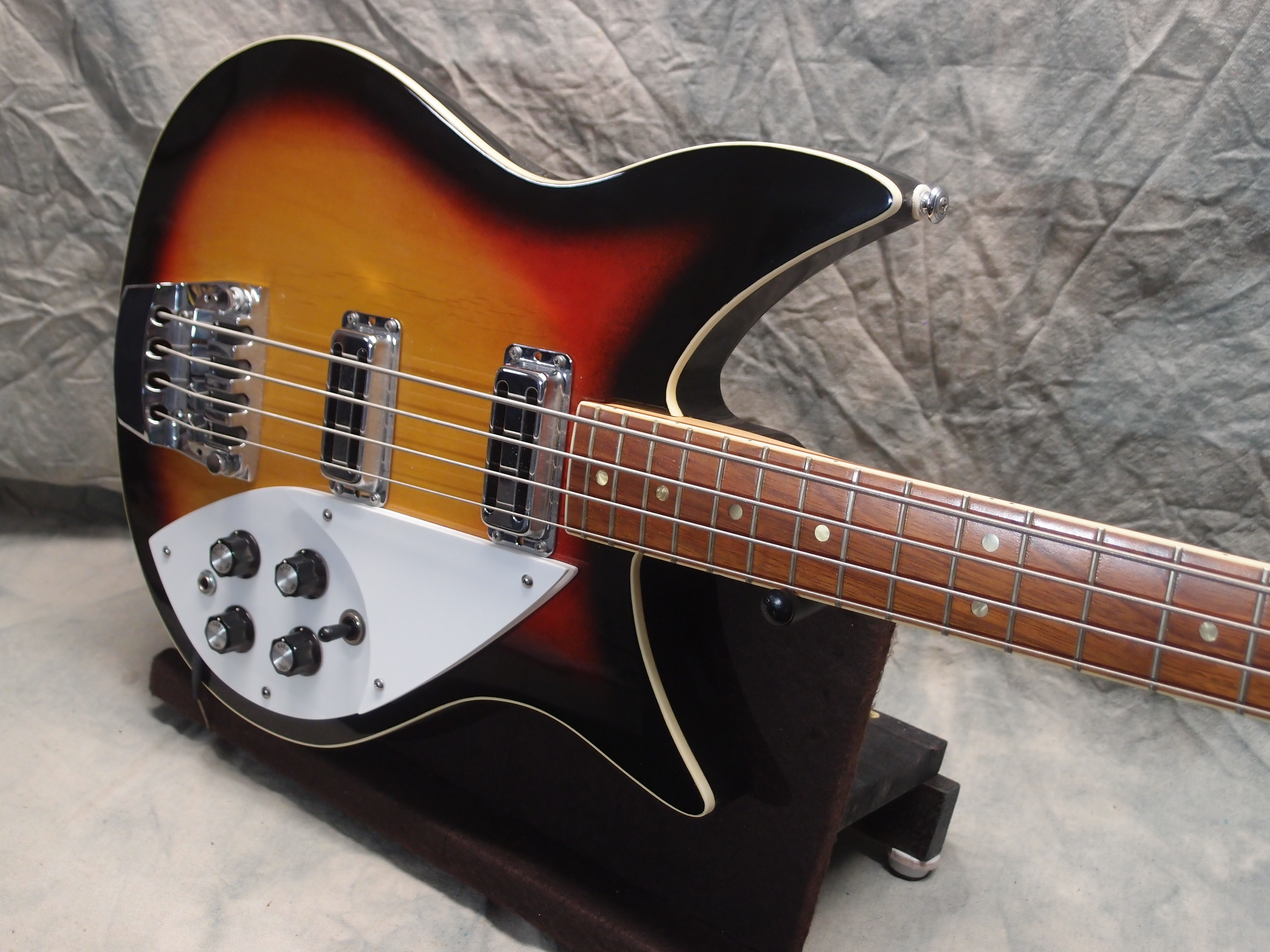
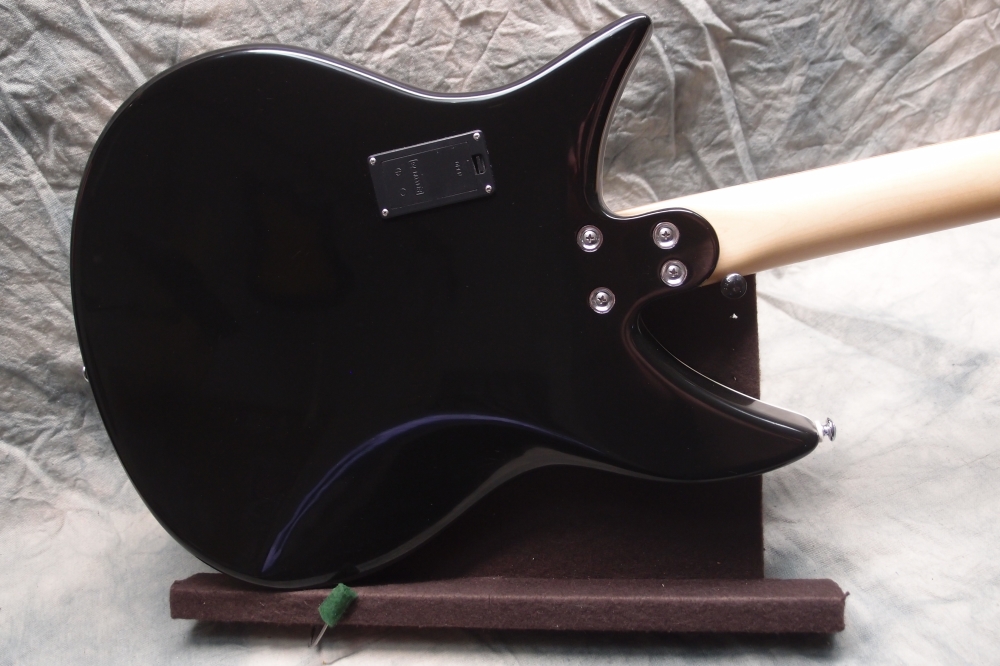

This was my third go at a 325 bass. The first one was unbalanced with this long neck, and the second suffered a router mishap. Eventually, I salvaged both of those, but first I took all the good parts and did this. Fender-type alder body with 3-tone sunburst, single binding. Surface-mounted pickups, active electronics. Finished entirely in polyurethane.
More: Rickenbacker 325 Bass 3 ...




These were my first two tries at a 325 bass. Both are plywood over pine hollow-bodies. The one on the left - #1 - used an experimental neck mounting that I didn't like. The one on the right - #2 - suffered a router mishap. I took all the good parts and built the solid-body, and both of these spent years on the scrap heap.
More: Rickenbacker 325 Bass 1 ...




A faithful reproduction of John Lennon's Rickenbacker, but built as a Danelectro. Masonite over hollow plywood body. Poplar neck. Passive electronics with active distortion on the fifth knob.
More: Rickenbacker 325 Guitar ...




This one is kind of a joke and an experiment in just how cheap you can build a guitar. The body is dry-erase board over plywood - no finish - with Tolex side binding. Dry-erase board is Masonite covered with Melamine. The neck is 100% Radiata pine, even the fretboard. The "inlays" are glitter and CA glue. The pickguard is the other side of the dry-erase board - 'chalkboard'. The pickup mount is a 57 cent switch plate.
More: Rickenbacker 4001 Bass 1 ...




Solid poplar body, lightly stained and finished in polyurethane. Korean Squire neck, active electronics. Is it a reverse, or a non-reverse? Since this is a reverse of the original Thunderbird body ( more-or-less ) I say it is a reverse. If this is a non-reverse, then the original would have to be the reverse. Reverse of what? Makes no sense.
More: Reverse Fenderbird ...




This one went through a long and torturous build process over almost two years. All I can say is don't believe the "advice" you find on talk_ass. However, in the end, it turned out to be a pretty nice instrument.
More: Mosrite Bass ...




The body was traced directly off the guitar, finished in very dark brown poly with tan Tolex. The neck is a reissue that has lain around for years. The bridge was originally left-handed, a few minutes with a file and it was right-handed. The double lipstick is switchable series/parallel/single-coil, for some variety. This is my first dry-erase pickguard.
More: Danelectro Pro-1 Bass ...




This started as a vintage neck that I got on eBay. I built a reproduction body and hunted-down old-style parts to rebuild this as authentically as possible. The finish is black nitro, which is accumulating nitro damage just from existing. Someday I should strip that garbage off and re-shoot it in polyurethane.
More: Silvertone U-1 "Dolphin" Guitar ...




This is a real Danelectro Silvertone 1452 from the 1960s. When I got it, it was a sad box of parts. Some hillbilly had stripped it, by rubbing it on the sidewalk, I think. The fretboard had delaminated, and the old repair had simply made the problem permanent. I repaired the neck and fixed all the other issues, replaced the lipstick tubes, which had split, and clear-coated the whole thing in modern poly. I was not able to fully repair the neck, there's just not enough wood left, so I don't keep it under tension. The pickguard is stained dark for contrast. I cleaned tarnish off the old metal bits with oven cleaner, and replaced all the corroded fasteners with shiny new stainless ones.
More: Silvertone 1457 "Rescue" Guitar ...




Another early build for me - 2010, a reissue Danelectro neck on a built body. The finish is pearl automotive acrylic lacquer. The pickguard is actually clear with a piece of paper under it.
More: Danelectro Longhorn Guitar ...




This was a box of junk I got on eBay, originally a vintage Convertible. I replaced the front and back with cabinet-grade birch plywood, as the original mother-of-countertop material is no longer available. I rebuilt it as something like a Companion, which is a very rare model. The neck and sides are vintage, the rest is modern.
More: Danelectro Companion Guitar ...




This twelver is a mashup of a number of different models. The body is Danelectro-style masonite over chambered plywood, with Tolex binding. The headstock is interleaved Rickenbacker, the bridge is more like a Gibson, while the overall style is my typical Audiovox.
More: Audiovox 12-String Guitar ...




This is the biggest of the Audiovoxes, weighing in at a full 12 pounds, with a 36" scale. The neck is a Brazilian Cherry (Jatoba) floorboard over maple, with a straight cutout headstock. There are over 100 marker dots. The body is veneered masonite over solid plywood, with Danelectro-style Tolex binding. There are also strap buttons, this instrument can be played vertically or horizontally.
More: Audiovox Electric Upright Bass ...




I was so pleased with the bass that I thought I'd try a guitar. This is a little more complicated, as there are six tuners rather than four, but it worked out well. The battery is for an Artec tone control that I wanted to try. More later ...
More: Kubicki Factor Guitar ...




These were my first two tries at a 325 bass. Both are plywood over pine hollow-bodies. The one on the left - #1 - used an experimental neck mounting that I didn't like. The one on the right - #2 - suffered a router mishap. I took all the good parts and built the solid-body, and both of these bodies spent years on the scrap heap.
More: Rickenbacker 325 Bass 2 ...




This is the very first guitar I ever built, a hot-rodded version of the old Silvertone 1457. This guitar uses every passive wiring trick in the book. Four - count 'em - four lipstick pickups, wired in series. Six-way pickup selector, and two phase switches. The neck is from AllParts, I paid way too much for it. The finish is glittery acrylic lacquer from the auto parts store. The knobs are from Radio Shack - remember them?
More: Silvertone 1457 "Super 63" Guitar ...




This was the first of my modified Audiovox design to be completed. Solid poplar bodies, stained to look like walnut, with single bindings. Each pickguard used an entire sheet of material; only these two got the pearl treatment, the rest got much less expensive masonite pickguards.
More: Audiovox Solid-Body Guitar ...




This body is maple plywood over a hollow pine core, double-bound. It came out very lightweight, too light to balance even a guitar neck. This was originally going to be the 12-string, but I realized that it would never balance. So I shuffled parts and bodies between some other projects - a planned six-string got canceled and became the twelver. That left this body free. I thought about it a while and decided it would make a good mandolin.
More: Audiovox Mandolin ...

